Quick filters:
Sorts our insects Stock Photos and Images
 A street vendor prepares live insects in preparation for their sale at a sidewalk food marketplace in Kampong Cham, Cambodia. Stock Photohttps://www.alamy.com/image-license-details/?v=1https://www.alamy.com/stock-photo-a-street-vendor-prepares-live-insects-in-preparation-for-their-sale-32291605.html
A street vendor prepares live insects in preparation for their sale at a sidewalk food marketplace in Kampong Cham, Cambodia. Stock Photohttps://www.alamy.com/image-license-details/?v=1https://www.alamy.com/stock-photo-a-street-vendor-prepares-live-insects-in-preparation-for-their-sale-32291605.htmlRMBTF07H–A street vendor prepares live insects in preparation for their sale at a sidewalk food marketplace in Kampong Cham, Cambodia.
 the small town of skuon or spider town cambodia where all sorts of grubs and insects are cooked for food Stock Photohttps://www.alamy.com/image-license-details/?v=1https://www.alamy.com/stock-photo-the-small-town-of-skuon-or-spider-town-cambodia-where-all-sorts-of-173045683.html
the small town of skuon or spider town cambodia where all sorts of grubs and insects are cooked for food Stock Photohttps://www.alamy.com/image-license-details/?v=1https://www.alamy.com/stock-photo-the-small-town-of-skuon-or-spider-town-cambodia-where-all-sorts-of-173045683.htmlRMM1EWEY–the small town of skuon or spider town cambodia where all sorts of grubs and insects are cooked for food
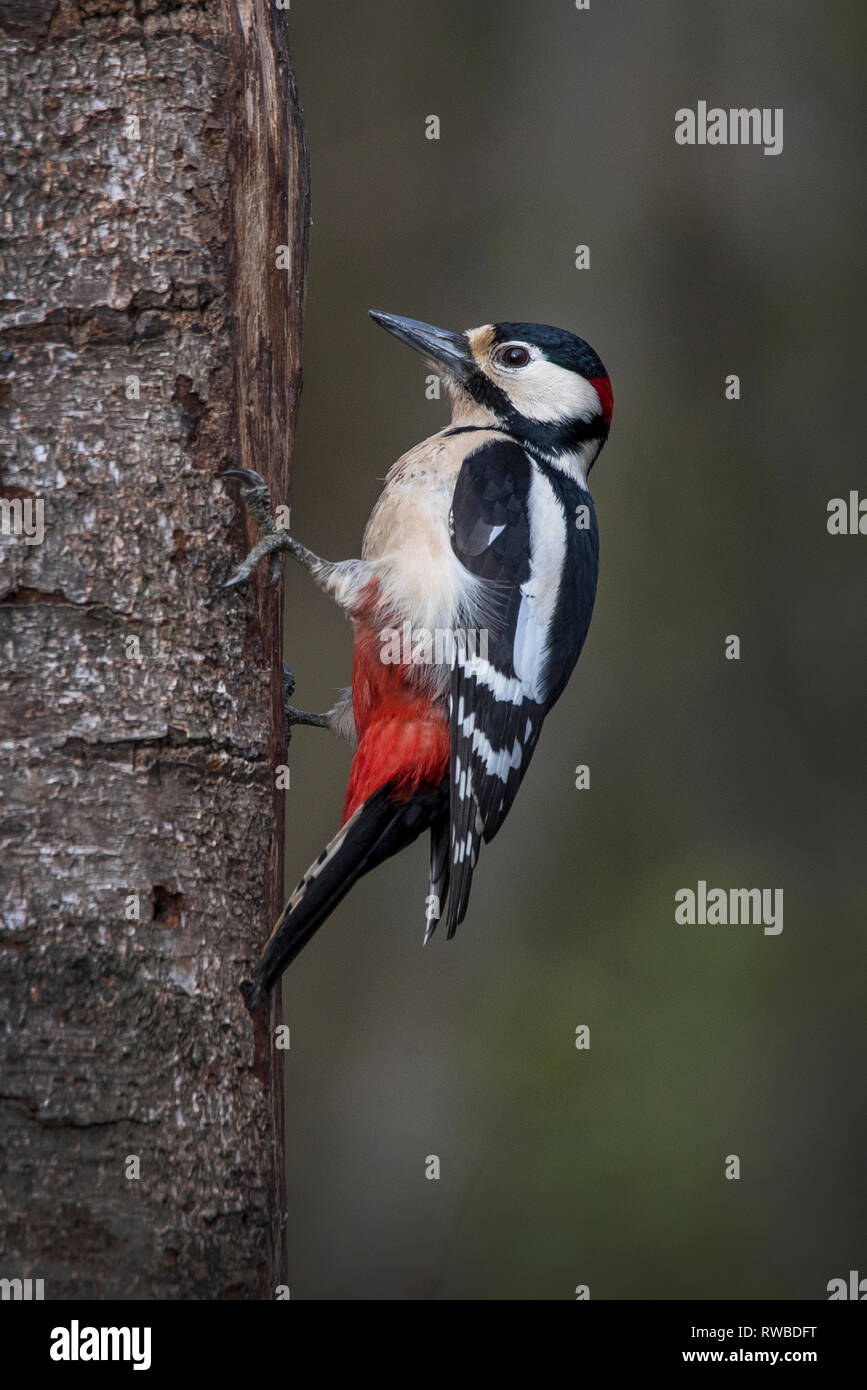 Great Spotted Woodpecker hunting for food Stock Photohttps://www.alamy.com/image-license-details/?v=1https://www.alamy.com/great-spotted-woodpecker-hunting-for-food-image239353292.html
Great Spotted Woodpecker hunting for food Stock Photohttps://www.alamy.com/image-license-details/?v=1https://www.alamy.com/great-spotted-woodpecker-hunting-for-food-image239353292.htmlRFRWBDFT–Great Spotted Woodpecker hunting for food
 Apple blossom Stock Photohttps://www.alamy.com/image-license-details/?v=1https://www.alamy.com/stock-photo-apple-blossom-93607944.html
Apple blossom Stock Photohttps://www.alamy.com/image-license-details/?v=1https://www.alamy.com/stock-photo-apple-blossom-93607944.htmlRMFC85TT–Apple blossom
 Malysia, butterfly, Malaysia contains more than 150 000 sorts of insects Stock Photohttps://www.alamy.com/image-license-details/?v=1https://www.alamy.com/malysia-butterfly-malaysia-contains-more-than-150-000-sorts-of-insects-image6825342.html
Malysia, butterfly, Malaysia contains more than 150 000 sorts of insects Stock Photohttps://www.alamy.com/image-license-details/?v=1https://www.alamy.com/malysia-butterfly-malaysia-contains-more-than-150-000-sorts-of-insects-image6825342.htmlRMA807KF–Malysia, butterfly, Malaysia contains more than 150 000 sorts of insects
 UK weather sunny day in Leeds - A sunny day at Golden Acre Park in Leeds, West Yorkshire had all sorts of insects pollinating flowers. This fly was on a hydrangea. Taken on the 30th August 2016. Stock Photohttps://www.alamy.com/image-license-details/?v=1https://www.alamy.com/stock-photo-uk-weather-sunny-day-in-leeds-a-sunny-day-at-golden-acre-park-in-leeds-189320734.html
UK weather sunny day in Leeds - A sunny day at Golden Acre Park in Leeds, West Yorkshire had all sorts of insects pollinating flowers. This fly was on a hydrangea. Taken on the 30th August 2016. Stock Photohttps://www.alamy.com/image-license-details/?v=1https://www.alamy.com/stock-photo-uk-weather-sunny-day-in-leeds-a-sunny-day-at-golden-acre-park-in-leeds-189320734.htmlRMN008EP–UK weather sunny day in Leeds - A sunny day at Golden Acre Park in Leeds, West Yorkshire had all sorts of insects pollinating flowers. This fly was on a hydrangea. Taken on the 30th August 2016.
 Flowers are pollinated by all sorts of insects these days. Subjects: Aquatic environments; Aquatic plants; Banks; Conifers; Environments (Natural); Foliage; Forests; Marine environments; Scenics; Trees; Vegetation; Wildlife refuges. Location: Alabama. Fish and Wildlife Service Site: BON SECOUR NATIONAL WILDLIFE REFUGE. Stock Photohttps://www.alamy.com/image-license-details/?v=1https://www.alamy.com/flowers-are-pollinated-by-all-sorts-of-insects-these-days-subjects-aquatic-environments-aquatic-plants-banks-conifers-environments-natural-foliage-forests-marine-environments-scenics-trees-vegetation-wildlife-refuges-location-alabama-fish-and-wildlife-service-site-bon-secour-national-wildlife-refuge-image569220717.html
Flowers are pollinated by all sorts of insects these days. Subjects: Aquatic environments; Aquatic plants; Banks; Conifers; Environments (Natural); Foliage; Forests; Marine environments; Scenics; Trees; Vegetation; Wildlife refuges. Location: Alabama. Fish and Wildlife Service Site: BON SECOUR NATIONAL WILDLIFE REFUGE. Stock Photohttps://www.alamy.com/image-license-details/?v=1https://www.alamy.com/flowers-are-pollinated-by-all-sorts-of-insects-these-days-subjects-aquatic-environments-aquatic-plants-banks-conifers-environments-natural-foliage-forests-marine-environments-scenics-trees-vegetation-wildlife-refuges-location-alabama-fish-and-wildlife-service-site-bon-secour-national-wildlife-refuge-image569220717.htmlRM2T226R9–Flowers are pollinated by all sorts of insects these days. Subjects: Aquatic environments; Aquatic plants; Banks; Conifers; Environments (Natural); Foliage; Forests; Marine environments; Scenics; Trees; Vegetation; Wildlife refuges. Location: Alabama. Fish and Wildlife Service Site: BON SECOUR NATIONAL WILDLIFE REFUGE.
 Blue globe thistle (Echinops bannaticus 'Taplow Blue', Echinops bannaticus Taplow Blue), blooming with bumble bees, Taplow Blue Stock Photohttps://www.alamy.com/image-license-details/?v=1https://www.alamy.com/blue-globe-thistle-echinops-bannaticus-taplow-blue-echinops-bannaticus-taplow-blue-blooming-with-bumble-bees-taplow-blue-image255219612.html
Blue globe thistle (Echinops bannaticus 'Taplow Blue', Echinops bannaticus Taplow Blue), blooming with bumble bees, Taplow Blue Stock Photohttps://www.alamy.com/image-license-details/?v=1https://www.alamy.com/blue-globe-thistle-echinops-bannaticus-taplow-blue-echinops-bannaticus-taplow-blue-blooming-with-bumble-bees-taplow-blue-image255219612.htmlRMTR6764–Blue globe thistle (Echinops bannaticus 'Taplow Blue', Echinops bannaticus Taplow Blue), blooming with bumble bees, Taplow Blue
 For Japaning, Where may be 200 Different Sorts, Peter P. Benazech, 1767–1794, after C. Fenn, after unknown artist, ( C. Fenn ), Published by John Ryall, active 1755–1762, British, Published by Robert Withy, active 1750–1765, British, Published by Robert Sayer, 1725–1794, British, 1757, Etching on medium, slightly textured, beige laid paper mounted on medium, textured, beige laid paper, Mount: 9 5/16 x 14 1/16 inches (23.6 x 35.7 cm) and Sheet: 7 x 10 9/16 inches (17.7 x 26.8 cm), animal art, beetles (insects), birds, branches, butterflies, cicada, cricket, dragonfly, insects, japanning, leaves Stock Photohttps://www.alamy.com/image-license-details/?v=1https://www.alamy.com/for-japaning-where-may-be-200-different-sorts-peter-p-benazech-17671794-after-c-fenn-after-unknown-artist-c-fenn-published-by-john-ryall-active-17551762-british-published-by-robert-withy-active-17501765-british-published-by-robert-sayer-17251794-british-1757-etching-on-medium-slightly-textured-beige-laid-paper-mounted-on-medium-textured-beige-laid-paper-mount-9-516-x-14-116-inches-236-x-357-cm-and-sheet-7-x-10-916-inches-177-x-268-cm-animal-art-beetles-insects-birds-branches-butterflies-cicada-cricket-dragonfly-insects-japanning-leaves-image389786573.html
For Japaning, Where may be 200 Different Sorts, Peter P. Benazech, 1767–1794, after C. Fenn, after unknown artist, ( C. Fenn ), Published by John Ryall, active 1755–1762, British, Published by Robert Withy, active 1750–1765, British, Published by Robert Sayer, 1725–1794, British, 1757, Etching on medium, slightly textured, beige laid paper mounted on medium, textured, beige laid paper, Mount: 9 5/16 x 14 1/16 inches (23.6 x 35.7 cm) and Sheet: 7 x 10 9/16 inches (17.7 x 26.8 cm), animal art, beetles (insects), birds, branches, butterflies, cicada, cricket, dragonfly, insects, japanning, leaves Stock Photohttps://www.alamy.com/image-license-details/?v=1https://www.alamy.com/for-japaning-where-may-be-200-different-sorts-peter-p-benazech-17671794-after-c-fenn-after-unknown-artist-c-fenn-published-by-john-ryall-active-17551762-british-published-by-robert-withy-active-17501765-british-published-by-robert-sayer-17251794-british-1757-etching-on-medium-slightly-textured-beige-laid-paper-mounted-on-medium-textured-beige-laid-paper-mount-9-516-x-14-116-inches-236-x-357-cm-and-sheet-7-x-10-916-inches-177-x-268-cm-animal-art-beetles-insects-birds-branches-butterflies-cicada-cricket-dragonfly-insects-japanning-leaves-image389786573.htmlRM2DJ48N1–For Japaning, Where may be 200 Different Sorts, Peter P. Benazech, 1767–1794, after C. Fenn, after unknown artist, ( C. Fenn ), Published by John Ryall, active 1755–1762, British, Published by Robert Withy, active 1750–1765, British, Published by Robert Sayer, 1725–1794, British, 1757, Etching on medium, slightly textured, beige laid paper mounted on medium, textured, beige laid paper, Mount: 9 5/16 x 14 1/16 inches (23.6 x 35.7 cm) and Sheet: 7 x 10 9/16 inches (17.7 x 26.8 cm), animal art, beetles (insects), birds, branches, butterflies, cicada, cricket, dragonfly, insects, japanning, leaves
 March 1, 2023, Carmel by the Sea, California, US: At low tide, Sandpipers can be seen chasing back-and-forth as the waves crest and ebb, .but this behavior is not cooperative. Everyone for themselves.They eat all sorts of insects, pelagic worms, tiny crustaceans, .crab eggs, and washed-up jellyfish. (Credit Image: © Rory Merry/ZUMA Press Wire) EDITORIAL USAGE ONLY! Not for Commercial USAGE! Stock Photohttps://www.alamy.com/image-license-details/?v=1https://www.alamy.com/march-1-2023-carmel-by-the-sea-california-us-at-low-tide-sandpipers-can-be-seen-chasing-back-and-forth-as-the-waves-crest-and-ebb-but-this-behavior-is-not-cooperative-everyone-for-themselvesthey-eat-all-sorts-of-insects-pelagic-worms-tiny-crustaceans-crab-eggs-and-washed-up-jellyfish-credit-image-rory-merryzuma-press-wire-editorial-usage-only!-not-for-commercial-usage!-image532892059.html
March 1, 2023, Carmel by the Sea, California, US: At low tide, Sandpipers can be seen chasing back-and-forth as the waves crest and ebb, .but this behavior is not cooperative. Everyone for themselves.They eat all sorts of insects, pelagic worms, tiny crustaceans, .crab eggs, and washed-up jellyfish. (Credit Image: © Rory Merry/ZUMA Press Wire) EDITORIAL USAGE ONLY! Not for Commercial USAGE! Stock Photohttps://www.alamy.com/image-license-details/?v=1https://www.alamy.com/march-1-2023-carmel-by-the-sea-california-us-at-low-tide-sandpipers-can-be-seen-chasing-back-and-forth-as-the-waves-crest-and-ebb-but-this-behavior-is-not-cooperative-everyone-for-themselvesthey-eat-all-sorts-of-insects-pelagic-worms-tiny-crustaceans-crab-eggs-and-washed-up-jellyfish-credit-image-rory-merryzuma-press-wire-editorial-usage-only!-not-for-commercial-usage!-image532892059.htmlRM2NXY977–March 1, 2023, Carmel by the Sea, California, US: At low tide, Sandpipers can be seen chasing back-and-forth as the waves crest and ebb, .but this behavior is not cooperative. Everyone for themselves.They eat all sorts of insects, pelagic worms, tiny crustaceans, .crab eggs, and washed-up jellyfish. (Credit Image: © Rory Merry/ZUMA Press Wire) EDITORIAL USAGE ONLY! Not for Commercial USAGE!
 Red boneset (Eupatorium fistulosum), variety 'Atropurpureum', with bees, Germany, Europe Stock Photohttps://www.alamy.com/image-license-details/?v=1https://www.alamy.com/red-boneset-eupatorium-fistulosum-variety-atropurpureum-with-bees-germany-europe-image619740749.html
Red boneset (Eupatorium fistulosum), variety 'Atropurpureum', with bees, Germany, Europe Stock Photohttps://www.alamy.com/image-license-details/?v=1https://www.alamy.com/red-boneset-eupatorium-fistulosum-variety-atropurpureum-with-bees-germany-europe-image619740749.htmlRM2Y07HJ5–Red boneset (Eupatorium fistulosum), variety 'Atropurpureum', with bees, Germany, Europe
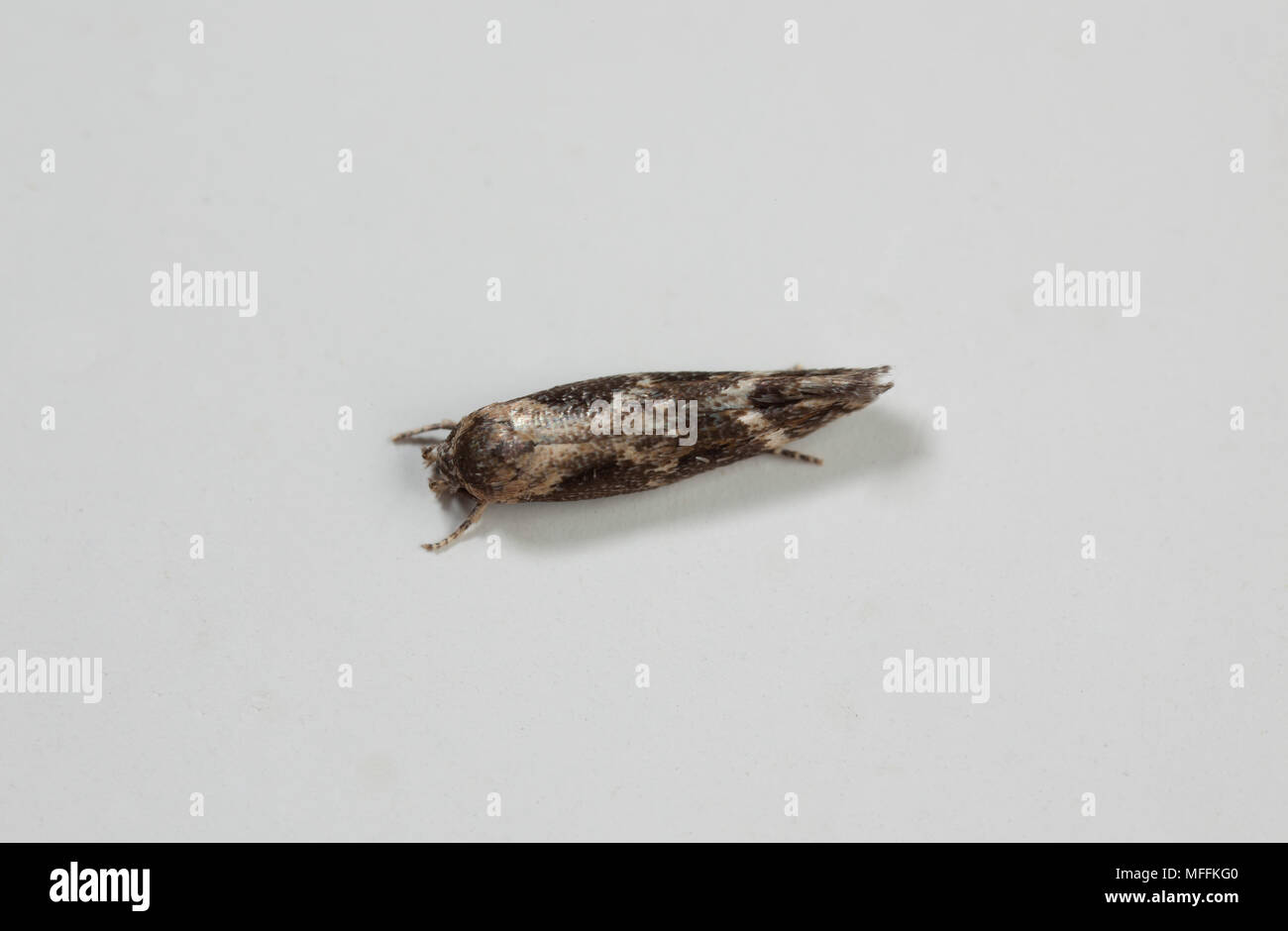 CLOTHES MOTH Stock Photohttps://www.alamy.com/image-license-details/?v=1https://www.alamy.com/clothes-moth-image181668144.html
CLOTHES MOTH Stock Photohttps://www.alamy.com/image-license-details/?v=1https://www.alamy.com/clothes-moth-image181668144.htmlRMMFFKG0–CLOTHES MOTH
 Cranesbill (Geranium), variety Rozanne with Large Marsh Hoverfly (Helophilus trivittatus), Germany, Europe Stock Photohttps://www.alamy.com/image-license-details/?v=1https://www.alamy.com/cranesbill-geranium-variety-rozanne-with-large-marsh-hoverfly-helophilus-trivittatus-germany-europe-image619740104.html
Cranesbill (Geranium), variety Rozanne with Large Marsh Hoverfly (Helophilus trivittatus), Germany, Europe Stock Photohttps://www.alamy.com/image-license-details/?v=1https://www.alamy.com/cranesbill-geranium-variety-rozanne-with-large-marsh-hoverfly-helophilus-trivittatus-germany-europe-image619740104.htmlRM2Y07GR4–Cranesbill (Geranium), variety Rozanne with Large Marsh Hoverfly (Helophilus trivittatus), Germany, Europe
 panorama of blooming apple tree Stock Photohttps://www.alamy.com/image-license-details/?v=1https://www.alamy.com/stock-photo-panorama-of-blooming-apple-tree-80180426.html
panorama of blooming apple tree Stock Photohttps://www.alamy.com/image-license-details/?v=1https://www.alamy.com/stock-photo-panorama-of-blooming-apple-tree-80180426.htmlRFEJCEXJ–panorama of blooming apple tree
 Peacock (Inachis io), Small Tortoiseshell (Aglais), with Meadow Brown (Maniola jurtina) Butterflies behind on Buddleia flowers. Stock Photohttps://www.alamy.com/image-license-details/?v=1https://www.alamy.com/stock-photo-peacock-inachis-io-small-tortoiseshell-aglais-with-meadow-brown-maniola-59661840.html
Peacock (Inachis io), Small Tortoiseshell (Aglais), with Meadow Brown (Maniola jurtina) Butterflies behind on Buddleia flowers. Stock Photohttps://www.alamy.com/image-license-details/?v=1https://www.alamy.com/stock-photo-peacock-inachis-io-small-tortoiseshell-aglais-with-meadow-brown-maniola-59661840.htmlRMDD1R80–Peacock (Inachis io), Small Tortoiseshell (Aglais), with Meadow Brown (Maniola jurtina) Butterflies behind on Buddleia flowers.
 Vending stall for grilled and salted cockroaches as a snack, Phnom Penh, Cambodia, Southeast Asia Stock Photohttps://www.alamy.com/image-license-details/?v=1https://www.alamy.com/vending-stall-for-grilled-and-salted-cockroaches-as-a-snack-phnom-image61868841.html
Vending stall for grilled and salted cockroaches as a snack, Phnom Penh, Cambodia, Southeast Asia Stock Photohttps://www.alamy.com/image-license-details/?v=1https://www.alamy.com/vending-stall-for-grilled-and-salted-cockroaches-as-a-snack-phnom-image61868841.htmlRMDGJA9D–Vending stall for grilled and salted cockroaches as a snack, Phnom Penh, Cambodia, Southeast Asia
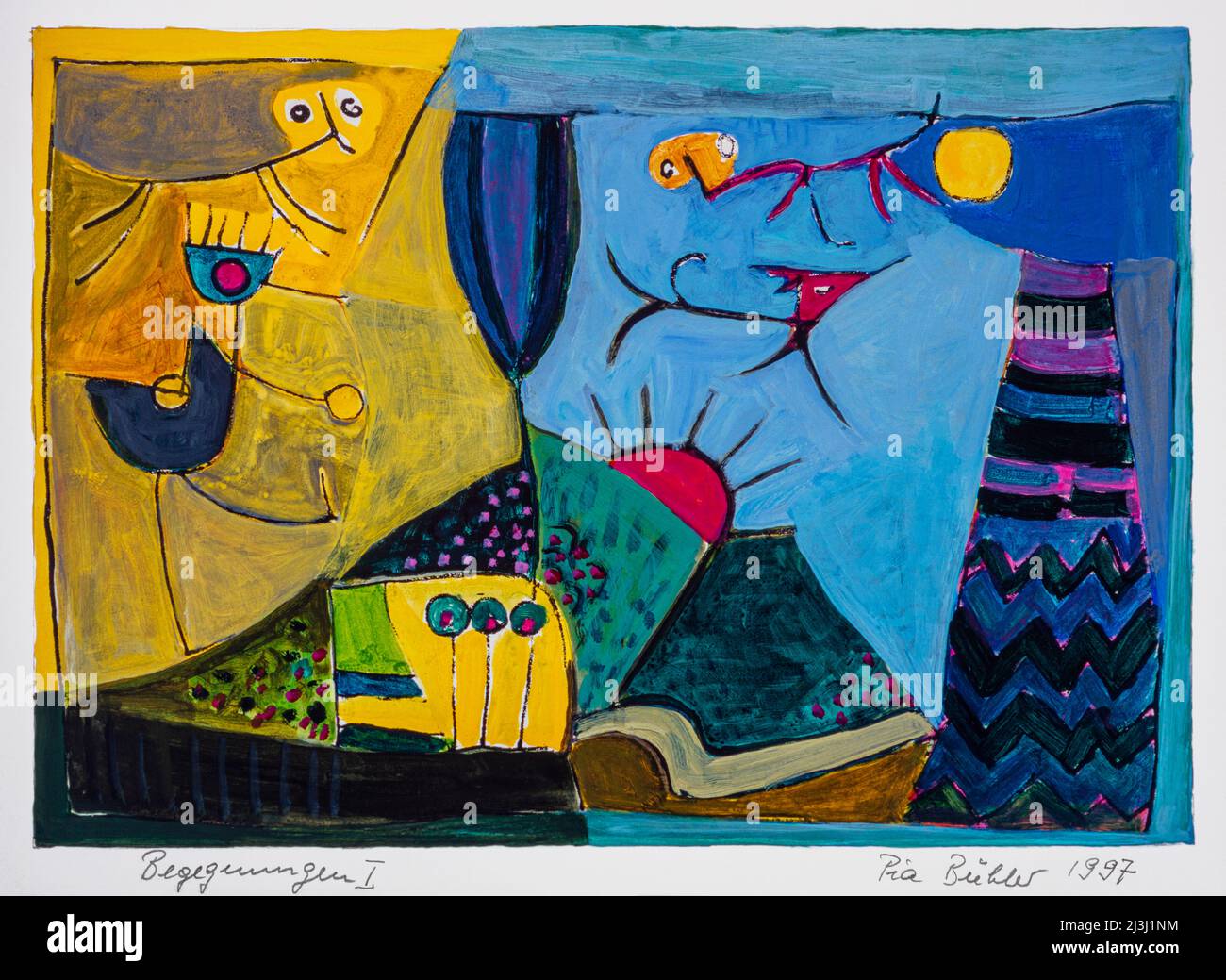 Painting by Pia Bühler, lithography and acrylic fantasy figures, fantastic creatures, birds and insects meet at night, some are lit up Stock Photohttps://www.alamy.com/image-license-details/?v=1https://www.alamy.com/painting-by-pia-bhler-lithography-and-acrylic-fantasy-figures-fantastic-creatures-birds-and-insects-meet-at-night-some-are-lit-up-image466920432.html
Painting by Pia Bühler, lithography and acrylic fantasy figures, fantastic creatures, birds and insects meet at night, some are lit up Stock Photohttps://www.alamy.com/image-license-details/?v=1https://www.alamy.com/painting-by-pia-bhler-lithography-and-acrylic-fantasy-figures-fantastic-creatures-birds-and-insects-meet-at-night-some-are-lit-up-image466920432.htmlRM2J3J1NM–Painting by Pia Bühler, lithography and acrylic fantasy figures, fantastic creatures, birds and insects meet at night, some are lit up
 Pink flowers of the climbing rose, cultivar American Pillar (Rosa), with honey bee (Apis), Bavaria, Germany Stock Photohttps://www.alamy.com/image-license-details/?v=1https://www.alamy.com/stock-photo-pink-flowers-of-the-climbing-rose-cultivar-american-pillar-rosa-with-120953898.html
Pink flowers of the climbing rose, cultivar American Pillar (Rosa), with honey bee (Apis), Bavaria, Germany Stock Photohttps://www.alamy.com/image-license-details/?v=1https://www.alamy.com/stock-photo-pink-flowers-of-the-climbing-rose-cultivar-american-pillar-rosa-with-120953898.htmlRFH0NWX2–Pink flowers of the climbing rose, cultivar American Pillar (Rosa), with honey bee (Apis), Bavaria, Germany
 Rosa, Hybrid-rose, with bee Stock Photohttps://www.alamy.com/image-license-details/?v=1https://www.alamy.com/stock-photo-rosa-hybrid-rose-with-bee-174931152.html
Rosa, Hybrid-rose, with bee Stock Photohttps://www.alamy.com/image-license-details/?v=1https://www.alamy.com/stock-photo-rosa-hybrid-rose-with-bee-174931152.htmlRMM4GPD4–Rosa, Hybrid-rose, with bee
 A street vendor prepares live insects in preparation for their sale at a sidewalk food marketplace in Kampong Cham, Cambodia. Stock Photohttps://www.alamy.com/image-license-details/?v=1https://www.alamy.com/stock-photo-a-street-vendor-prepares-live-insects-in-preparation-for-their-sale-31969820.html
A street vendor prepares live insects in preparation for their sale at a sidewalk food marketplace in Kampong Cham, Cambodia. Stock Photohttps://www.alamy.com/image-license-details/?v=1https://www.alamy.com/stock-photo-a-street-vendor-prepares-live-insects-in-preparation-for-their-sale-31969820.htmlRMBT09R8–A street vendor prepares live insects in preparation for their sale at a sidewalk food marketplace in Kampong Cham, Cambodia.
 the small town of skuon or spider town cambodia where all sorts of grubs and insects are cooked for food Stock Photohttps://www.alamy.com/image-license-details/?v=1https://www.alamy.com/stock-photo-the-small-town-of-skuon-or-spider-town-cambodia-where-all-sorts-of-173045888.html
the small town of skuon or spider town cambodia where all sorts of grubs and insects are cooked for food Stock Photohttps://www.alamy.com/image-license-details/?v=1https://www.alamy.com/stock-photo-the-small-town-of-skuon-or-spider-town-cambodia-where-all-sorts-of-173045888.htmlRMM1EWP8–the small town of skuon or spider town cambodia where all sorts of grubs and insects are cooked for food
 Artificial insect home Stock Photohttps://www.alamy.com/image-license-details/?v=1https://www.alamy.com/stock-photo-artificial-insect-home-128804440.html
Artificial insect home Stock Photohttps://www.alamy.com/image-license-details/?v=1https://www.alamy.com/stock-photo-artificial-insect-home-128804440.htmlRFHDFFAG–Artificial insect home
 Rosa Alain Blanchard, bee Stock Photohttps://www.alamy.com/image-license-details/?v=1https://www.alamy.com/rosa-alain-blanchard-bee-image567818984.html
Rosa Alain Blanchard, bee Stock Photohttps://www.alamy.com/image-license-details/?v=1https://www.alamy.com/rosa-alain-blanchard-bee-image567818984.htmlRF2RYPAWC–Rosa Alain Blanchard, bee
 Fresh honey of different sorts in glass jars with lids held for sale at the fair. Stock Photohttps://www.alamy.com/image-license-details/?v=1https://www.alamy.com/stock-image-fresh-honey-of-different-sorts-in-glass-jars-with-lids-held-for-sale-162357764.html
Fresh honey of different sorts in glass jars with lids held for sale at the fair. Stock Photohttps://www.alamy.com/image-license-details/?v=1https://www.alamy.com/stock-image-fresh-honey-of-different-sorts-in-glass-jars-with-lids-held-for-sale-162357764.htmlRFKC40YG–Fresh honey of different sorts in glass jars with lids held for sale at the fair.
 UK weather sunny day in Leeds - A sunny day at Golden Acre Park in Leeds, West Yorkshire had all sorts of insects pollinating flowers. This fly was on a hydrangea. Taken on the 30th August 2016. Stock Photohttps://www.alamy.com/image-license-details/?v=1https://www.alamy.com/stock-photo-uk-weather-sunny-day-in-leeds-a-sunny-day-at-golden-acre-park-in-leeds-189320735.html
UK weather sunny day in Leeds - A sunny day at Golden Acre Park in Leeds, West Yorkshire had all sorts of insects pollinating flowers. This fly was on a hydrangea. Taken on the 30th August 2016. Stock Photohttps://www.alamy.com/image-license-details/?v=1https://www.alamy.com/stock-photo-uk-weather-sunny-day-in-leeds-a-sunny-day-at-golden-acre-park-in-leeds-189320735.htmlRMN008ER–UK weather sunny day in Leeds - A sunny day at Golden Acre Park in Leeds, West Yorkshire had all sorts of insects pollinating flowers. This fly was on a hydrangea. Taken on the 30th August 2016.
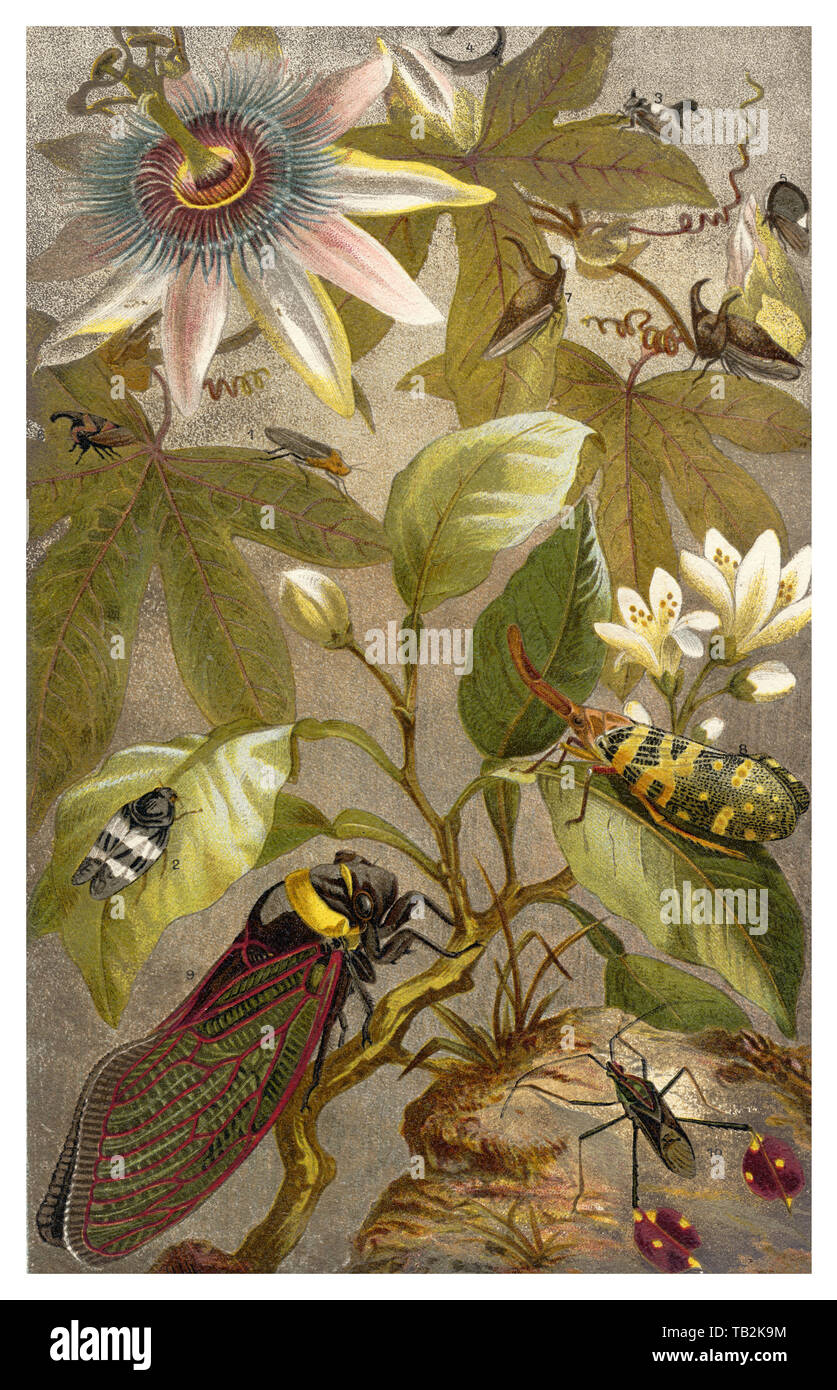 Cicadas (Auchenorrhyncha, Hemiptera), insects, Historische, zeichnerische Darstellung, Zikaden oder Auchenorrhyncha, Insekten, Schnabelkerfen (Hemiptera) , 19. Jahrhundert, aus Meyers Konversations-Lexikon von 1890 Stock Photohttps://www.alamy.com/image-license-details/?v=1https://www.alamy.com/cicadas-auchenorrhyncha-hemiptera-insects-historische-zeichnerische-darstellung-zikaden-oder-auchenorrhyncha-insekten-schnabelkerfen-hemiptera-19-jahrhundert-aus-meyers-konversations-lexikon-von-1890-image247765440.html
Cicadas (Auchenorrhyncha, Hemiptera), insects, Historische, zeichnerische Darstellung, Zikaden oder Auchenorrhyncha, Insekten, Schnabelkerfen (Hemiptera) , 19. Jahrhundert, aus Meyers Konversations-Lexikon von 1890 Stock Photohttps://www.alamy.com/image-license-details/?v=1https://www.alamy.com/cicadas-auchenorrhyncha-hemiptera-insects-historische-zeichnerische-darstellung-zikaden-oder-auchenorrhyncha-insekten-schnabelkerfen-hemiptera-19-jahrhundert-aus-meyers-konversations-lexikon-von-1890-image247765440.htmlRMTB2K9M–Cicadas (Auchenorrhyncha, Hemiptera), insects, Historische, zeichnerische Darstellung, Zikaden oder Auchenorrhyncha, Insekten, Schnabelkerfen (Hemiptera) , 19. Jahrhundert, aus Meyers Konversations-Lexikon von 1890
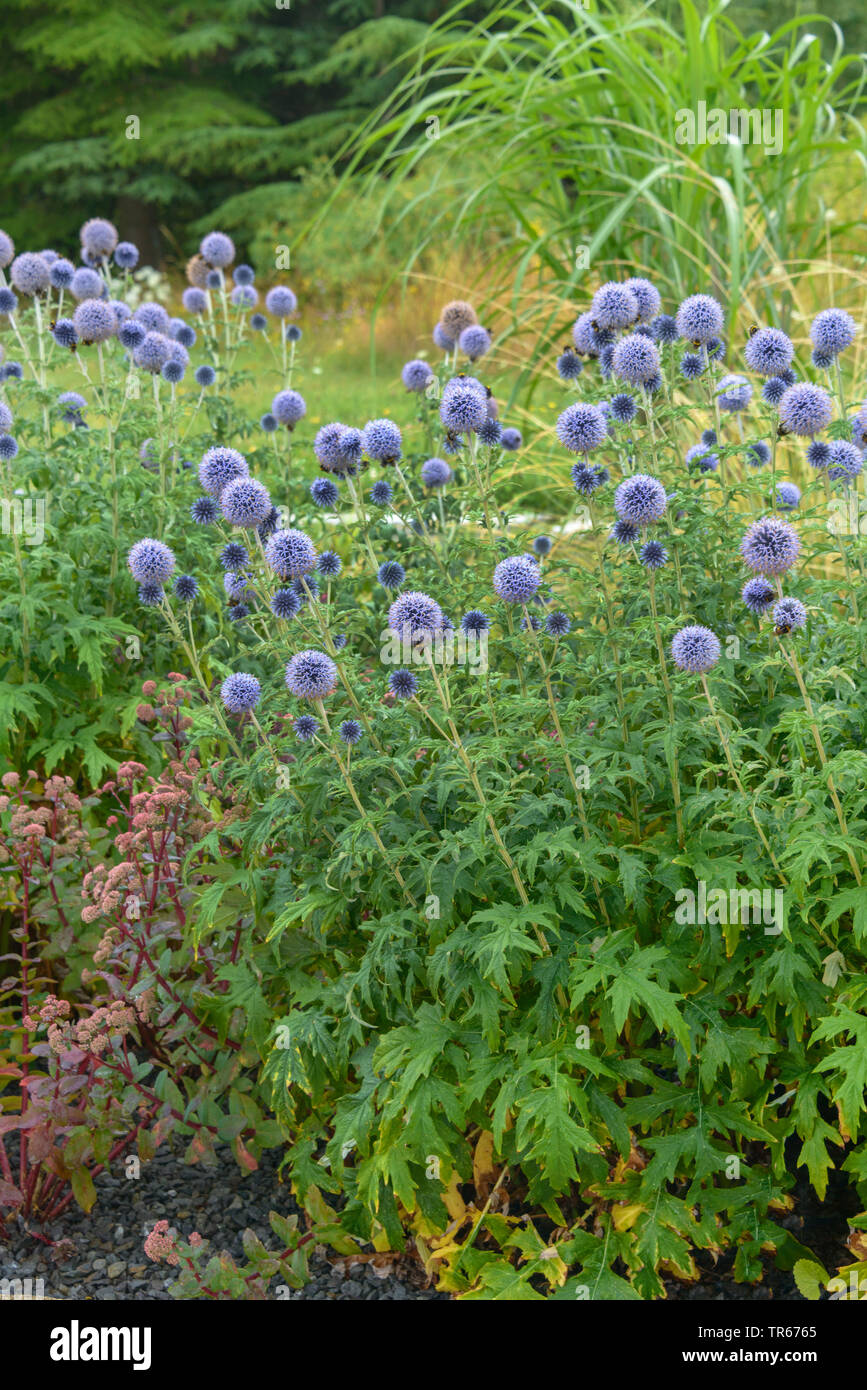 Blue globe thistle (Echinops bannaticus 'Taplow Blue', Echinops bannaticus Taplow Blue), blooming with bumble bees, Taplow Blue Stock Photohttps://www.alamy.com/image-license-details/?v=1https://www.alamy.com/blue-globe-thistle-echinops-bannaticus-taplow-blue-echinops-bannaticus-taplow-blue-blooming-with-bumble-bees-taplow-blue-image255219613.html
Blue globe thistle (Echinops bannaticus 'Taplow Blue', Echinops bannaticus Taplow Blue), blooming with bumble bees, Taplow Blue Stock Photohttps://www.alamy.com/image-license-details/?v=1https://www.alamy.com/blue-globe-thistle-echinops-bannaticus-taplow-blue-echinops-bannaticus-taplow-blue-blooming-with-bumble-bees-taplow-blue-image255219613.htmlRMTR6765–Blue globe thistle (Echinops bannaticus 'Taplow Blue', Echinops bannaticus Taplow Blue), blooming with bumble bees, Taplow Blue
 For Japaning, Where may be 200 Different Sorts, Peter P. Benazech, 1767–1794, after C. Fenn, after unknown artist, ( C. Fenn ), Published by John Ryall, active 1755–1762, British, Published by Robert Withy, active 1750–1765, British, Published by Robert Sayer, 1725–1794, British, 1757, Etching on medium, slightly textured, beige laid paper mounted on medium, textured, beige laid paper, Mount: 9 7/16 x 14 3/16 inches (24 x 36 cm) and Sheet: 7 7/8 x 11 3/16 inches (20.1 x 28.4 cm), animal art, apples, birds, butterflies, cherries, flowers (plants), fruit, gourds, insects, japanning, mosquito Stock Photohttps://www.alamy.com/image-license-details/?v=1https://www.alamy.com/for-japaning-where-may-be-200-different-sorts-peter-p-benazech-17671794-after-c-fenn-after-unknown-artist-c-fenn-published-by-john-ryall-active-17551762-british-published-by-robert-withy-active-17501765-british-published-by-robert-sayer-17251794-british-1757-etching-on-medium-slightly-textured-beige-laid-paper-mounted-on-medium-textured-beige-laid-paper-mount-9-716-x-14-316-inches-24-x-36-cm-and-sheet-7-78-x-11-316-inches-201-x-284-cm-animal-art-apples-birds-butterflies-cherries-flowers-plants-fruit-gourds-insects-japanning-mosquito-image389786562.html
For Japaning, Where may be 200 Different Sorts, Peter P. Benazech, 1767–1794, after C. Fenn, after unknown artist, ( C. Fenn ), Published by John Ryall, active 1755–1762, British, Published by Robert Withy, active 1750–1765, British, Published by Robert Sayer, 1725–1794, British, 1757, Etching on medium, slightly textured, beige laid paper mounted on medium, textured, beige laid paper, Mount: 9 7/16 x 14 3/16 inches (24 x 36 cm) and Sheet: 7 7/8 x 11 3/16 inches (20.1 x 28.4 cm), animal art, apples, birds, butterflies, cherries, flowers (plants), fruit, gourds, insects, japanning, mosquito Stock Photohttps://www.alamy.com/image-license-details/?v=1https://www.alamy.com/for-japaning-where-may-be-200-different-sorts-peter-p-benazech-17671794-after-c-fenn-after-unknown-artist-c-fenn-published-by-john-ryall-active-17551762-british-published-by-robert-withy-active-17501765-british-published-by-robert-sayer-17251794-british-1757-etching-on-medium-slightly-textured-beige-laid-paper-mounted-on-medium-textured-beige-laid-paper-mount-9-716-x-14-316-inches-24-x-36-cm-and-sheet-7-78-x-11-316-inches-201-x-284-cm-animal-art-apples-birds-butterflies-cherries-flowers-plants-fruit-gourds-insects-japanning-mosquito-image389786562.htmlRM2DJ48MJ–For Japaning, Where may be 200 Different Sorts, Peter P. Benazech, 1767–1794, after C. Fenn, after unknown artist, ( C. Fenn ), Published by John Ryall, active 1755–1762, British, Published by Robert Withy, active 1750–1765, British, Published by Robert Sayer, 1725–1794, British, 1757, Etching on medium, slightly textured, beige laid paper mounted on medium, textured, beige laid paper, Mount: 9 7/16 x 14 3/16 inches (24 x 36 cm) and Sheet: 7 7/8 x 11 3/16 inches (20.1 x 28.4 cm), animal art, apples, birds, butterflies, cherries, flowers (plants), fruit, gourds, insects, japanning, mosquito
 Airman 1st Class Stephen Nicer, 96th Aerospace Medicine Squadron public health technician, sifts through previously trapped frozen insects July 20 at Eglin Air Force Base, Fla. Nicer sorts the insects for female mosquitoes. The female mosquito bites humans and mammals because they require a blood meal to reproduce. The mosquito specimens are then packaged, labeled and shipped to Wright Patterson Air Force Base in Ohio, where they are studied and tested for viruses. (U.S. Air Force photo/Ilka Cole) Stock Photohttps://www.alamy.com/image-license-details/?v=1https://www.alamy.com/airman-1st-class-stephen-nicer-96th-aerospace-medicine-squadron-public-health-technician-sifts-through-previously-trapped-frozen-insects-july-20-at-eglin-air-force-base-fla-nicer-sorts-the-insects-for-female-mosquitoes-the-female-mosquito-bites-humans-and-mammals-because-they-require-a-blood-meal-to-reproduce-the-mosquito-specimens-are-then-packaged-labeled-and-shipped-to-wright-patterson-air-force-base-in-ohio-where-they-are-studied-and-tested-for-viruses-us-air-force-photoilka-cole-image208925403.html
Airman 1st Class Stephen Nicer, 96th Aerospace Medicine Squadron public health technician, sifts through previously trapped frozen insects July 20 at Eglin Air Force Base, Fla. Nicer sorts the insects for female mosquitoes. The female mosquito bites humans and mammals because they require a blood meal to reproduce. The mosquito specimens are then packaged, labeled and shipped to Wright Patterson Air Force Base in Ohio, where they are studied and tested for viruses. (U.S. Air Force photo/Ilka Cole) Stock Photohttps://www.alamy.com/image-license-details/?v=1https://www.alamy.com/airman-1st-class-stephen-nicer-96th-aerospace-medicine-squadron-public-health-technician-sifts-through-previously-trapped-frozen-insects-july-20-at-eglin-air-force-base-fla-nicer-sorts-the-insects-for-female-mosquitoes-the-female-mosquito-bites-humans-and-mammals-because-they-require-a-blood-meal-to-reproduce-the-mosquito-specimens-are-then-packaged-labeled-and-shipped-to-wright-patterson-air-force-base-in-ohio-where-they-are-studied-and-tested-for-viruses-us-air-force-photoilka-cole-image208925403.htmlRMP3WADF–Airman 1st Class Stephen Nicer, 96th Aerospace Medicine Squadron public health technician, sifts through previously trapped frozen insects July 20 at Eglin Air Force Base, Fla. Nicer sorts the insects for female mosquitoes. The female mosquito bites humans and mammals because they require a blood meal to reproduce. The mosquito specimens are then packaged, labeled and shipped to Wright Patterson Air Force Base in Ohio, where they are studied and tested for viruses. (U.S. Air Force photo/Ilka Cole)
 Krefeld, Germany. 20th July, 2018. Armin Dahl sorts out caught insects at the Entomological Association in Krefeld. The association conducted a study that attracted attention around the globe. The key message: The number of insects has decreased significantly in parts of Germany. Credit: Roland Weihrauch/dpa/Alamy Live News Stock Photohttps://www.alamy.com/image-license-details/?v=1https://www.alamy.com/krefeld-germany-20th-july-2018-armin-dahl-sorts-out-caught-insects-at-the-entomological-association-in-krefeld-the-association-conducted-a-study-that-attracted-attention-around-the-globe-the-key-message-the-number-of-insects-has-decreased-significantly-in-parts-of-germany-credit-roland-weihrauchdpaalamy-live-news-image213038891.html
Krefeld, Germany. 20th July, 2018. Armin Dahl sorts out caught insects at the Entomological Association in Krefeld. The association conducted a study that attracted attention around the globe. The key message: The number of insects has decreased significantly in parts of Germany. Credit: Roland Weihrauch/dpa/Alamy Live News Stock Photohttps://www.alamy.com/image-license-details/?v=1https://www.alamy.com/krefeld-germany-20th-july-2018-armin-dahl-sorts-out-caught-insects-at-the-entomological-association-in-krefeld-the-association-conducted-a-study-that-attracted-attention-around-the-globe-the-key-message-the-number-of-insects-has-decreased-significantly-in-parts-of-germany-credit-roland-weihrauchdpaalamy-live-news-image213038891.htmlRMPAGN7R–Krefeld, Germany. 20th July, 2018. Armin Dahl sorts out caught insects at the Entomological Association in Krefeld. The association conducted a study that attracted attention around the globe. The key message: The number of insects has decreased significantly in parts of Germany. Credit: Roland Weihrauch/dpa/Alamy Live News
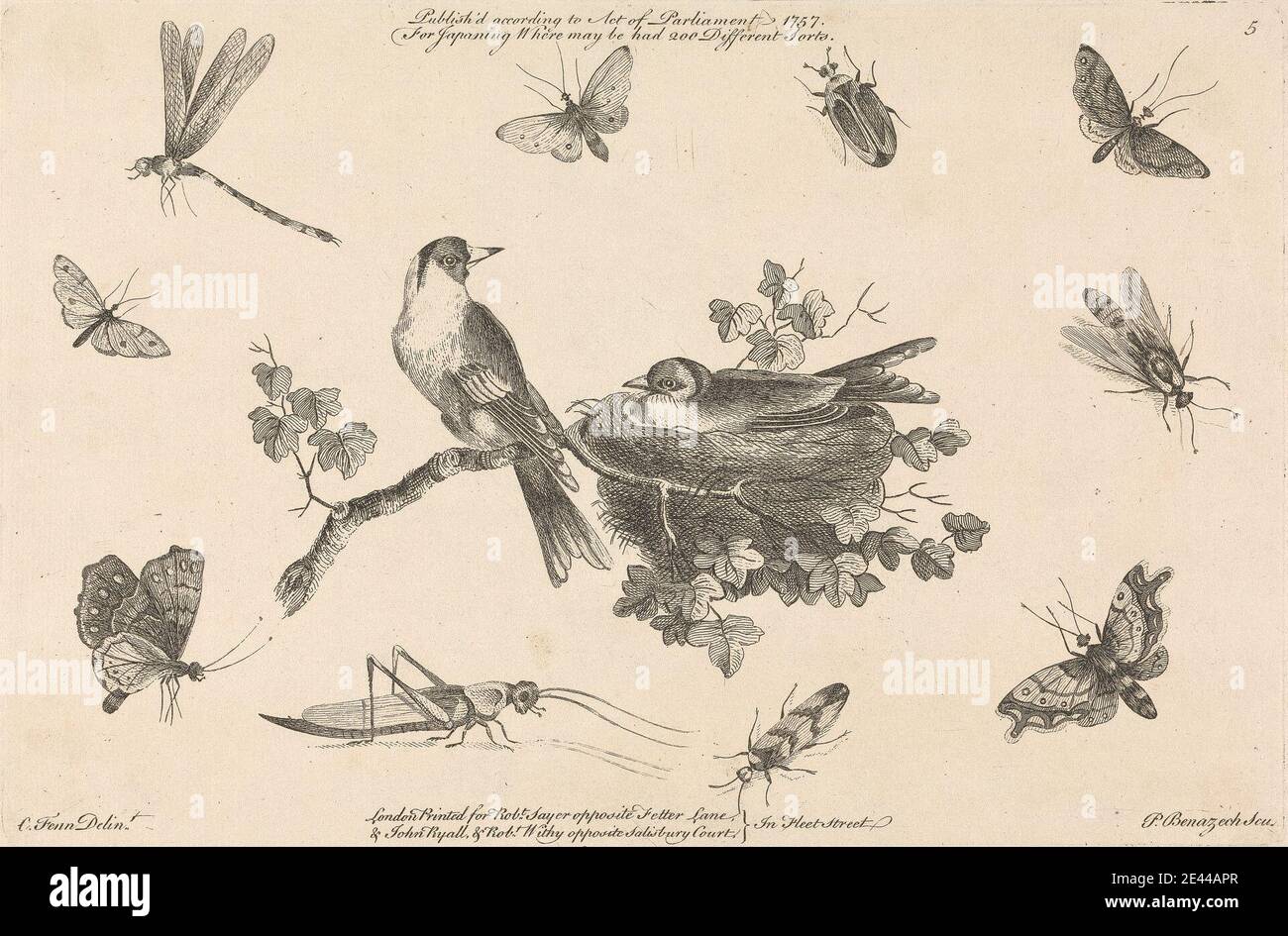 Peter P. Benazech, 1767–1794, For Japaning, Where may be 200 Different Sorts, 1757. Etching on medium, slightly textured, beige laid paper mounted on medium, textured, beige laid paper. animal art , beetles (insects) , birds , branches , butterflies , cicada , cricket , dragonfly , insects , japanning , leaves , nest (animal architecture) , science Stock Photohttps://www.alamy.com/image-license-details/?v=1https://www.alamy.com/peter-p-benazech-17671794-for-japaning-where-may-be-200-different-sorts-1757-etching-on-medium-slightly-textured-beige-laid-paper-mounted-on-medium-textured-beige-laid-paper-animal-art-beetles-insects-birds-branches-butterflies-cicada-cricket-dragonfly-insects-japanning-leaves-nest-animal-architecture-science-image398393375.html
Peter P. Benazech, 1767–1794, For Japaning, Where may be 200 Different Sorts, 1757. Etching on medium, slightly textured, beige laid paper mounted on medium, textured, beige laid paper. animal art , beetles (insects) , birds , branches , butterflies , cicada , cricket , dragonfly , insects , japanning , leaves , nest (animal architecture) , science Stock Photohttps://www.alamy.com/image-license-details/?v=1https://www.alamy.com/peter-p-benazech-17671794-for-japaning-where-may-be-200-different-sorts-1757-etching-on-medium-slightly-textured-beige-laid-paper-mounted-on-medium-textured-beige-laid-paper-animal-art-beetles-insects-birds-branches-butterflies-cicada-cricket-dragonfly-insects-japanning-leaves-nest-animal-architecture-science-image398393375.htmlRM2E44APR–Peter P. Benazech, 1767–1794, For Japaning, Where may be 200 Different Sorts, 1757. Etching on medium, slightly textured, beige laid paper mounted on medium, textured, beige laid paper. animal art , beetles (insects) , birds , branches , butterflies , cicada , cricket , dragonfly , insects , japanning , leaves , nest (animal architecture) , science
 Bildnummer: 58870419 Datum: 04.12.2012 Copyright: imago/Xinhua (121204) -- LANZHOU, Dec. 4, 2012 (Xinhua) -- A worker sorts mealworms at a feedlot breeding insects in Lijiazhuang Village, Yuzhong County of northwest China s Gansu Province, Dec. 4, 2012. The feedlot was set up in Lijiazhuang in the hope of consuming rotten vegetable leaves leaving in the field in Yuzhong County. It has been found that a tonne of mealworms need seven or eight tonnes vegetable for food per day. At present, those insects in the feedlot could eat up 20 tonnes of rotten vegetable leaves, which, in a certain sense, Stock Photohttps://www.alamy.com/image-license-details/?v=1https://www.alamy.com/bildnummer-58870419-datum-04122012-copyright-imagoxinhua-121204-lanzhou-dec-4-2012-xinhua-a-worker-sorts-mealworms-at-a-feedlot-breeding-insects-in-lijiazhuang-village-yuzhong-county-of-northwest-china-s-gansu-province-dec-4-2012-the-feedlot-was-set-up-in-lijiazhuang-in-the-hope-of-consuming-rotten-vegetable-leaves-leaving-in-the-field-in-yuzhong-county-it-has-been-found-that-a-tonne-of-mealworms-need-seven-or-eight-tonnes-vegetable-for-food-per-day-at-present-those-insects-in-the-feedlot-could-eat-up-20-tonnes-of-rotten-vegetable-leaves-which-in-a-certain-sense-image562983974.html
Bildnummer: 58870419 Datum: 04.12.2012 Copyright: imago/Xinhua (121204) -- LANZHOU, Dec. 4, 2012 (Xinhua) -- A worker sorts mealworms at a feedlot breeding insects in Lijiazhuang Village, Yuzhong County of northwest China s Gansu Province, Dec. 4, 2012. The feedlot was set up in Lijiazhuang in the hope of consuming rotten vegetable leaves leaving in the field in Yuzhong County. It has been found that a tonne of mealworms need seven or eight tonnes vegetable for food per day. At present, those insects in the feedlot could eat up 20 tonnes of rotten vegetable leaves, which, in a certain sense, Stock Photohttps://www.alamy.com/image-license-details/?v=1https://www.alamy.com/bildnummer-58870419-datum-04122012-copyright-imagoxinhua-121204-lanzhou-dec-4-2012-xinhua-a-worker-sorts-mealworms-at-a-feedlot-breeding-insects-in-lijiazhuang-village-yuzhong-county-of-northwest-china-s-gansu-province-dec-4-2012-the-feedlot-was-set-up-in-lijiazhuang-in-the-hope-of-consuming-rotten-vegetable-leaves-leaving-in-the-field-in-yuzhong-county-it-has-been-found-that-a-tonne-of-mealworms-need-seven-or-eight-tonnes-vegetable-for-food-per-day-at-present-those-insects-in-the-feedlot-could-eat-up-20-tonnes-of-rotten-vegetable-leaves-which-in-a-certain-sense-image562983974.htmlRM2RKX3PE–Bildnummer: 58870419 Datum: 04.12.2012 Copyright: imago/Xinhua (121204) -- LANZHOU, Dec. 4, 2012 (Xinhua) -- A worker sorts mealworms at a feedlot breeding insects in Lijiazhuang Village, Yuzhong County of northwest China s Gansu Province, Dec. 4, 2012. The feedlot was set up in Lijiazhuang in the hope of consuming rotten vegetable leaves leaving in the field in Yuzhong County. It has been found that a tonne of mealworms need seven or eight tonnes vegetable for food per day. At present, those insects in the feedlot could eat up 20 tonnes of rotten vegetable leaves, which, in a certain sense,
 Peter P. Benazech, 1767–1794, For Japaning, Where may be 200 Different Sorts, 1757. Etching on medium, slightly textured, beige laid paper mounted on medium, textured, beige laid paper. animal art , apples , birds , butterflies , cherries , flowers (plants) , fruit , gourds , insects , japanning , mosquito , moth , pumpkin , rocks (landforms) , science , squash , trees , water bugs Stock Photohttps://www.alamy.com/image-license-details/?v=1https://www.alamy.com/peter-p-benazech-17671794-for-japaning-where-may-be-200-different-sorts-1757-etching-on-medium-slightly-textured-beige-laid-paper-mounted-on-medium-textured-beige-laid-paper-animal-art-apples-birds-butterflies-cherries-flowers-plants-fruit-gourds-insects-japanning-mosquito-moth-pumpkin-rocks-landforms-science-squash-trees-water-bugs-image398409709.html
Peter P. Benazech, 1767–1794, For Japaning, Where may be 200 Different Sorts, 1757. Etching on medium, slightly textured, beige laid paper mounted on medium, textured, beige laid paper. animal art , apples , birds , butterflies , cherries , flowers (plants) , fruit , gourds , insects , japanning , mosquito , moth , pumpkin , rocks (landforms) , science , squash , trees , water bugs Stock Photohttps://www.alamy.com/image-license-details/?v=1https://www.alamy.com/peter-p-benazech-17671794-for-japaning-where-may-be-200-different-sorts-1757-etching-on-medium-slightly-textured-beige-laid-paper-mounted-on-medium-textured-beige-laid-paper-animal-art-apples-birds-butterflies-cherries-flowers-plants-fruit-gourds-insects-japanning-mosquito-moth-pumpkin-rocks-landforms-science-squash-trees-water-bugs-image398409709.htmlRM2E453J5–Peter P. Benazech, 1767–1794, For Japaning, Where may be 200 Different Sorts, 1757. Etching on medium, slightly textured, beige laid paper mounted on medium, textured, beige laid paper. animal art , apples , birds , butterflies , cherries , flowers (plants) , fruit , gourds , insects , japanning , mosquito , moth , pumpkin , rocks (landforms) , science , squash , trees , water bugs
 Peacock (Inachis io), Small Tortoiseshell (Aglais), with Meadow Brown (Maniola jurtina) Butterflies behind on Buddleia flowers. Stock Photohttps://www.alamy.com/image-license-details/?v=1https://www.alamy.com/stock-photo-peacock-inachis-io-small-tortoiseshell-aglais-with-meadow-brown-maniola-59661084.html
Peacock (Inachis io), Small Tortoiseshell (Aglais), with Meadow Brown (Maniola jurtina) Butterflies behind on Buddleia flowers. Stock Photohttps://www.alamy.com/image-license-details/?v=1https://www.alamy.com/stock-photo-peacock-inachis-io-small-tortoiseshell-aglais-with-meadow-brown-maniola-59661084.htmlRMDD1P90–Peacock (Inachis io), Small Tortoiseshell (Aglais), with Meadow Brown (Maniola jurtina) Butterflies behind on Buddleia flowers.
 Airman 1st Class Kyle Engle sorts through a collection of trapped insects to find mosquitoes. Engle, a public health technician with the 1st Special Operations Medical Group, will sift through the insects and then separate the male from the female mosquitoes by using a microscope. Since only the female mosquitoes feed on human blood and potentially transmit disease, they are collected and sent to a lab at Wright Patterson Air Force Base, Ohio for analysis. /Staff Sgt. Andrew Lee Stock Photohttps://www.alamy.com/image-license-details/?v=1https://www.alamy.com/stock-photo-airman-1st-class-kyle-engle-sorts-through-a-collection-of-trapped-129119935.html
Airman 1st Class Kyle Engle sorts through a collection of trapped insects to find mosquitoes. Engle, a public health technician with the 1st Special Operations Medical Group, will sift through the insects and then separate the male from the female mosquitoes by using a microscope. Since only the female mosquitoes feed on human blood and potentially transmit disease, they are collected and sent to a lab at Wright Patterson Air Force Base, Ohio for analysis. /Staff Sgt. Andrew Lee Stock Photohttps://www.alamy.com/image-license-details/?v=1https://www.alamy.com/stock-photo-airman-1st-class-kyle-engle-sorts-through-a-collection-of-trapped-129119935.htmlRMHE1WP7–Airman 1st Class Kyle Engle sorts through a collection of trapped insects to find mosquitoes. Engle, a public health technician with the 1st Special Operations Medical Group, will sift through the insects and then separate the male from the female mosquitoes by using a microscope. Since only the female mosquitoes feed on human blood and potentially transmit disease, they are collected and sent to a lab at Wright Patterson Air Force Base, Ohio for analysis. /Staff Sgt. Andrew Lee
 Beetles, Coleoptera, Stock Photohttps://www.alamy.com/image-license-details/?v=1https://www.alamy.com/beetles-coleoptera-image247767545.html
Beetles, Coleoptera, Stock Photohttps://www.alamy.com/image-license-details/?v=1https://www.alamy.com/beetles-coleoptera-image247767545.htmlRMTB2P0W–Beetles, Coleoptera,
 Imperishable insects created by scientists. Washington, D.C. June 18. William R. Walton, Senior Entomologist of the Division of Cereal and Forage Insects, U.S. Department of Agriculture, whose unique hobby is the making of metal casts of all sorts of insects from the tiniest Scarab to the enormous six-inch Goliath Beetle, which feeds on the tropical vegetation of New Guinea. In his distinctly original work Mr. Walton uses the Galvano-Plasty method of metal coating, which he set about developing over 30 years ago. This is an electro-mechanical process similar to the electrotype process used in Stock Photohttps://www.alamy.com/image-license-details/?v=1https://www.alamy.com/imperishable-insects-created-by-scientists-washington-dc-june-18-william-r-walton-senior-entomologist-of-the-division-of-cereal-and-forage-insects-us-department-of-agriculture-whose-unique-hobby-is-the-making-of-metal-casts-of-all-sorts-of-insects-from-the-tiniest-scarab-to-the-enormous-six-inch-goliath-beetle-which-feeds-on-the-tropical-vegetation-of-new-guinea-in-his-distinctly-original-work-mr-walton-uses-the-galvano-plasty-method-of-metal-coating-which-he-set-about-developing-over-30-years-ago-this-is-an-electro-mechanical-process-similar-to-the-electrotype-process-used-in-image269832104.html
Imperishable insects created by scientists. Washington, D.C. June 18. William R. Walton, Senior Entomologist of the Division of Cereal and Forage Insects, U.S. Department of Agriculture, whose unique hobby is the making of metal casts of all sorts of insects from the tiniest Scarab to the enormous six-inch Goliath Beetle, which feeds on the tropical vegetation of New Guinea. In his distinctly original work Mr. Walton uses the Galvano-Plasty method of metal coating, which he set about developing over 30 years ago. This is an electro-mechanical process similar to the electrotype process used in Stock Photohttps://www.alamy.com/image-license-details/?v=1https://www.alamy.com/imperishable-insects-created-by-scientists-washington-dc-june-18-william-r-walton-senior-entomologist-of-the-division-of-cereal-and-forage-insects-us-department-of-agriculture-whose-unique-hobby-is-the-making-of-metal-casts-of-all-sorts-of-insects-from-the-tiniest-scarab-to-the-enormous-six-inch-goliath-beetle-which-feeds-on-the-tropical-vegetation-of-new-guinea-in-his-distinctly-original-work-mr-walton-uses-the-galvano-plasty-method-of-metal-coating-which-he-set-about-developing-over-30-years-ago-this-is-an-electro-mechanical-process-similar-to-the-electrotype-process-used-in-image269832104.htmlRMWJYWGT–Imperishable insects created by scientists. Washington, D.C. June 18. William R. Walton, Senior Entomologist of the Division of Cereal and Forage Insects, U.S. Department of Agriculture, whose unique hobby is the making of metal casts of all sorts of insects from the tiniest Scarab to the enormous six-inch Goliath Beetle, which feeds on the tropical vegetation of New Guinea. In his distinctly original work Mr. Walton uses the Galvano-Plasty method of metal coating, which he set about developing over 30 years ago. This is an electro-mechanical process similar to the electrotype process used in
 Beetles. A book containing severall sorts of insects... 18th century. Source: Add. 5273, plate 23. Author: ALBERT SEBA. Stock Photohttps://www.alamy.com/image-license-details/?v=1https://www.alamy.com/beetles-a-book-containing-severall-sorts-of-insects-18th-century-source-add-5273-plate-23-author-albert-seba-image227038146.html
Beetles. A book containing severall sorts of insects... 18th century. Source: Add. 5273, plate 23. Author: ALBERT SEBA. Stock Photohttps://www.alamy.com/image-license-details/?v=1https://www.alamy.com/beetles-a-book-containing-severall-sorts-of-insects-18th-century-source-add-5273-plate-23-author-albert-seba-image227038146.htmlRMR5ADD6–Beetles. A book containing severall sorts of insects... 18th century. Source: Add. 5273, plate 23. Author: ALBERT SEBA.
 Airman 1st Class Kyle Engle sorts through a collection of trapped insects to find mosquitoes. Engle, a public health technician with the 1st Special Operations Medical Group, will sift through the insects and then separate the male from the female mosquitoes by using a microscope. Since only the female mosquitoes feed on human blood and potentially transmit disease, they are collected and sent to a lab at Wright Patterson Air Force Base, Ohio for analysis. (U.S. Air Force photo/Staff Sgt. Andrew Lee) 160418-F-NL936-309 by AirmanMagazine Stock Photohttps://www.alamy.com/image-license-details/?v=1https://www.alamy.com/stock-photo-airman-1st-class-kyle-engle-sorts-through-a-collection-of-trapped-174477541.html
Airman 1st Class Kyle Engle sorts through a collection of trapped insects to find mosquitoes. Engle, a public health technician with the 1st Special Operations Medical Group, will sift through the insects and then separate the male from the female mosquitoes by using a microscope. Since only the female mosquitoes feed on human blood and potentially transmit disease, they are collected and sent to a lab at Wright Patterson Air Force Base, Ohio for analysis. (U.S. Air Force photo/Staff Sgt. Andrew Lee) 160418-F-NL936-309 by AirmanMagazine Stock Photohttps://www.alamy.com/image-license-details/?v=1https://www.alamy.com/stock-photo-airman-1st-class-kyle-engle-sorts-through-a-collection-of-trapped-174477541.htmlRMM3T3TN–Airman 1st Class Kyle Engle sorts through a collection of trapped insects to find mosquitoes. Engle, a public health technician with the 1st Special Operations Medical Group, will sift through the insects and then separate the male from the female mosquitoes by using a microscope. Since only the female mosquitoes feed on human blood and potentially transmit disease, they are collected and sent to a lab at Wright Patterson Air Force Base, Ohio for analysis. (U.S. Air Force photo/Staff Sgt. Andrew Lee) 160418-F-NL936-309 by AirmanMagazine
 young boy showing his tarantula in the small town of skuon or spider town cambodia where all sorts of grubs spiders and insects are cooked for food Stock Photohttps://www.alamy.com/image-license-details/?v=1https://www.alamy.com/stock-photo-young-boy-showing-his-tarantula-in-the-small-town-of-skuon-or-spider-173045343.html
young boy showing his tarantula in the small town of skuon or spider town cambodia where all sorts of grubs spiders and insects are cooked for food Stock Photohttps://www.alamy.com/image-license-details/?v=1https://www.alamy.com/stock-photo-young-boy-showing-his-tarantula-in-the-small-town-of-skuon-or-spider-173045343.htmlRMM1EW2R–young boy showing his tarantula in the small town of skuon or spider town cambodia where all sorts of grubs spiders and insects are cooked for food
 Sheet of Studies of Nine Insects. With an almost scientific sense of accuracy, Jan van Kessel drew various sorts of beetles, flies and butterflies and even a caterpillar on this sheet. He relied on illustrations in scientific books on entomology as well as the actual insects themselves. He did not restrict himself to spectacularly coloured exotic insects, for this drawing also features an ordinary housefly and a small cabbage white butterfly. Stock Photohttps://www.alamy.com/image-license-details/?v=1https://www.alamy.com/sheet-of-studies-of-nine-insects-with-an-almost-scientific-sense-of-accuracy-jan-van-kessel-drew-various-sorts-of-beetles-flies-and-butterflies-and-even-a-caterpillar-on-this-sheet-he-relied-on-illustrations-in-scientific-books-on-entomology-as-well-as-the-actual-insects-themselves-he-did-not-restrict-himself-to-spectacularly-coloured-exotic-insects-for-this-drawing-also-features-an-ordinary-housefly-and-a-small-cabbage-white-butterfly-image430275910.html
Sheet of Studies of Nine Insects. With an almost scientific sense of accuracy, Jan van Kessel drew various sorts of beetles, flies and butterflies and even a caterpillar on this sheet. He relied on illustrations in scientific books on entomology as well as the actual insects themselves. He did not restrict himself to spectacularly coloured exotic insects, for this drawing also features an ordinary housefly and a small cabbage white butterfly. Stock Photohttps://www.alamy.com/image-license-details/?v=1https://www.alamy.com/sheet-of-studies-of-nine-insects-with-an-almost-scientific-sense-of-accuracy-jan-van-kessel-drew-various-sorts-of-beetles-flies-and-butterflies-and-even-a-caterpillar-on-this-sheet-he-relied-on-illustrations-in-scientific-books-on-entomology-as-well-as-the-actual-insects-themselves-he-did-not-restrict-himself-to-spectacularly-coloured-exotic-insects-for-this-drawing-also-features-an-ordinary-housefly-and-a-small-cabbage-white-butterfly-image430275910.htmlRM2G00N8P–Sheet of Studies of Nine Insects. With an almost scientific sense of accuracy, Jan van Kessel drew various sorts of beetles, flies and butterflies and even a caterpillar on this sheet. He relied on illustrations in scientific books on entomology as well as the actual insects themselves. He did not restrict himself to spectacularly coloured exotic insects, for this drawing also features an ordinary housefly and a small cabbage white butterfly.
 Rosa Alain Blanchard, bee Stock Photohttps://www.alamy.com/image-license-details/?v=1https://www.alamy.com/rosa-alain-blanchard-bee-image567818916.html
Rosa Alain Blanchard, bee Stock Photohttps://www.alamy.com/image-license-details/?v=1https://www.alamy.com/rosa-alain-blanchard-bee-image567818916.htmlRF2RYPAR0–Rosa Alain Blanchard, bee
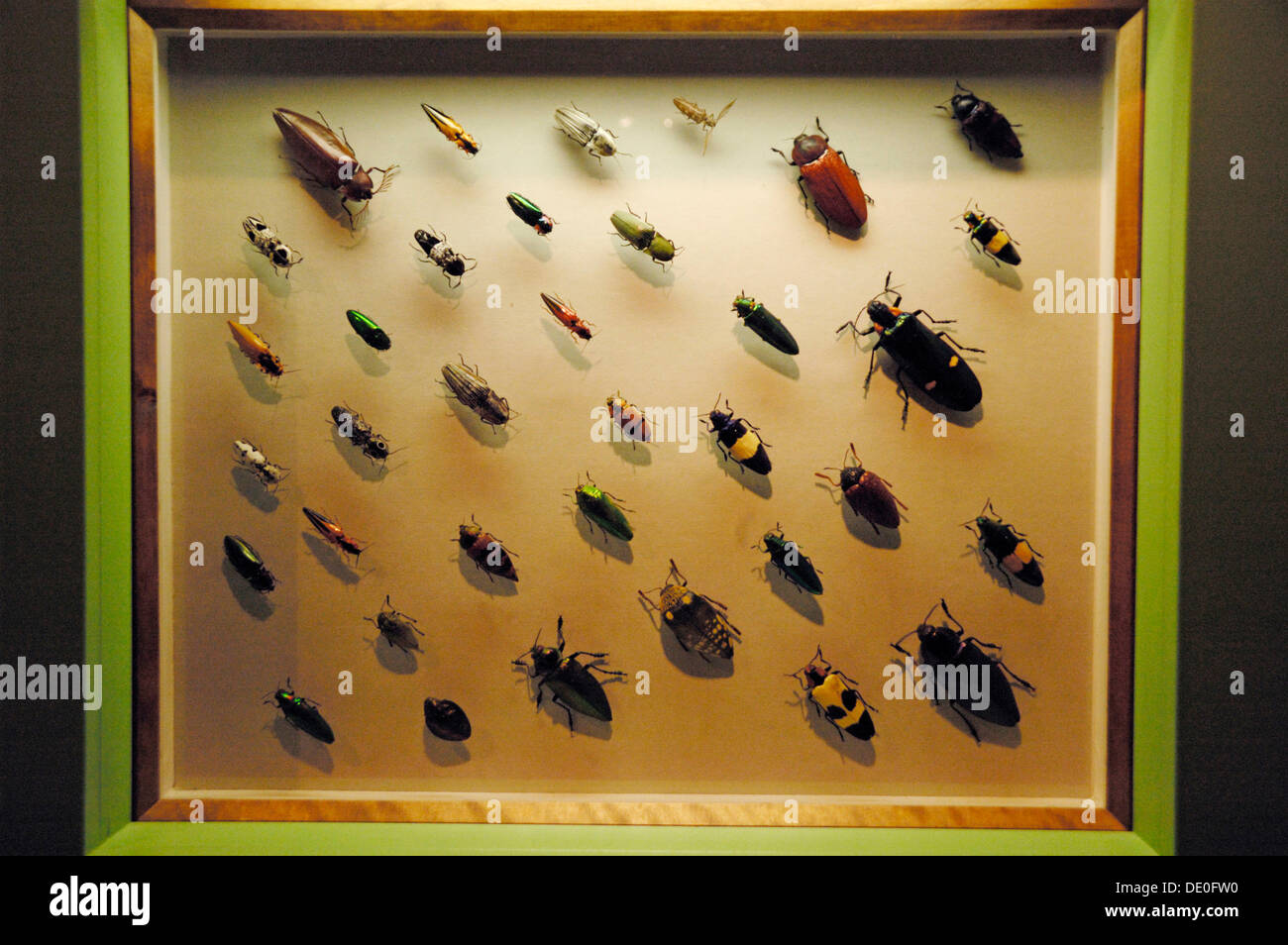 Various Jewel Beetles or Metallic Wood-boring Beetles (Buprestidae), Click Beetles (Elateridae) in a showcase, insect exhibition Stock Photohttps://www.alamy.com/image-license-details/?v=1https://www.alamy.com/various-jewel-beetles-or-metallic-wood-boring-beetles-buprestidae-image60248748.html
Various Jewel Beetles or Metallic Wood-boring Beetles (Buprestidae), Click Beetles (Elateridae) in a showcase, insect exhibition Stock Photohttps://www.alamy.com/image-license-details/?v=1https://www.alamy.com/various-jewel-beetles-or-metallic-wood-boring-beetles-buprestidae-image60248748.htmlRMDE0FW0–Various Jewel Beetles or Metallic Wood-boring Beetles (Buprestidae), Click Beetles (Elateridae) in a showcase, insect exhibition
 UK weather sunny day in Leeds - A sunny day at Golden Acre Park in Leeds, West Yorkshire had all sorts of insects pollinating flowers. This hover fly was on a hydrangea. Taken on the 30th August 2016. Stock Photohttps://www.alamy.com/image-license-details/?v=1https://www.alamy.com/stock-photo-uk-weather-sunny-day-in-leeds-a-sunny-day-at-golden-acre-park-in-leeds-189320736.html
UK weather sunny day in Leeds - A sunny day at Golden Acre Park in Leeds, West Yorkshire had all sorts of insects pollinating flowers. This hover fly was on a hydrangea. Taken on the 30th August 2016. Stock Photohttps://www.alamy.com/image-license-details/?v=1https://www.alamy.com/stock-photo-uk-weather-sunny-day-in-leeds-a-sunny-day-at-golden-acre-park-in-leeds-189320736.htmlRMN008ET–UK weather sunny day in Leeds - A sunny day at Golden Acre Park in Leeds, West Yorkshire had all sorts of insects pollinating flowers. This hover fly was on a hydrangea. Taken on the 30th August 2016.
 Painting by Pia Bühler, lithography and acrylic fantasy figures, fantastic creatures, all kinds of creatures meets Stock Photohttps://www.alamy.com/image-license-details/?v=1https://www.alamy.com/painting-by-pia-bhler-lithography-and-acrylic-fantasy-figures-fantastic-creatures-all-kinds-of-creatures-meets-image466920417.html
Painting by Pia Bühler, lithography and acrylic fantasy figures, fantastic creatures, all kinds of creatures meets Stock Photohttps://www.alamy.com/image-license-details/?v=1https://www.alamy.com/painting-by-pia-bhler-lithography-and-acrylic-fantasy-figures-fantastic-creatures-all-kinds-of-creatures-meets-image466920417.htmlRM2J3J1N5–Painting by Pia Bühler, lithography and acrylic fantasy figures, fantastic creatures, all kinds of creatures meets
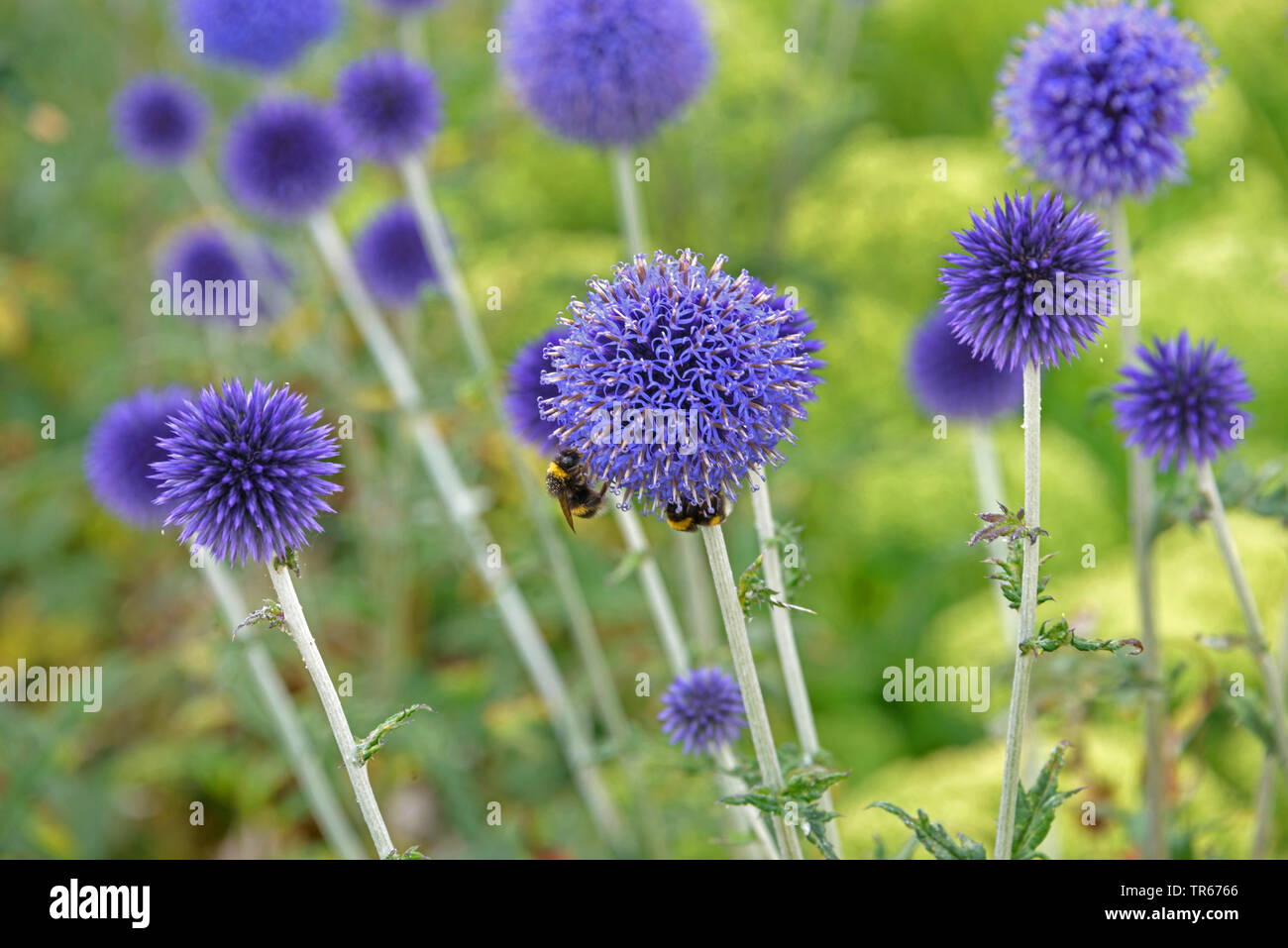 southern globethistle (Echinops ritro 'Veitch's Blue', Echinops ritro Veitch's Blue), blooming with bumble bees, cultivar Veitch's Blue Stock Photohttps://www.alamy.com/image-license-details/?v=1https://www.alamy.com/southern-globethistle-echinops-ritro-veitchs-blue-echinops-ritro-veitchs-blue-blooming-with-bumble-bees-cultivar-veitchs-blue-image255219614.html
southern globethistle (Echinops ritro 'Veitch's Blue', Echinops ritro Veitch's Blue), blooming with bumble bees, cultivar Veitch's Blue Stock Photohttps://www.alamy.com/image-license-details/?v=1https://www.alamy.com/southern-globethistle-echinops-ritro-veitchs-blue-echinops-ritro-veitchs-blue-blooming-with-bumble-bees-cultivar-veitchs-blue-image255219614.htmlRMTR6766–southern globethistle (Echinops ritro 'Veitch's Blue', Echinops ritro Veitch's Blue), blooming with bumble bees, cultivar Veitch's Blue
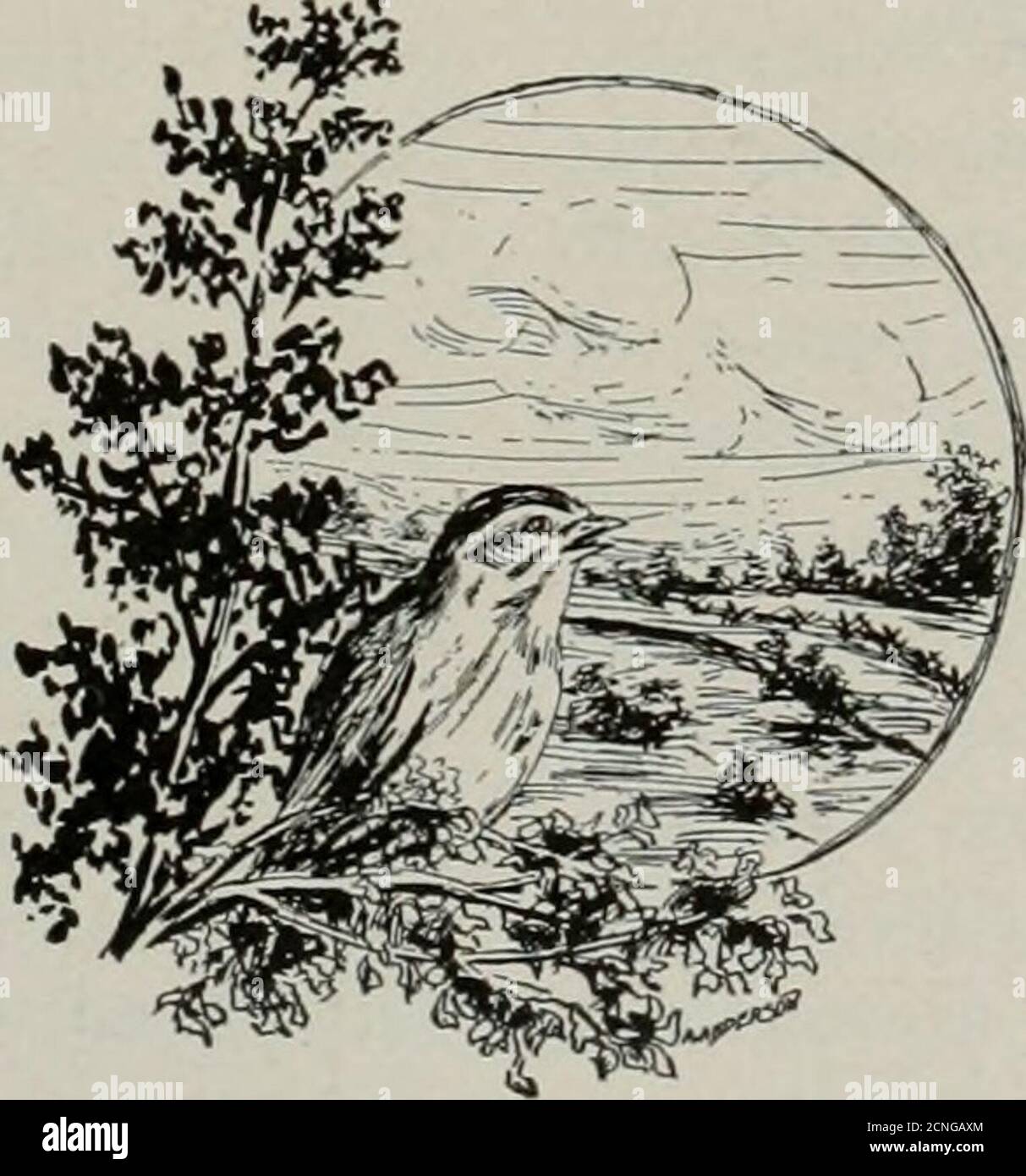 . Bird-lore . e noisy. Like most ducks in fresh water, the Pintail devours all sorts of insects andsmall aquatic creatures, snapping eagerly at flies and mosquitos on the wing.It is fond of succulent water-plants, such as wild cherry, eating both rootsand seeds, and even of nuts, where these grow not far from the water. Pondsare preferred to streams, and in winter grain-fields, meadows, and even theprairies, have attractions. In the West, where there are prairies and marshes, this is one of the mostabundant ducks, but in the East it is rather scarce. There, fearful of ever-present persecution, Stock Photohttps://www.alamy.com/image-license-details/?v=1https://www.alamy.com/bird-lore-e-noisy-like-most-ducks-in-fresh-water-the-pintail-devours-all-sorts-of-insects-andsmall-aquatic-creatures-snapping-eagerly-at-flies-and-mosquitos-on-the-wingit-is-fond-of-succulent-water-plants-such-as-wild-cherry-eating-both-rootsand-seeds-and-even-of-nuts-where-these-grow-not-far-from-the-water-pondsare-preferred-to-streams-and-in-winter-grain-fields-meadows-and-even-theprairies-have-attractions-in-the-west-where-there-are-prairies-and-marshes-this-is-one-of-the-mostabundant-ducks-but-in-the-east-it-is-rather-scarce-there-fearful-of-ever-present-persecution-image374685324.html
. Bird-lore . e noisy. Like most ducks in fresh water, the Pintail devours all sorts of insects andsmall aquatic creatures, snapping eagerly at flies and mosquitos on the wing.It is fond of succulent water-plants, such as wild cherry, eating both rootsand seeds, and even of nuts, where these grow not far from the water. Pondsare preferred to streams, and in winter grain-fields, meadows, and even theprairies, have attractions. In the West, where there are prairies and marshes, this is one of the mostabundant ducks, but in the East it is rather scarce. There, fearful of ever-present persecution, Stock Photohttps://www.alamy.com/image-license-details/?v=1https://www.alamy.com/bird-lore-e-noisy-like-most-ducks-in-fresh-water-the-pintail-devours-all-sorts-of-insects-andsmall-aquatic-creatures-snapping-eagerly-at-flies-and-mosquitos-on-the-wingit-is-fond-of-succulent-water-plants-such-as-wild-cherry-eating-both-rootsand-seeds-and-even-of-nuts-where-these-grow-not-far-from-the-water-pondsare-preferred-to-streams-and-in-winter-grain-fields-meadows-and-even-theprairies-have-attractions-in-the-west-where-there-are-prairies-and-marshes-this-is-one-of-the-mostabundant-ducks-but-in-the-east-it-is-rather-scarce-there-fearful-of-ever-present-persecution-image374685324.htmlRM2CNGAXM–. Bird-lore . e noisy. Like most ducks in fresh water, the Pintail devours all sorts of insects andsmall aquatic creatures, snapping eagerly at flies and mosquitos on the wing.It is fond of succulent water-plants, such as wild cherry, eating both rootsand seeds, and even of nuts, where these grow not far from the water. Pondsare preferred to streams, and in winter grain-fields, meadows, and even theprairies, have attractions. In the West, where there are prairies and marshes, this is one of the mostabundant ducks, but in the East it is rather scarce. There, fearful of ever-present persecution,
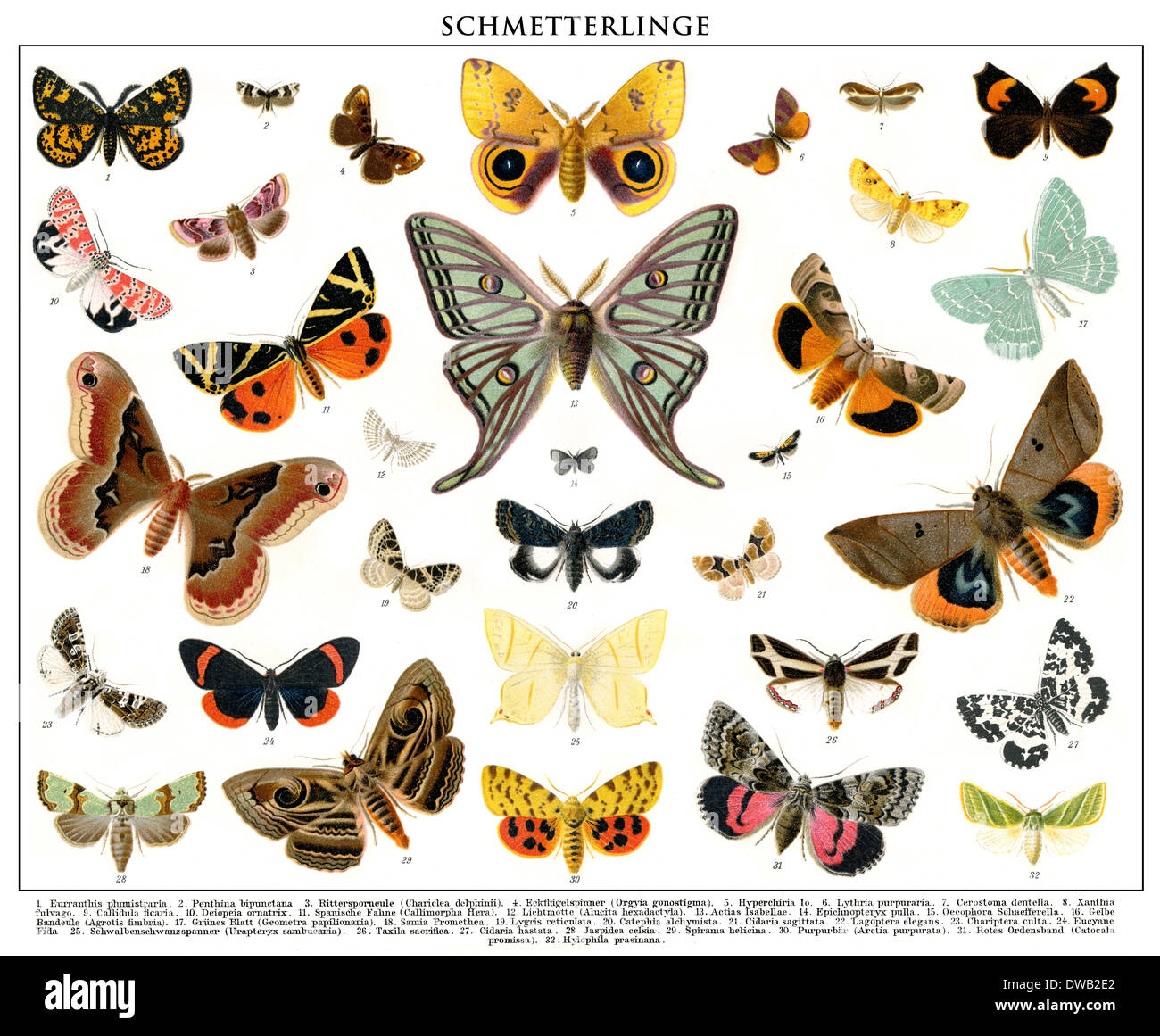 Historical illustration, 19th Century, Butterflies (Pieridae), Stock Photohttps://www.alamy.com/image-license-details/?v=1https://www.alamy.com/historical-illustration-19th-century-butterflies-pieridae-image67240938.html
Historical illustration, 19th Century, Butterflies (Pieridae), Stock Photohttps://www.alamy.com/image-license-details/?v=1https://www.alamy.com/historical-illustration-19th-century-butterflies-pieridae-image67240938.htmlRMDWB2E2–Historical illustration, 19th Century, Butterflies (Pieridae),
 Krefeld, Germany. 20th July, 2018. Armin Dahl sorts out caught insects at the Entomological Association in Krefeld. The association conducted a study that attracted attention around the globe. The key message: The number of insects has decreased significantly in parts of Germany. Credit: Roland Weihrauch/dpa/Alamy Live News Stock Photohttps://www.alamy.com/image-license-details/?v=1https://www.alamy.com/krefeld-germany-20th-july-2018-armin-dahl-sorts-out-caught-insects-at-the-entomological-association-in-krefeld-the-association-conducted-a-study-that-attracted-attention-around-the-globe-the-key-message-the-number-of-insects-has-decreased-significantly-in-parts-of-germany-credit-roland-weihrauchdpaalamy-live-news-image213038857.html
Krefeld, Germany. 20th July, 2018. Armin Dahl sorts out caught insects at the Entomological Association in Krefeld. The association conducted a study that attracted attention around the globe. The key message: The number of insects has decreased significantly in parts of Germany. Credit: Roland Weihrauch/dpa/Alamy Live News Stock Photohttps://www.alamy.com/image-license-details/?v=1https://www.alamy.com/krefeld-germany-20th-july-2018-armin-dahl-sorts-out-caught-insects-at-the-entomological-association-in-krefeld-the-association-conducted-a-study-that-attracted-attention-around-the-globe-the-key-message-the-number-of-insects-has-decreased-significantly-in-parts-of-germany-credit-roland-weihrauchdpaalamy-live-news-image213038857.htmlRMPAGN6H–Krefeld, Germany. 20th July, 2018. Armin Dahl sorts out caught insects at the Entomological Association in Krefeld. The association conducted a study that attracted attention around the globe. The key message: The number of insects has decreased significantly in parts of Germany. Credit: Roland Weihrauch/dpa/Alamy Live News
 Archive image from page 41 of Diamond jubilee 75th anniversary (1935). Diamond jubilee 75th anniversary . diamondjubilee751935grif Year: 1935 TURNIP For early use, sow the small sorts as soon as the ground can be worked in the spring, in drills 14 inches apart, the Rutabagas 30 inches. As the seed is very fine, it should be covered but slightly, excepting in very dry weather. Select light, and if possible, new soil and manure with plaster and ashes or phosphates. Should the young plants be troubled with insects, a sprinkling of slug shot will be beneficial. For fall and winter use the early k Stock Photohttps://www.alamy.com/image-license-details/?v=1https://www.alamy.com/archive-image-from-page-41-of-diamond-jubilee-75th-anniversary-1935-diamond-jubilee-75th-anniversary-diamondjubilee751935grif-year-1935-turnip-for-early-use-sow-the-small-sorts-as-soon-as-the-ground-can-be-worked-in-the-spring-in-drills-14-inches-apart-the-rutabagas-30-inches-as-the-seed-is-very-fine-it-should-be-covered-but-slightly-excepting-in-very-dry-weather-select-light-and-if-possible-new-soil-and-manure-with-plaster-and-ashes-or-phosphates-should-the-young-plants-be-troubled-with-insects-a-sprinkling-of-slug-shot-will-be-beneficial-for-fall-and-winter-use-the-early-k-image259026160.html
Archive image from page 41 of Diamond jubilee 75th anniversary (1935). Diamond jubilee 75th anniversary . diamondjubilee751935grif Year: 1935 TURNIP For early use, sow the small sorts as soon as the ground can be worked in the spring, in drills 14 inches apart, the Rutabagas 30 inches. As the seed is very fine, it should be covered but slightly, excepting in very dry weather. Select light, and if possible, new soil and manure with plaster and ashes or phosphates. Should the young plants be troubled with insects, a sprinkling of slug shot will be beneficial. For fall and winter use the early k Stock Photohttps://www.alamy.com/image-license-details/?v=1https://www.alamy.com/archive-image-from-page-41-of-diamond-jubilee-75th-anniversary-1935-diamond-jubilee-75th-anniversary-diamondjubilee751935grif-year-1935-turnip-for-early-use-sow-the-small-sorts-as-soon-as-the-ground-can-be-worked-in-the-spring-in-drills-14-inches-apart-the-rutabagas-30-inches-as-the-seed-is-very-fine-it-should-be-covered-but-slightly-excepting-in-very-dry-weather-select-light-and-if-possible-new-soil-and-manure-with-plaster-and-ashes-or-phosphates-should-the-young-plants-be-troubled-with-insects-a-sprinkling-of-slug-shot-will-be-beneficial-for-fall-and-winter-use-the-early-k-image259026160.htmlRMW1BJE8–Archive image from page 41 of Diamond jubilee 75th anniversary (1935). Diamond jubilee 75th anniversary . diamondjubilee751935grif Year: 1935 TURNIP For early use, sow the small sorts as soon as the ground can be worked in the spring, in drills 14 inches apart, the Rutabagas 30 inches. As the seed is very fine, it should be covered but slightly, excepting in very dry weather. Select light, and if possible, new soil and manure with plaster and ashes or phosphates. Should the young plants be troubled with insects, a sprinkling of slug shot will be beneficial. For fall and winter use the early k
 . Elementary principles of agriculture; a text book for the common schools . Fig frequently of immense numbers. They feed upon the leaves, buds, tender stems, and even the roots in some sorts of plants. They do much damage by sucking the plant j uices. Some species secrete a substance known as ''honey dew," which is sought after by ants. The Ants care for the aphis and protect them from the depredations of predaceous insects. The scale insects are classed with the plant- Uce. The San Jose scale is the most serious re- presentative. 239a. Colonies of plant-lice may be found frequently on r Stock Photohttps://www.alamy.com/image-license-details/?v=1https://www.alamy.com/elementary-principles-of-agriculture-a-text-book-for-the-common-schools-fig-frequently-of-immense-numbers-they-feed-upon-the-leaves-buds-tender-stems-and-even-the-roots-in-some-sorts-of-plants-they-do-much-damage-by-sucking-the-plant-j-uices-some-species-secrete-a-substance-known-as-honey-dewquot-which-is-sought-after-by-ants-the-ants-care-for-the-aphis-and-protect-them-from-the-depredations-of-predaceous-insects-the-scale-insects-are-classed-with-the-plant-uce-the-san-jose-scale-is-the-most-serious-re-presentative-239a-colonies-of-plant-lice-may-be-found-frequently-on-r-image178403329.html
. Elementary principles of agriculture; a text book for the common schools . Fig frequently of immense numbers. They feed upon the leaves, buds, tender stems, and even the roots in some sorts of plants. They do much damage by sucking the plant j uices. Some species secrete a substance known as ''honey dew," which is sought after by ants. The Ants care for the aphis and protect them from the depredations of predaceous insects. The scale insects are classed with the plant- Uce. The San Jose scale is the most serious re- presentative. 239a. Colonies of plant-lice may be found frequently on r Stock Photohttps://www.alamy.com/image-license-details/?v=1https://www.alamy.com/elementary-principles-of-agriculture-a-text-book-for-the-common-schools-fig-frequently-of-immense-numbers-they-feed-upon-the-leaves-buds-tender-stems-and-even-the-roots-in-some-sorts-of-plants-they-do-much-damage-by-sucking-the-plant-j-uices-some-species-secrete-a-substance-known-as-honey-dewquot-which-is-sought-after-by-ants-the-ants-care-for-the-aphis-and-protect-them-from-the-depredations-of-predaceous-insects-the-scale-insects-are-classed-with-the-plant-uce-the-san-jose-scale-is-the-most-serious-re-presentative-239a-colonies-of-plant-lice-may-be-found-frequently-on-r-image178403329.htmlRMMA6Y7D–. Elementary principles of agriculture; a text book for the common schools . Fig frequently of immense numbers. They feed upon the leaves, buds, tender stems, and even the roots in some sorts of plants. They do much damage by sucking the plant j uices. Some species secrete a substance known as ''honey dew," which is sought after by ants. The Ants care for the aphis and protect them from the depredations of predaceous insects. The scale insects are classed with the plant- Uce. The San Jose scale is the most serious re- presentative. 239a. Colonies of plant-lice may be found frequently on r
 Peacock (Inachis io), Small Tortoiseshell (Aglais), with Meadow Brown (Maniola jurtina) Butterflies behind on Buddleia flowers. Stock Photohttps://www.alamy.com/image-license-details/?v=1https://www.alamy.com/stock-photo-peacock-inachis-io-small-tortoiseshell-aglais-with-meadow-brown-maniola-59661355.html
Peacock (Inachis io), Small Tortoiseshell (Aglais), with Meadow Brown (Maniola jurtina) Butterflies behind on Buddleia flowers. Stock Photohttps://www.alamy.com/image-license-details/?v=1https://www.alamy.com/stock-photo-peacock-inachis-io-small-tortoiseshell-aglais-with-meadow-brown-maniola-59661355.htmlRMDD1PJK–Peacock (Inachis io), Small Tortoiseshell (Aglais), with Meadow Brown (Maniola jurtina) Butterflies behind on Buddleia flowers.
 Airman 1st Class Kyle Engle sorts through a collection of trapped insects to find mosquitoes. Engle, a public health technician with the 1st Special Operations Medical Group, will sift through the insects and then separate the male from the female mosquitoes by using a microscope. Since only the female mosquitoes feed on human blood and potentially transmit disease, they are collected and sent to a lab at Wright Patterson Air Force Base, Ohio for analysis. /Staff Sgt. Andrew Lee Stock Photohttps://www.alamy.com/image-license-details/?v=1https://www.alamy.com/stock-photo-airman-1st-class-kyle-engle-sorts-through-a-collection-of-trapped-129119936.html
Airman 1st Class Kyle Engle sorts through a collection of trapped insects to find mosquitoes. Engle, a public health technician with the 1st Special Operations Medical Group, will sift through the insects and then separate the male from the female mosquitoes by using a microscope. Since only the female mosquitoes feed on human blood and potentially transmit disease, they are collected and sent to a lab at Wright Patterson Air Force Base, Ohio for analysis. /Staff Sgt. Andrew Lee Stock Photohttps://www.alamy.com/image-license-details/?v=1https://www.alamy.com/stock-photo-airman-1st-class-kyle-engle-sorts-through-a-collection-of-trapped-129119936.htmlRMHE1WP8–Airman 1st Class Kyle Engle sorts through a collection of trapped insects to find mosquitoes. Engle, a public health technician with the 1st Special Operations Medical Group, will sift through the insects and then separate the male from the female mosquitoes by using a microscope. Since only the female mosquitoes feed on human blood and potentially transmit disease, they are collected and sent to a lab at Wright Patterson Air Force Base, Ohio for analysis. /Staff Sgt. Andrew Lee
 Beetles. A book containing severall sorts of insects... 18th century. Source: Add. 5273, plate 88. Author: ALBERT SEBA. Stock Photohttps://www.alamy.com/image-license-details/?v=1https://www.alamy.com/beetles-a-book-containing-severall-sorts-of-insects-18th-century-source-add-5273-plate-88-author-albert-seba-image227213748.html
Beetles. A book containing severall sorts of insects... 18th century. Source: Add. 5273, plate 88. Author: ALBERT SEBA. Stock Photohttps://www.alamy.com/image-license-details/?v=1https://www.alamy.com/beetles-a-book-containing-severall-sorts-of-insects-18th-century-source-add-5273-plate-88-author-albert-seba-image227213748.htmlRMR5JDCM–Beetles. A book containing severall sorts of insects... 18th century. Source: Add. 5273, plate 88. Author: ALBERT SEBA.
 Airman 1st Class Kyle Engle sorts through a collection of trapped insects to find mosquitoes. Engle, a public health technician with the 1st Special Operations Medical Group, will sift through the insects and then separate the male from the female mosquitoes by using a microscope. Since only the female mosquitoes feed on human blood and potentially transmit disease, they are collected and sent to a lab at Wright Patterson Air Force Base, Ohio for analysis. (U.S. Air Force photo/Staff Sgt. Andrew Lee) 160418-F-NL936-209 Stock Photohttps://www.alamy.com/image-license-details/?v=1https://www.alamy.com/stock-photo-airman-1st-class-kyle-engle-sorts-through-a-collection-of-trapped-174477537.html
Airman 1st Class Kyle Engle sorts through a collection of trapped insects to find mosquitoes. Engle, a public health technician with the 1st Special Operations Medical Group, will sift through the insects and then separate the male from the female mosquitoes by using a microscope. Since only the female mosquitoes feed on human blood and potentially transmit disease, they are collected and sent to a lab at Wright Patterson Air Force Base, Ohio for analysis. (U.S. Air Force photo/Staff Sgt. Andrew Lee) 160418-F-NL936-209 Stock Photohttps://www.alamy.com/image-license-details/?v=1https://www.alamy.com/stock-photo-airman-1st-class-kyle-engle-sorts-through-a-collection-of-trapped-174477537.htmlRMM3T3TH–Airman 1st Class Kyle Engle sorts through a collection of trapped insects to find mosquitoes. Engle, a public health technician with the 1st Special Operations Medical Group, will sift through the insects and then separate the male from the female mosquitoes by using a microscope. Since only the female mosquitoes feed on human blood and potentially transmit disease, they are collected and sent to a lab at Wright Patterson Air Force Base, Ohio for analysis. (U.S. Air Force photo/Staff Sgt. Andrew Lee) 160418-F-NL936-209
 Rosa Alain Blanchard, bee Stock Photohttps://www.alamy.com/image-license-details/?v=1https://www.alamy.com/rosa-alain-blanchard-bee-image567819172.html
Rosa Alain Blanchard, bee Stock Photohttps://www.alamy.com/image-license-details/?v=1https://www.alamy.com/rosa-alain-blanchard-bee-image567819172.htmlRF2RYPB44–Rosa Alain Blanchard, bee
 UK weather sunny day in Leeds - A sunny day at Golden Acre Park in Leeds, West Yorkshire had all sorts of insects pollinating flowers. This hover fly was on a gazania. Taken on the 30th August 2016. Stock Photohttps://www.alamy.com/image-license-details/?v=1https://www.alamy.com/stock-photo-uk-weather-sunny-day-in-leeds-a-sunny-day-at-golden-acre-park-in-leeds-189320733.html
UK weather sunny day in Leeds - A sunny day at Golden Acre Park in Leeds, West Yorkshire had all sorts of insects pollinating flowers. This hover fly was on a gazania. Taken on the 30th August 2016. Stock Photohttps://www.alamy.com/image-license-details/?v=1https://www.alamy.com/stock-photo-uk-weather-sunny-day-in-leeds-a-sunny-day-at-golden-acre-park-in-leeds-189320733.htmlRMN008EN–UK weather sunny day in Leeds - A sunny day at Golden Acre Park in Leeds, West Yorkshire had all sorts of insects pollinating flowers. This hover fly was on a gazania. Taken on the 30th August 2016.
 Painting by Pia Bühler, lithography and acrylic fantasy figures, fantastic creatures, all kinds of creatures meets Stock Photohttps://www.alamy.com/image-license-details/?v=1https://www.alamy.com/painting-by-pia-bhler-lithography-and-acrylic-fantasy-figures-fantastic-creatures-all-kinds-of-creatures-meets-image466920388.html
Painting by Pia Bühler, lithography and acrylic fantasy figures, fantastic creatures, all kinds of creatures meets Stock Photohttps://www.alamy.com/image-license-details/?v=1https://www.alamy.com/painting-by-pia-bhler-lithography-and-acrylic-fantasy-figures-fantastic-creatures-all-kinds-of-creatures-meets-image466920388.htmlRM2J3J1M4–Painting by Pia Bühler, lithography and acrylic fantasy figures, fantastic creatures, all kinds of creatures meets
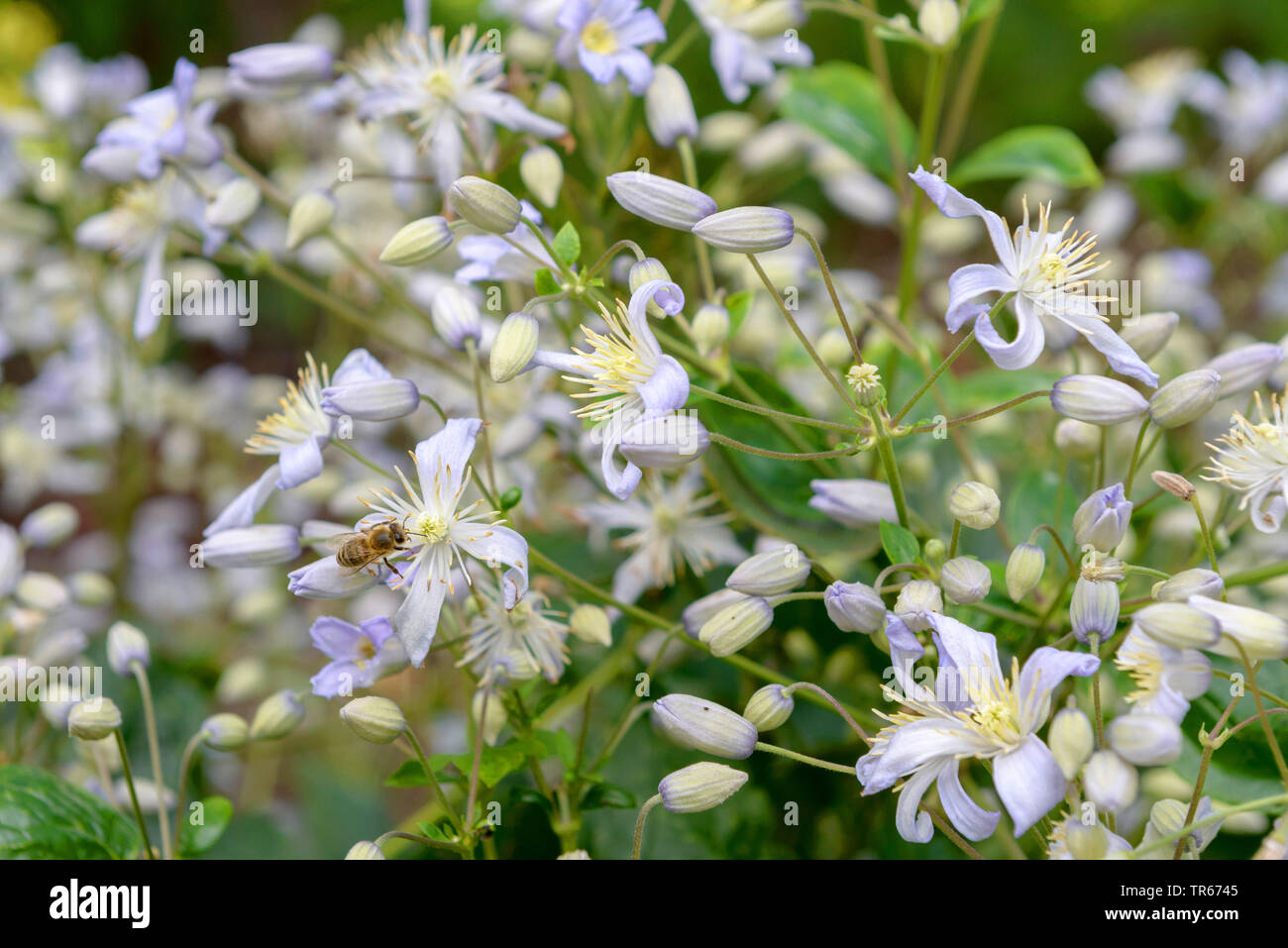 clematis, virgins-bower (Clematis 'Mrs Robert Brydon', Clematis Mrs Robert Brydon), blooming, cultivar Mrs Robert Brydon Stock Photohttps://www.alamy.com/image-license-details/?v=1https://www.alamy.com/clematis-virgins-bower-clematis-mrs-robert-brydon-clematis-mrs-robert-brydon-blooming-cultivar-mrs-robert-brydon-image255219557.html
clematis, virgins-bower (Clematis 'Mrs Robert Brydon', Clematis Mrs Robert Brydon), blooming, cultivar Mrs Robert Brydon Stock Photohttps://www.alamy.com/image-license-details/?v=1https://www.alamy.com/clematis-virgins-bower-clematis-mrs-robert-brydon-clematis-mrs-robert-brydon-blooming-cultivar-mrs-robert-brydon-image255219557.htmlRMTR6745–clematis, virgins-bower (Clematis 'Mrs Robert Brydon', Clematis Mrs Robert Brydon), blooming, cultivar Mrs Robert Brydon
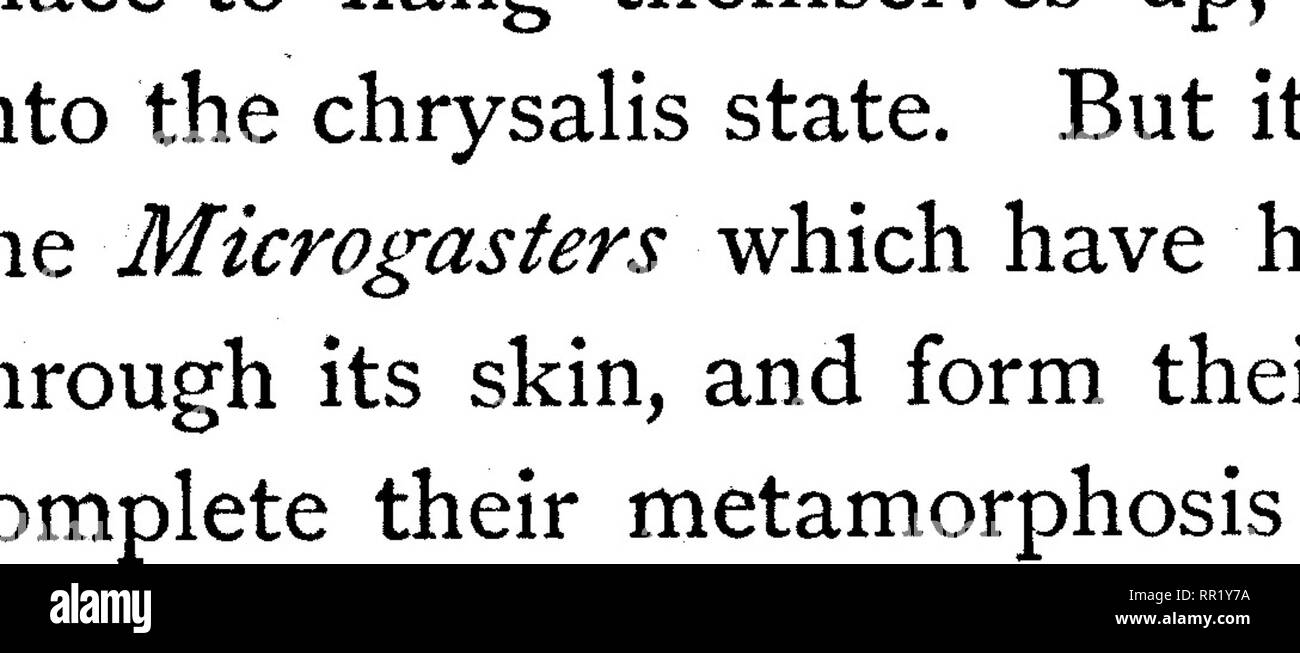 . The transformations (or metamorphoses) of insects. Insects; Insects; Myriapoda; Arachnida; Crustacea. THE CHALCIDIDM. 193 The species of a most important family of the Hymenoptera have small palpi, the antenn^E consist of twelve or thirteen, joints, and the nervure of the wing is simple and bifurcate; they are numerous, and the members of them are very common. These Chalcididm are small creatures, and attack all sorts of insects, and do not even spare the other parasites. The species of the genus Chalcis are common, and the indivi- duals are larger than those of the other kinds. They may be Stock Photohttps://www.alamy.com/image-license-details/?v=1https://www.alamy.com/the-transformations-or-metamorphoses-of-insects-insects-insects-myriapoda-arachnida-crustacea-the-chalcididm-193-the-species-of-a-most-important-family-of-the-hymenoptera-have-small-palpi-the-antenne-consist-of-twelve-or-thirteen-joints-and-the-nervure-of-the-wing-is-simple-and-bifurcate-they-are-numerous-and-the-members-of-them-are-very-common-these-chalcididm-are-small-creatures-and-attack-all-sorts-of-insects-and-do-not-even-spare-the-other-parasites-the-species-of-the-genus-chalcis-are-common-and-the-indivi-duals-are-larger-than-those-of-the-other-kinds-they-may-be-image237915198.html
. The transformations (or metamorphoses) of insects. Insects; Insects; Myriapoda; Arachnida; Crustacea. THE CHALCIDIDM. 193 The species of a most important family of the Hymenoptera have small palpi, the antenn^E consist of twelve or thirteen, joints, and the nervure of the wing is simple and bifurcate; they are numerous, and the members of them are very common. These Chalcididm are small creatures, and attack all sorts of insects, and do not even spare the other parasites. The species of the genus Chalcis are common, and the indivi- duals are larger than those of the other kinds. They may be Stock Photohttps://www.alamy.com/image-license-details/?v=1https://www.alamy.com/the-transformations-or-metamorphoses-of-insects-insects-insects-myriapoda-arachnida-crustacea-the-chalcididm-193-the-species-of-a-most-important-family-of-the-hymenoptera-have-small-palpi-the-antenne-consist-of-twelve-or-thirteen-joints-and-the-nervure-of-the-wing-is-simple-and-bifurcate-they-are-numerous-and-the-members-of-them-are-very-common-these-chalcididm-are-small-creatures-and-attack-all-sorts-of-insects-and-do-not-even-spare-the-other-parasites-the-species-of-the-genus-chalcis-are-common-and-the-indivi-duals-are-larger-than-those-of-the-other-kinds-they-may-be-image237915198.htmlRMRR1Y7A–. The transformations (or metamorphoses) of insects. Insects; Insects; Myriapoda; Arachnida; Crustacea. THE CHALCIDIDM. 193 The species of a most important family of the Hymenoptera have small palpi, the antenn^E consist of twelve or thirteen, joints, and the nervure of the wing is simple and bifurcate; they are numerous, and the members of them are very common. These Chalcididm are small creatures, and attack all sorts of insects, and do not even spare the other parasites. The species of the genus Chalcis are common, and the indivi- duals are larger than those of the other kinds. They may be
 Historical illustration, 19th Century, Butterflies (Pieridae), Stock Photohttps://www.alamy.com/image-license-details/?v=1https://www.alamy.com/historical-illustration-19th-century-butterflies-pieridae-image67240874.html
Historical illustration, 19th Century, Butterflies (Pieridae), Stock Photohttps://www.alamy.com/image-license-details/?v=1https://www.alamy.com/historical-illustration-19th-century-butterflies-pieridae-image67240874.htmlRMDWB2BP–Historical illustration, 19th Century, Butterflies (Pieridae),
![Elementary entomology . elementaryentomo00sand Year: [c1912] CHAPTER XIV FLIES, MOSQUITOES, AND MIDGES (DIPTERA) Characteristics. Insects with one pair of wings borne by the mesothorax; the hind-wings represented by a pair of knobbed threads, called halteres; mouth-parts, suctorial;' metamorphosis, complete. Ordinarily all sorts of small insects with membranous wings are indiscriminately called flics, and the term ' fly ' has been used to form part of a compound name for insects of several different orders, such as May- fly, sawfly, gallfly, butterfly, etc., but, considered from the entomolog Stock Photo Elementary entomology . elementaryentomo00sand Year: [c1912] CHAPTER XIV FLIES, MOSQUITOES, AND MIDGES (DIPTERA) Characteristics. Insects with one pair of wings borne by the mesothorax; the hind-wings represented by a pair of knobbed threads, called halteres; mouth-parts, suctorial;' metamorphosis, complete. Ordinarily all sorts of small insects with membranous wings are indiscriminately called flics, and the term ' fly ' has been used to form part of a compound name for insects of several different orders, such as May- fly, sawfly, gallfly, butterfly, etc., but, considered from the entomolog Stock Photo](https://c8.alamy.com/comp/T03640/elementary-entomology-elementaryentomo00sand-year-c1912-chapter-xiv-flies-mosquitoes-and-midges-diptera-characteristics-insects-with-one-pair-of-wings-borne-by-the-mesothorax-the-hind-wings-represented-by-a-pair-of-knobbed-threads-called-halteres-mouth-parts-suctorial-metamorphosis-complete-ordinarily-all-sorts-of-small-insects-with-membranous-wings-are-indiscriminately-called-flics-and-the-term-fly-has-been-used-to-form-part-of-a-compound-name-for-insects-of-several-different-orders-such-as-may-fly-sawfly-gallfly-butterfly-etc-but-considered-from-the-entomolog-T03640.jpg) Elementary entomology . elementaryentomo00sand Year: [c1912] CHAPTER XIV FLIES, MOSQUITOES, AND MIDGES (DIPTERA) Characteristics. Insects with one pair of wings borne by the mesothorax; the hind-wings represented by a pair of knobbed threads, called halteres; mouth-parts, suctorial;' metamorphosis, complete. Ordinarily all sorts of small insects with membranous wings are indiscriminately called flics, and the term ' fly ' has been used to form part of a compound name for insects of several different orders, such as May- fly, sawfly, gallfly, butterfly, etc., but, considered from the entomolog Stock Photohttps://www.alamy.com/image-license-details/?v=1https://www.alamy.com/elementary-entomology-elementaryentomo00sand-year-c1912-chapter-xiv-flies-mosquitoes-and-midges-diptera-characteristics-insects-with-one-pair-of-wings-borne-by-the-mesothorax-the-hind-wings-represented-by-a-pair-of-knobbed-threads-called-halteres-mouth-parts-suctorial-metamorphosis-complete-ordinarily-all-sorts-of-small-insects-with-membranous-wings-are-indiscriminately-called-flics-and-the-term-fly-has-been-used-to-form-part-of-a-compound-name-for-insects-of-several-different-orders-such-as-may-fly-sawfly-gallfly-butterfly-etc-but-considered-from-the-entomolog-image241015824.html
Elementary entomology . elementaryentomo00sand Year: [c1912] CHAPTER XIV FLIES, MOSQUITOES, AND MIDGES (DIPTERA) Characteristics. Insects with one pair of wings borne by the mesothorax; the hind-wings represented by a pair of knobbed threads, called halteres; mouth-parts, suctorial;' metamorphosis, complete. Ordinarily all sorts of small insects with membranous wings are indiscriminately called flics, and the term ' fly ' has been used to form part of a compound name for insects of several different orders, such as May- fly, sawfly, gallfly, butterfly, etc., but, considered from the entomolog Stock Photohttps://www.alamy.com/image-license-details/?v=1https://www.alamy.com/elementary-entomology-elementaryentomo00sand-year-c1912-chapter-xiv-flies-mosquitoes-and-midges-diptera-characteristics-insects-with-one-pair-of-wings-borne-by-the-mesothorax-the-hind-wings-represented-by-a-pair-of-knobbed-threads-called-halteres-mouth-parts-suctorial-metamorphosis-complete-ordinarily-all-sorts-of-small-insects-with-membranous-wings-are-indiscriminately-called-flics-and-the-term-fly-has-been-used-to-form-part-of-a-compound-name-for-insects-of-several-different-orders-such-as-may-fly-sawfly-gallfly-butterfly-etc-but-considered-from-the-entomolog-image241015824.htmlRMT03640–Elementary entomology . elementaryentomo00sand Year: [c1912] CHAPTER XIV FLIES, MOSQUITOES, AND MIDGES (DIPTERA) Characteristics. Insects with one pair of wings borne by the mesothorax; the hind-wings represented by a pair of knobbed threads, called halteres; mouth-parts, suctorial;' metamorphosis, complete. Ordinarily all sorts of small insects with membranous wings are indiscriminately called flics, and the term ' fly ' has been used to form part of a compound name for insects of several different orders, such as May- fly, sawfly, gallfly, butterfly, etc., but, considered from the entomolog
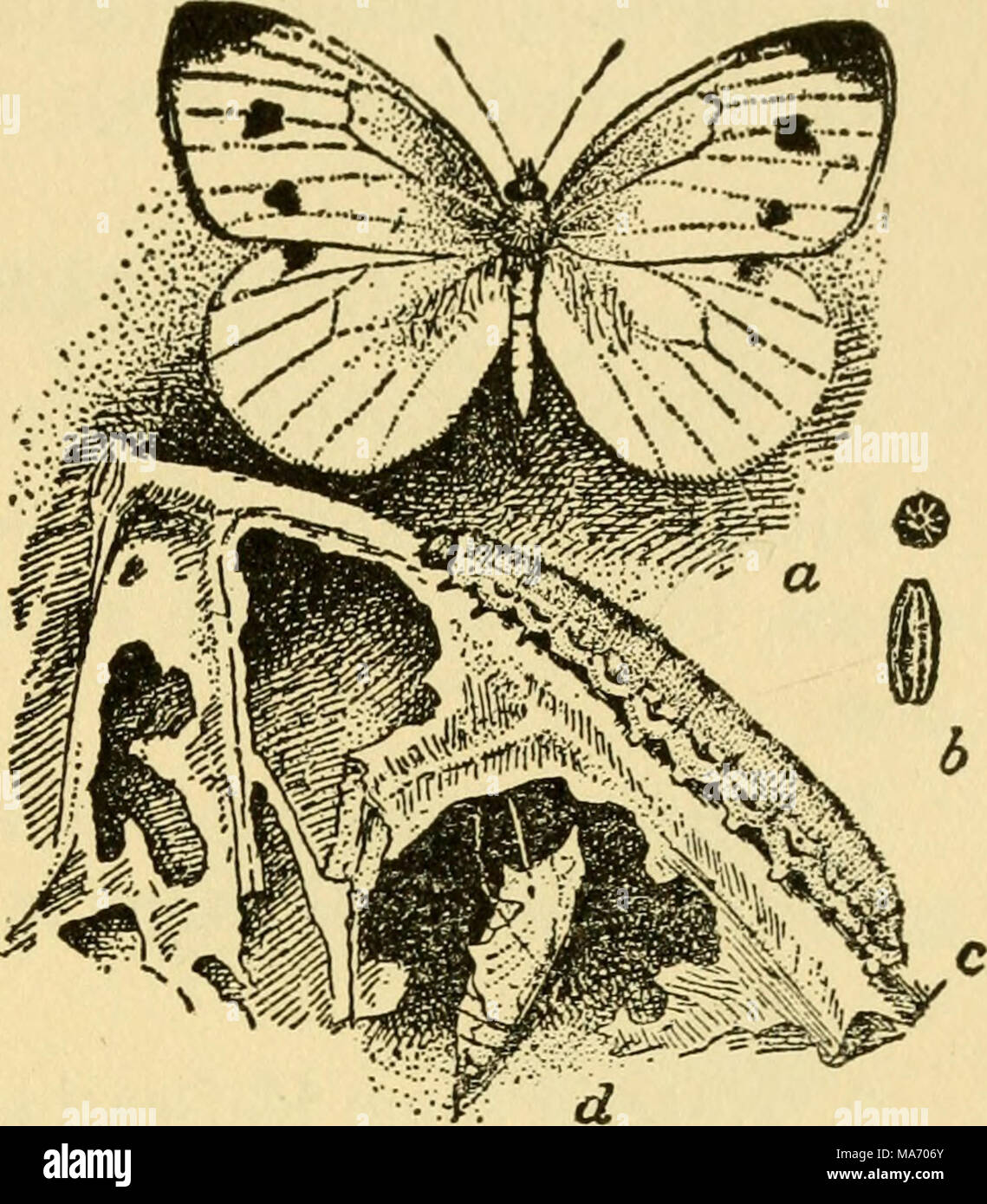 . Elementary lessons on insects . Fig. 45.—The cabbage butterfly: a, the adult; b, end and side views of two eggs, enlarged; c, larva; d, pupa. From U. S. Dept. of Agriculture. 3. Collect miscellaneous adult butterflies from the flowers by day. 4. Collect miscellaneous moths at lights by night. 5. If dried specimens are to be used keep them over night in a relaxing jar. 6. Collect moths and caterpillars of some of the abundant sorts, such as spanworms or loopers, hornworms or sphinxes, and garden cutworms. Many of the economic species listed on pages 152 and 153 will be prevalent in any locali Stock Photohttps://www.alamy.com/image-license-details/?v=1https://www.alamy.com/elementary-lessons-on-insects-fig-45the-cabbage-butterfly-a-the-adult-b-end-and-side-views-of-two-eggs-enlarged-c-larva-d-pupa-from-u-s-dept-of-agriculture-3-collect-miscellaneous-adult-butterflies-from-the-flowers-by-day-4-collect-miscellaneous-moths-at-lights-by-night-5-if-dried-specimens-are-to-be-used-keep-them-over-night-in-a-relaxing-jar-6-collect-moths-and-caterpillars-of-some-of-the-abundant-sorts-such-as-spanworms-or-loopers-hornworms-or-sphinxes-and-garden-cutworms-many-of-the-economic-species-listed-on-pages-152-and-153-will-be-prevalent-in-any-locali-image178404099.html
. Elementary lessons on insects . Fig. 45.—The cabbage butterfly: a, the adult; b, end and side views of two eggs, enlarged; c, larva; d, pupa. From U. S. Dept. of Agriculture. 3. Collect miscellaneous adult butterflies from the flowers by day. 4. Collect miscellaneous moths at lights by night. 5. If dried specimens are to be used keep them over night in a relaxing jar. 6. Collect moths and caterpillars of some of the abundant sorts, such as spanworms or loopers, hornworms or sphinxes, and garden cutworms. Many of the economic species listed on pages 152 and 153 will be prevalent in any locali Stock Photohttps://www.alamy.com/image-license-details/?v=1https://www.alamy.com/elementary-lessons-on-insects-fig-45the-cabbage-butterfly-a-the-adult-b-end-and-side-views-of-two-eggs-enlarged-c-larva-d-pupa-from-u-s-dept-of-agriculture-3-collect-miscellaneous-adult-butterflies-from-the-flowers-by-day-4-collect-miscellaneous-moths-at-lights-by-night-5-if-dried-specimens-are-to-be-used-keep-them-over-night-in-a-relaxing-jar-6-collect-moths-and-caterpillars-of-some-of-the-abundant-sorts-such-as-spanworms-or-loopers-hornworms-or-sphinxes-and-garden-cutworms-many-of-the-economic-species-listed-on-pages-152-and-153-will-be-prevalent-in-any-locali-image178404099.htmlRMMA706Y–. Elementary lessons on insects . Fig. 45.—The cabbage butterfly: a, the adult; b, end and side views of two eggs, enlarged; c, larva; d, pupa. From U. S. Dept. of Agriculture. 3. Collect miscellaneous adult butterflies from the flowers by day. 4. Collect miscellaneous moths at lights by night. 5. If dried specimens are to be used keep them over night in a relaxing jar. 6. Collect moths and caterpillars of some of the abundant sorts, such as spanworms or loopers, hornworms or sphinxes, and garden cutworms. Many of the economic species listed on pages 152 and 153 will be prevalent in any locali
 Comma (Polyggonia c-album), Small Tortoiseshell (Aglais urticae), Peacock (Inachis io ), Meadow Brown (Maniola jurtina), feeding Stock Photohttps://www.alamy.com/image-license-details/?v=1https://www.alamy.com/stock-photo-comma-polyggonia-c-album-small-tortoiseshell-aglais-urticae-peacock-59661551.html
Comma (Polyggonia c-album), Small Tortoiseshell (Aglais urticae), Peacock (Inachis io ), Meadow Brown (Maniola jurtina), feeding Stock Photohttps://www.alamy.com/image-license-details/?v=1https://www.alamy.com/stock-photo-comma-polyggonia-c-album-small-tortoiseshell-aglais-urticae-peacock-59661551.htmlRMDD1PWK–Comma (Polyggonia c-album), Small Tortoiseshell (Aglais urticae), Peacock (Inachis io ), Meadow Brown (Maniola jurtina), feeding
 Airman 1st Class Kyle Engle sorts through a collection of trapped insects to find mosquitoes. Engle, a public health technician with the 1st Special Operations Medical Group, will sift through the insects and then separate the male from the female mosquitoes by using a microscope. Since only the female mosquitoes feed on human blood and potentially transmit disease, they are collected and sent to a lab at Wright Patterson Air Force Base, Ohio for analysis. /Staff Sgt. Andrew Lee Stock Photohttps://www.alamy.com/image-license-details/?v=1https://www.alamy.com/stock-photo-airman-1st-class-kyle-engle-sorts-through-a-collection-of-trapped-129119942.html
Airman 1st Class Kyle Engle sorts through a collection of trapped insects to find mosquitoes. Engle, a public health technician with the 1st Special Operations Medical Group, will sift through the insects and then separate the male from the female mosquitoes by using a microscope. Since only the female mosquitoes feed on human blood and potentially transmit disease, they are collected and sent to a lab at Wright Patterson Air Force Base, Ohio for analysis. /Staff Sgt. Andrew Lee Stock Photohttps://www.alamy.com/image-license-details/?v=1https://www.alamy.com/stock-photo-airman-1st-class-kyle-engle-sorts-through-a-collection-of-trapped-129119942.htmlRMHE1WPE–Airman 1st Class Kyle Engle sorts through a collection of trapped insects to find mosquitoes. Engle, a public health technician with the 1st Special Operations Medical Group, will sift through the insects and then separate the male from the female mosquitoes by using a microscope. Since only the female mosquitoes feed on human blood and potentially transmit disease, they are collected and sent to a lab at Wright Patterson Air Force Base, Ohio for analysis. /Staff Sgt. Andrew Lee
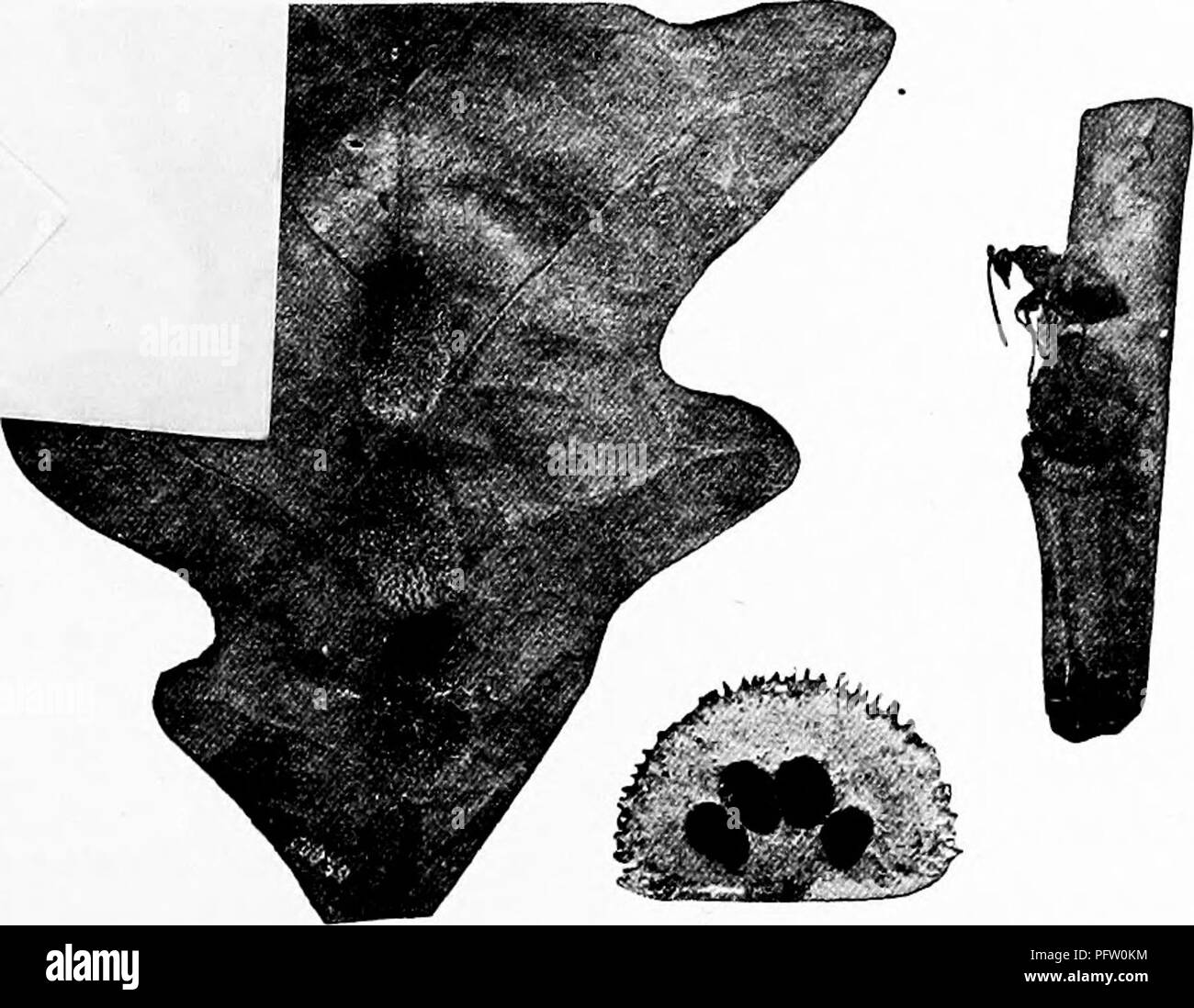 . Handbook of nature-study for teachers and parents, based on the Cornell nature-study leaflets. Nature study. mght—^The galls are protective Mossy rose-gall. >T the little insects which dwell Comstock's Manual, Each kind of insect makes its gall on a certain species of plant, and no one understands is done or why it is so. ^sk the pupils to bring in as many of these galls as possible, ae have open doors and some are entirely closed. Cut open e what sorts of insects are found within it. Place each kind of gall in a tumbler or jar covered with cheese- cloth and place where they may be under Stock Photohttps://www.alamy.com/image-license-details/?v=1https://www.alamy.com/handbook-of-nature-study-for-teachers-and-parents-based-on-the-cornell-nature-study-leaflets-nature-study-mghtthe-galls-are-protective-mossy-rose-gall-gtt-the-little-insects-which-dwell-comstocks-manual-each-kind-of-insect-makes-its-gall-on-a-certain-species-of-plant-and-no-one-understands-is-done-or-why-it-is-so-sk-the-pupils-to-bring-in-as-many-of-these-galls-as-possible-ae-have-open-doors-and-some-are-entirely-closed-cut-open-e-what-sorts-of-insects-are-found-within-it-place-each-kind-of-gall-in-a-tumbler-or-jar-covered-with-cheese-cloth-and-place-where-they-may-be-under-image216293608.html
. Handbook of nature-study for teachers and parents, based on the Cornell nature-study leaflets. Nature study. mght—^The galls are protective Mossy rose-gall. >T the little insects which dwell Comstock's Manual, Each kind of insect makes its gall on a certain species of plant, and no one understands is done or why it is so. ^sk the pupils to bring in as many of these galls as possible, ae have open doors and some are entirely closed. Cut open e what sorts of insects are found within it. Place each kind of gall in a tumbler or jar covered with cheese- cloth and place where they may be under Stock Photohttps://www.alamy.com/image-license-details/?v=1https://www.alamy.com/handbook-of-nature-study-for-teachers-and-parents-based-on-the-cornell-nature-study-leaflets-nature-study-mghtthe-galls-are-protective-mossy-rose-gall-gtt-the-little-insects-which-dwell-comstocks-manual-each-kind-of-insect-makes-its-gall-on-a-certain-species-of-plant-and-no-one-understands-is-done-or-why-it-is-so-sk-the-pupils-to-bring-in-as-many-of-these-galls-as-possible-ae-have-open-doors-and-some-are-entirely-closed-cut-open-e-what-sorts-of-insects-are-found-within-it-place-each-kind-of-gall-in-a-tumbler-or-jar-covered-with-cheese-cloth-and-place-where-they-may-be-under-image216293608.htmlRMPFW0KM–. Handbook of nature-study for teachers and parents, based on the Cornell nature-study leaflets. Nature study. mght—^The galls are protective Mossy rose-gall. >T the little insects which dwell Comstock's Manual, Each kind of insect makes its gall on a certain species of plant, and no one understands is done or why it is so. ^sk the pupils to bring in as many of these galls as possible, ae have open doors and some are entirely closed. Cut open e what sorts of insects are found within it. Place each kind of gall in a tumbler or jar covered with cheese- cloth and place where they may be under
 Butterflies. A book containing severall sorts of insects... 18th century. Source: Add. 5273, plate 28. Author: ALBERT SEBA. Stock Photohttps://www.alamy.com/image-license-details/?v=1https://www.alamy.com/butterflies-a-book-containing-severall-sorts-of-insects-18th-century-source-add-5273-plate-28-author-albert-seba-image226833716.html
Butterflies. A book containing severall sorts of insects... 18th century. Source: Add. 5273, plate 28. Author: ALBERT SEBA. Stock Photohttps://www.alamy.com/image-license-details/?v=1https://www.alamy.com/butterflies-a-book-containing-severall-sorts-of-insects-18th-century-source-add-5273-plate-28-author-albert-seba-image226833716.htmlRMR514M4–Butterflies. A book containing severall sorts of insects... 18th century. Source: Add. 5273, plate 28. Author: ALBERT SEBA.
 Rosa Alain Blanchard, bee Stock Photohttps://www.alamy.com/image-license-details/?v=1https://www.alamy.com/rosa-alain-blanchard-bee-image567818967.html
Rosa Alain Blanchard, bee Stock Photohttps://www.alamy.com/image-license-details/?v=1https://www.alamy.com/rosa-alain-blanchard-bee-image567818967.htmlRF2RYPATR–Rosa Alain Blanchard, bee
 UK weather sunny day in Leeds - A sunny day at Golden Acre Park in Leeds, West Yorkshire had all sorts of insects pollinating flowers. This hover fly was on a dahlia. Taken on the 30th August 2016. Stock Photohttps://www.alamy.com/image-license-details/?v=1https://www.alamy.com/stock-photo-uk-weather-sunny-day-in-leeds-a-sunny-day-at-golden-acre-park-in-leeds-189320731.html
UK weather sunny day in Leeds - A sunny day at Golden Acre Park in Leeds, West Yorkshire had all sorts of insects pollinating flowers. This hover fly was on a dahlia. Taken on the 30th August 2016. Stock Photohttps://www.alamy.com/image-license-details/?v=1https://www.alamy.com/stock-photo-uk-weather-sunny-day-in-leeds-a-sunny-day-at-golden-acre-park-in-leeds-189320731.htmlRMN008EK–UK weather sunny day in Leeds - A sunny day at Golden Acre Park in Leeds, West Yorkshire had all sorts of insects pollinating flowers. This hover fly was on a dahlia. Taken on the 30th August 2016.
 Dahlia, with bumblebee Stock Photohttps://www.alamy.com/image-license-details/?v=1https://www.alamy.com/stock-photo-dahlia-with-bumblebee-127594870.html
Dahlia, with bumblebee Stock Photohttps://www.alamy.com/image-license-details/?v=1https://www.alamy.com/stock-photo-dahlia-with-bumblebee-127594870.htmlRMHBGCFJ–Dahlia, with bumblebee
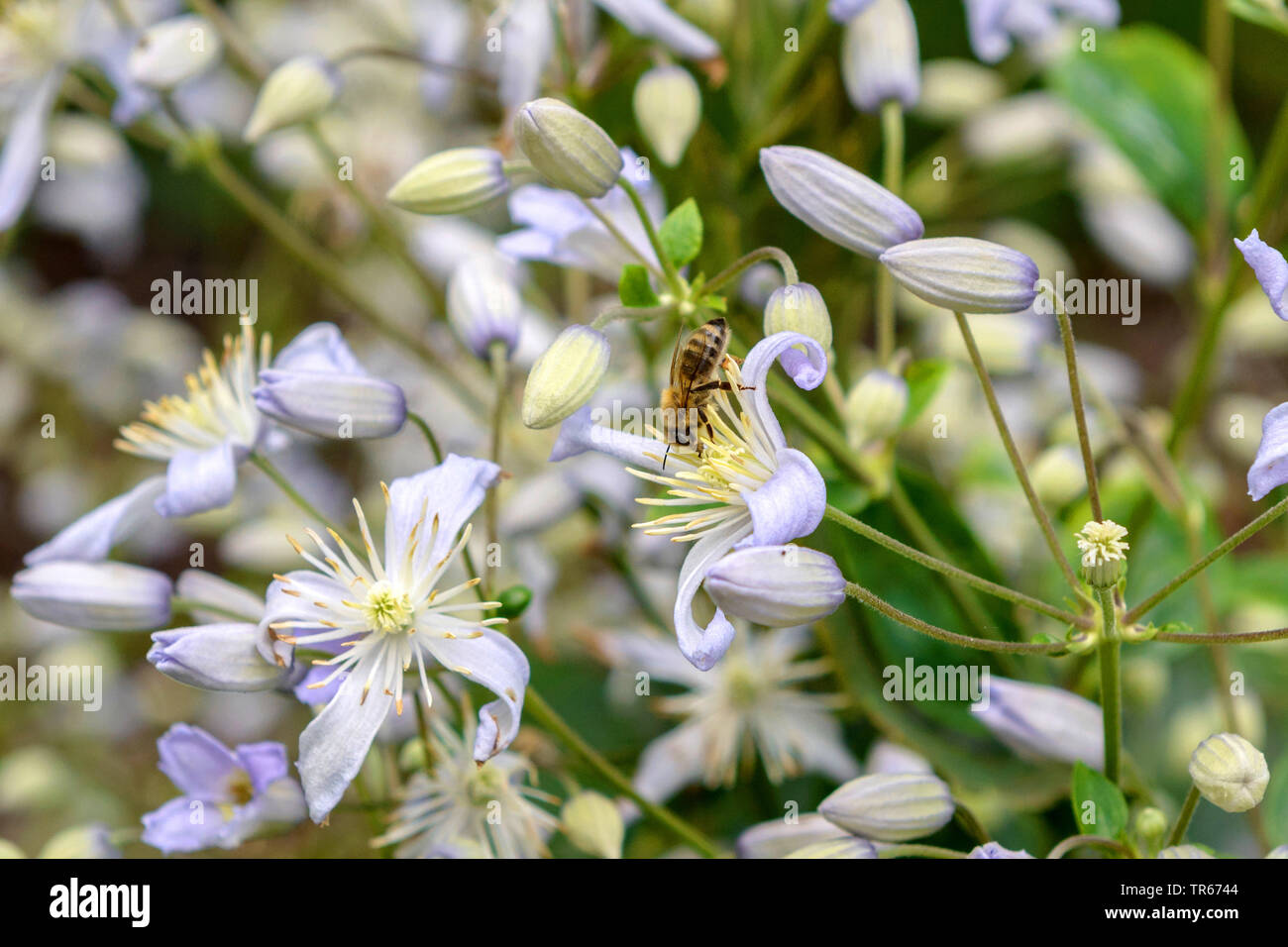 clematis, virgins-bower (Clematis 'Mrs Robert Brydon', Clematis Mrs Robert Brydon), blooming, cultivar Mrs Robert Brydon Stock Photohttps://www.alamy.com/image-license-details/?v=1https://www.alamy.com/clematis-virgins-bower-clematis-mrs-robert-brydon-clematis-mrs-robert-brydon-blooming-cultivar-mrs-robert-brydon-image255219556.html
clematis, virgins-bower (Clematis 'Mrs Robert Brydon', Clematis Mrs Robert Brydon), blooming, cultivar Mrs Robert Brydon Stock Photohttps://www.alamy.com/image-license-details/?v=1https://www.alamy.com/clematis-virgins-bower-clematis-mrs-robert-brydon-clematis-mrs-robert-brydon-blooming-cultivar-mrs-robert-brydon-image255219556.htmlRMTR6744–clematis, virgins-bower (Clematis 'Mrs Robert Brydon', Clematis Mrs Robert Brydon), blooming, cultivar Mrs Robert Brydon
![. Catalogue of seeds, agricultural & horticultural supplies and guide for the garden, field & farm. Nurseries (Horticulture) Catalogs; Flowers Seeds Catalogs; Plants, Ornamental Catalogs; Vegetables Seeds Catalogs; Fruit trees Catalogs; Greenhouse plants Catalogs; Gardening Equipment and supplies Catalogs. Musa Ensete. /^ri<;ultural ai?d horticultural requisites. INSECT, BLIGHT AND VERMIN DESTROYERS.. Buhach. [Persian Powder], It is resinous, impalpable and non-poisonous, and kills all sorts ot insects and worms by filling up the pores and acting on the skin. It is so fine it penetr Stock Photo . Catalogue of seeds, agricultural & horticultural supplies and guide for the garden, field & farm. Nurseries (Horticulture) Catalogs; Flowers Seeds Catalogs; Plants, Ornamental Catalogs; Vegetables Seeds Catalogs; Fruit trees Catalogs; Greenhouse plants Catalogs; Gardening Equipment and supplies Catalogs. Musa Ensete. /^ri<;ultural ai?d horticultural requisites. INSECT, BLIGHT AND VERMIN DESTROYERS.. Buhach. [Persian Powder], It is resinous, impalpable and non-poisonous, and kills all sorts ot insects and worms by filling up the pores and acting on the skin. It is so fine it penetr Stock Photo](https://c8.alamy.com/comp/RJGC3T/catalogue-of-seeds-agricultural-amp-horticultural-supplies-and-guide-for-the-garden-field-amp-farm-nurseries-horticulture-catalogs-flowers-seeds-catalogs-plants-ornamental-catalogs-vegetables-seeds-catalogs-fruit-trees-catalogs-greenhouse-plants-catalogs-gardening-equipment-and-supplies-catalogs-musa-ensete-riltultural-aid-horticultural-requisites-insect-blight-and-vermin-destroyers-buhach-persian-powder-it-is-resinous-impalpable-and-non-poisonous-and-kills-all-sorts-ot-insects-and-worms-by-filling-up-the-pores-and-acting-on-the-skin-it-is-so-fine-it-penetr-RJGC3T.jpg) . Catalogue of seeds, agricultural & horticultural supplies and guide for the garden, field & farm. Nurseries (Horticulture) Catalogs; Flowers Seeds Catalogs; Plants, Ornamental Catalogs; Vegetables Seeds Catalogs; Fruit trees Catalogs; Greenhouse plants Catalogs; Gardening Equipment and supplies Catalogs. Musa Ensete. /^ri<;ultural ai?d horticultural requisites. INSECT, BLIGHT AND VERMIN DESTROYERS.. Buhach. [Persian Powder], It is resinous, impalpable and non-poisonous, and kills all sorts ot insects and worms by filling up the pores and acting on the skin. It is so fine it penetr Stock Photohttps://www.alamy.com/image-license-details/?v=1https://www.alamy.com/catalogue-of-seeds-agricultural-amp-horticultural-supplies-and-guide-for-the-garden-field-amp-farm-nurseries-horticulture-catalogs-flowers-seeds-catalogs-plants-ornamental-catalogs-vegetables-seeds-catalogs-fruit-trees-catalogs-greenhouse-plants-catalogs-gardening-equipment-and-supplies-catalogs-musa-ensete-riltultural-aid-horticultural-requisites-insect-blight-and-vermin-destroyers-buhach-persian-powder-it-is-resinous-impalpable-and-non-poisonous-and-kills-all-sorts-ot-insects-and-worms-by-filling-up-the-pores-and-acting-on-the-skin-it-is-so-fine-it-penetr-image235159340.html
. Catalogue of seeds, agricultural & horticultural supplies and guide for the garden, field & farm. Nurseries (Horticulture) Catalogs; Flowers Seeds Catalogs; Plants, Ornamental Catalogs; Vegetables Seeds Catalogs; Fruit trees Catalogs; Greenhouse plants Catalogs; Gardening Equipment and supplies Catalogs. Musa Ensete. /^ri<;ultural ai?d horticultural requisites. INSECT, BLIGHT AND VERMIN DESTROYERS.. Buhach. [Persian Powder], It is resinous, impalpable and non-poisonous, and kills all sorts ot insects and worms by filling up the pores and acting on the skin. It is so fine it penetr Stock Photohttps://www.alamy.com/image-license-details/?v=1https://www.alamy.com/catalogue-of-seeds-agricultural-amp-horticultural-supplies-and-guide-for-the-garden-field-amp-farm-nurseries-horticulture-catalogs-flowers-seeds-catalogs-plants-ornamental-catalogs-vegetables-seeds-catalogs-fruit-trees-catalogs-greenhouse-plants-catalogs-gardening-equipment-and-supplies-catalogs-musa-ensete-riltultural-aid-horticultural-requisites-insect-blight-and-vermin-destroyers-buhach-persian-powder-it-is-resinous-impalpable-and-non-poisonous-and-kills-all-sorts-ot-insects-and-worms-by-filling-up-the-pores-and-acting-on-the-skin-it-is-so-fine-it-penetr-image235159340.htmlRMRJGC3T–. Catalogue of seeds, agricultural & horticultural supplies and guide for the garden, field & farm. Nurseries (Horticulture) Catalogs; Flowers Seeds Catalogs; Plants, Ornamental Catalogs; Vegetables Seeds Catalogs; Fruit trees Catalogs; Greenhouse plants Catalogs; Gardening Equipment and supplies Catalogs. Musa Ensete. /^ri<;ultural ai?d horticultural requisites. INSECT, BLIGHT AND VERMIN DESTROYERS.. Buhach. [Persian Powder], It is resinous, impalpable and non-poisonous, and kills all sorts ot insects and worms by filling up the pores and acting on the skin. It is so fine it penetr
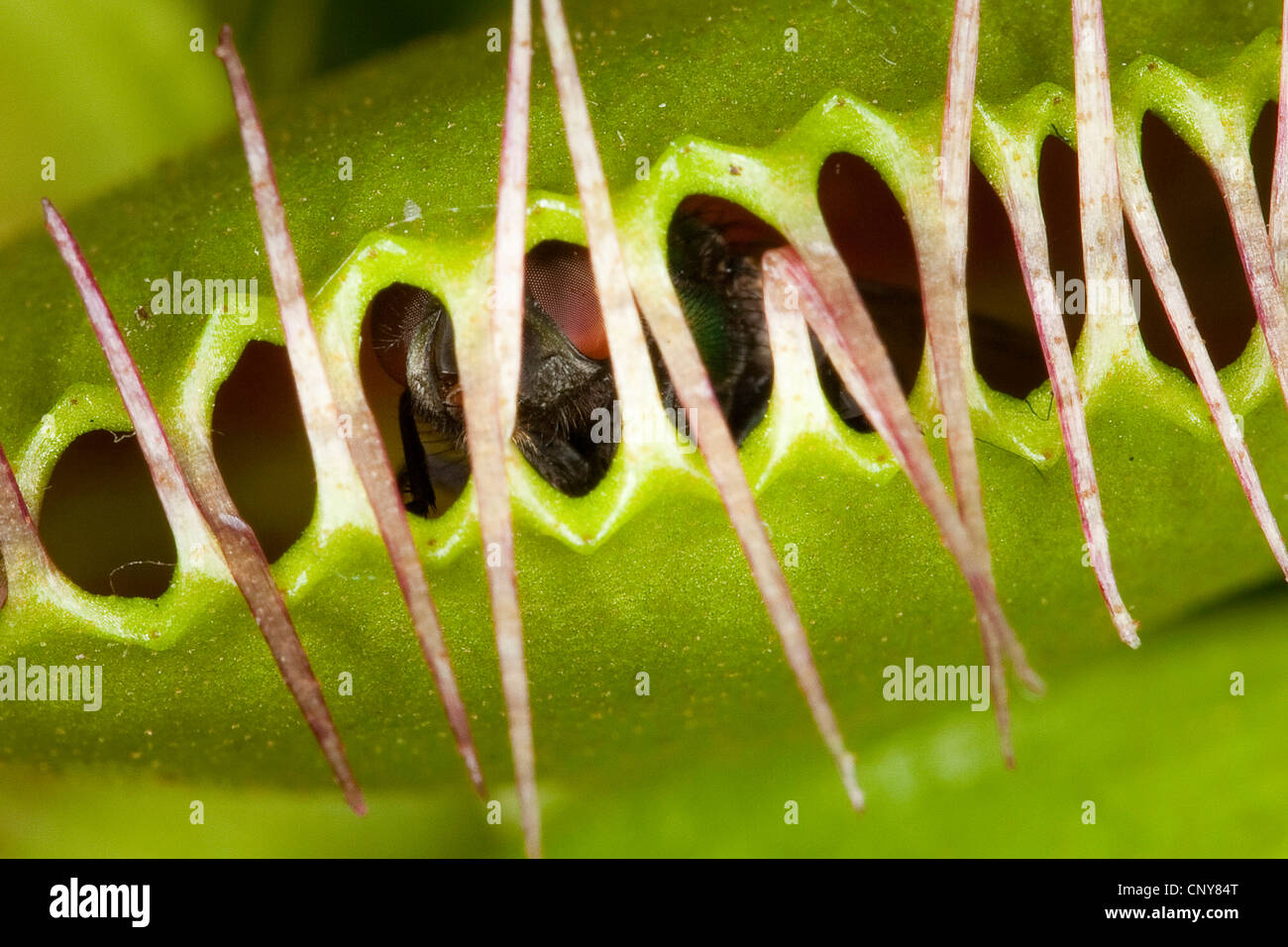 Venus Flytrap, Venus's Flytrap, Venus' Flytrap, Venus Fly Trap, Venus's Fly Trap, Venus' Fly Trap, Fly-Trap (Dionaea muscipula), closed leaf trap with fly Stock Photohttps://www.alamy.com/image-license-details/?v=1https://www.alamy.com/stock-photo-venus-flytrap-venuss-flytrap-venus-flytrap-venus-fly-trap-venuss-fly-47927624.html
Venus Flytrap, Venus's Flytrap, Venus' Flytrap, Venus Fly Trap, Venus's Fly Trap, Venus' Fly Trap, Fly-Trap (Dionaea muscipula), closed leaf trap with fly Stock Photohttps://www.alamy.com/image-license-details/?v=1https://www.alamy.com/stock-photo-venus-flytrap-venuss-flytrap-venus-flytrap-venus-fly-trap-venuss-fly-47927624.htmlRMCNY84T–Venus Flytrap, Venus's Flytrap, Venus' Flytrap, Venus Fly Trap, Venus's Fly Trap, Venus' Fly Trap, Fly-Trap (Dionaea muscipula), closed leaf trap with fly
![Elementary entomology ([c1912]) Elementary entomology elementaryentomo00sand Year: [c1912] CHAPTER XIV FLIES, MOSQUITOES, AND MIDGES (DIPTERA) Characteristics. Insects with one pair of wings borne by the mesothorax; the hind-wings represented by a pair of knobbed threads, called halteres; mouth-parts, suctorial;' metamorphosis, complete. Ordinarily all sorts of small insects with membranous wings are indiscriminately called flics, and the term ' fly ' has been used to form part of a compound name for insects of several different orders, such as May- fly, sawfly, gallfly, butterfly, etc., but, Stock Photo Elementary entomology ([c1912]) Elementary entomology elementaryentomo00sand Year: [c1912] CHAPTER XIV FLIES, MOSQUITOES, AND MIDGES (DIPTERA) Characteristics. Insects with one pair of wings borne by the mesothorax; the hind-wings represented by a pair of knobbed threads, called halteres; mouth-parts, suctorial;' metamorphosis, complete. Ordinarily all sorts of small insects with membranous wings are indiscriminately called flics, and the term ' fly ' has been used to form part of a compound name for insects of several different orders, such as May- fly, sawfly, gallfly, butterfly, etc., but, Stock Photo](https://c8.alamy.com/comp/RWRGWA/elementary-entomology-c1912-elementary-entomology-elementaryentomo00sand-year-c1912-chapter-xiv-flies-mosquitoes-and-midges-diptera-characteristics-insects-with-one-pair-of-wings-borne-by-the-mesothorax-the-hind-wings-represented-by-a-pair-of-knobbed-threads-called-halteres-mouth-parts-suctorial-metamorphosis-complete-ordinarily-all-sorts-of-small-insects-with-membranous-wings-are-indiscriminately-called-flics-and-the-term-fly-has-been-used-to-form-part-of-a-compound-name-for-insects-of-several-different-orders-such-as-may-fly-sawfly-gallfly-butterfly-etc-but-RWRGWA.jpg) Elementary entomology ([c1912]) Elementary entomology elementaryentomo00sand Year: [c1912] CHAPTER XIV FLIES, MOSQUITOES, AND MIDGES (DIPTERA) Characteristics. Insects with one pair of wings borne by the mesothorax; the hind-wings represented by a pair of knobbed threads, called halteres; mouth-parts, suctorial;' metamorphosis, complete. Ordinarily all sorts of small insects with membranous wings are indiscriminately called flics, and the term ' fly ' has been used to form part of a compound name for insects of several different orders, such as May- fly, sawfly, gallfly, butterfly, etc., but, Stock Photohttps://www.alamy.com/image-license-details/?v=1https://www.alamy.com/elementary-entomology-c1912-elementary-entomology-elementaryentomo00sand-year-c1912-chapter-xiv-flies-mosquitoes-and-midges-diptera-characteristics-insects-with-one-pair-of-wings-borne-by-the-mesothorax-the-hind-wings-represented-by-a-pair-of-knobbed-threads-called-halteres-mouth-parts-suctorial-metamorphosis-complete-ordinarily-all-sorts-of-small-insects-with-membranous-wings-are-indiscriminately-called-flics-and-the-term-fly-has-been-used-to-form-part-of-a-compound-name-for-insects-of-several-different-orders-such-as-may-fly-sawfly-gallfly-butterfly-etc-but-image239619334.html
Elementary entomology ([c1912]) Elementary entomology elementaryentomo00sand Year: [c1912] CHAPTER XIV FLIES, MOSQUITOES, AND MIDGES (DIPTERA) Characteristics. Insects with one pair of wings borne by the mesothorax; the hind-wings represented by a pair of knobbed threads, called halteres; mouth-parts, suctorial;' metamorphosis, complete. Ordinarily all sorts of small insects with membranous wings are indiscriminately called flics, and the term ' fly ' has been used to form part of a compound name for insects of several different orders, such as May- fly, sawfly, gallfly, butterfly, etc., but, Stock Photohttps://www.alamy.com/image-license-details/?v=1https://www.alamy.com/elementary-entomology-c1912-elementary-entomology-elementaryentomo00sand-year-c1912-chapter-xiv-flies-mosquitoes-and-midges-diptera-characteristics-insects-with-one-pair-of-wings-borne-by-the-mesothorax-the-hind-wings-represented-by-a-pair-of-knobbed-threads-called-halteres-mouth-parts-suctorial-metamorphosis-complete-ordinarily-all-sorts-of-small-insects-with-membranous-wings-are-indiscriminately-called-flics-and-the-term-fly-has-been-used-to-form-part-of-a-compound-name-for-insects-of-several-different-orders-such-as-may-fly-sawfly-gallfly-butterfly-etc-but-image239619334.htmlRMRWRGWA–Elementary entomology ([c1912]) Elementary entomology elementaryentomo00sand Year: [c1912] CHAPTER XIV FLIES, MOSQUITOES, AND MIDGES (DIPTERA) Characteristics. Insects with one pair of wings borne by the mesothorax; the hind-wings represented by a pair of knobbed threads, called halteres; mouth-parts, suctorial;' metamorphosis, complete. Ordinarily all sorts of small insects with membranous wings are indiscriminately called flics, and the term ' fly ' has been used to form part of a compound name for insects of several different orders, such as May- fly, sawfly, gallfly, butterfly, etc., but,
 . Speisse Kuerbis, Ger. SQUASH Courge, Fr. Calabasa, Sp. One ounce of seed for 25 hills, 3 to 4 pounds for an acre. Culture.âAll Squashes do best in warm and very rich soil. Plant in well manured hills, same as Melons or Cucumbers, the bush varieties 4 feet apart each way, the winter sorts 10 to 12 feet each way. Use seed freely, 8 to 12 seeds to the hill, to provide for losses by insects. When danger of such loss is past, thin to 2 or 4 plants to the hill. To repel the squash vine borer, throw a handful of tobacco dust close around the plants. The large, strong-smelling black squash bug can b Stock Photohttps://www.alamy.com/image-license-details/?v=1https://www.alamy.com/speisse-kuerbis-ger-squash-courge-fr-calabasa-sp-one-ounce-of-seed-for-25-hills-3-to-4-pounds-for-an-acre-cultureall-squashes-do-best-in-warm-and-very-rich-soil-plant-in-well-manured-hills-same-as-melons-or-cucumbers-the-bush-varieties-4-feet-apart-each-way-the-winter-sorts-10-to-12-feet-each-way-use-seed-freely-8-to-12-seeds-to-the-hill-to-provide-for-losses-by-insects-when-danger-of-such-loss-is-past-thin-to-2-or-4-plants-to-the-hill-to-repel-the-squash-vine-borer-throw-a-handful-of-tobacco-dust-close-around-the-plants-the-large-strong-smelling-black-squash-bug-can-b-image179872332.html
. Speisse Kuerbis, Ger. SQUASH Courge, Fr. Calabasa, Sp. One ounce of seed for 25 hills, 3 to 4 pounds for an acre. Culture.âAll Squashes do best in warm and very rich soil. Plant in well manured hills, same as Melons or Cucumbers, the bush varieties 4 feet apart each way, the winter sorts 10 to 12 feet each way. Use seed freely, 8 to 12 seeds to the hill, to provide for losses by insects. When danger of such loss is past, thin to 2 or 4 plants to the hill. To repel the squash vine borer, throw a handful of tobacco dust close around the plants. The large, strong-smelling black squash bug can b Stock Photohttps://www.alamy.com/image-license-details/?v=1https://www.alamy.com/speisse-kuerbis-ger-squash-courge-fr-calabasa-sp-one-ounce-of-seed-for-25-hills-3-to-4-pounds-for-an-acre-cultureall-squashes-do-best-in-warm-and-very-rich-soil-plant-in-well-manured-hills-same-as-melons-or-cucumbers-the-bush-varieties-4-feet-apart-each-way-the-winter-sorts-10-to-12-feet-each-way-use-seed-freely-8-to-12-seeds-to-the-hill-to-provide-for-losses-by-insects-when-danger-of-such-loss-is-past-thin-to-2-or-4-plants-to-the-hill-to-repel-the-squash-vine-borer-throw-a-handful-of-tobacco-dust-close-around-the-plants-the-large-strong-smelling-black-squash-bug-can-b-image179872332.htmlRMMCHTYT–. Speisse Kuerbis, Ger. SQUASH Courge, Fr. Calabasa, Sp. One ounce of seed for 25 hills, 3 to 4 pounds for an acre. Culture.âAll Squashes do best in warm and very rich soil. Plant in well manured hills, same as Melons or Cucumbers, the bush varieties 4 feet apart each way, the winter sorts 10 to 12 feet each way. Use seed freely, 8 to 12 seeds to the hill, to provide for losses by insects. When danger of such loss is past, thin to 2 or 4 plants to the hill. To repel the squash vine borer, throw a handful of tobacco dust close around the plants. The large, strong-smelling black squash bug can b
 Comma (Polyggonia c-album), Meadow Brown (Maniola jurtina), Peacock (Inachis io ), Small Tortoiseshell Aglais urticae, feeding. Stock Photohttps://www.alamy.com/image-license-details/?v=1https://www.alamy.com/stock-photo-comma-polyggonia-c-album-meadow-brown-maniola-jurtina-peacock-inachis-59661696.html
Comma (Polyggonia c-album), Meadow Brown (Maniola jurtina), Peacock (Inachis io ), Small Tortoiseshell Aglais urticae, feeding. Stock Photohttps://www.alamy.com/image-license-details/?v=1https://www.alamy.com/stock-photo-comma-polyggonia-c-album-meadow-brown-maniola-jurtina-peacock-inachis-59661696.htmlRMDD1R2T–Comma (Polyggonia c-album), Meadow Brown (Maniola jurtina), Peacock (Inachis io ), Small Tortoiseshell Aglais urticae, feeding.
 . Insects injurious to fruits. Illustrated with four hundred and forty wood-cuts. Insect pests. ATTACKING THE BRANCHES. 241 origin; hence by grafting the more susceptible varieties on these hardier sorts, the ill effects produced by the lice may in some measure be counteracted. The roots recommended to be used as stocks are those of Concord, Clinton, Herbemont, Cun- ningham, Norton's Virginia, Rentz, Cynthiana, and Taylor. The Clinton, one of the varieties recommended, is particularly liable to the attacks of the gall-producing type of Phylloxera, but the lice are seldom found to any great ext Stock Photohttps://www.alamy.com/image-license-details/?v=1https://www.alamy.com/insects-injurious-to-fruits-illustrated-with-four-hundred-and-forty-wood-cuts-insect-pests-attacking-the-branches-241-origin-hence-by-grafting-the-more-susceptible-varieties-on-these-hardier-sorts-the-ill-effects-produced-by-the-lice-may-in-some-measure-be-counteracted-the-roots-recommended-to-be-used-as-stocks-are-those-of-concord-clinton-herbemont-cun-ningham-nortons-virginia-rentz-cynthiana-and-taylor-the-clinton-one-of-the-varieties-recommended-is-particularly-liable-to-the-attacks-of-the-gall-producing-type-of-phylloxera-but-the-lice-are-seldom-found-to-any-great-ext-image216290165.html
. Insects injurious to fruits. Illustrated with four hundred and forty wood-cuts. Insect pests. ATTACKING THE BRANCHES. 241 origin; hence by grafting the more susceptible varieties on these hardier sorts, the ill effects produced by the lice may in some measure be counteracted. The roots recommended to be used as stocks are those of Concord, Clinton, Herbemont, Cun- ningham, Norton's Virginia, Rentz, Cynthiana, and Taylor. The Clinton, one of the varieties recommended, is particularly liable to the attacks of the gall-producing type of Phylloxera, but the lice are seldom found to any great ext Stock Photohttps://www.alamy.com/image-license-details/?v=1https://www.alamy.com/insects-injurious-to-fruits-illustrated-with-four-hundred-and-forty-wood-cuts-insect-pests-attacking-the-branches-241-origin-hence-by-grafting-the-more-susceptible-varieties-on-these-hardier-sorts-the-ill-effects-produced-by-the-lice-may-in-some-measure-be-counteracted-the-roots-recommended-to-be-used-as-stocks-are-those-of-concord-clinton-herbemont-cun-ningham-nortons-virginia-rentz-cynthiana-and-taylor-the-clinton-one-of-the-varieties-recommended-is-particularly-liable-to-the-attacks-of-the-gall-producing-type-of-phylloxera-but-the-lice-are-seldom-found-to-any-great-ext-image216290165.htmlRMPFTT8N–. Insects injurious to fruits. Illustrated with four hundred and forty wood-cuts. Insect pests. ATTACKING THE BRANCHES. 241 origin; hence by grafting the more susceptible varieties on these hardier sorts, the ill effects produced by the lice may in some measure be counteracted. The roots recommended to be used as stocks are those of Concord, Clinton, Herbemont, Cun- ningham, Norton's Virginia, Rentz, Cynthiana, and Taylor. The Clinton, one of the varieties recommended, is particularly liable to the attacks of the gall-producing type of Phylloxera, but the lice are seldom found to any great ext
 Winged insects. A book containing severall sorts of insects... 18th century. Source: Add. 5273, plate 84. Author: ALBERT SEBA. Stock Photohttps://www.alamy.com/image-license-details/?v=1https://www.alamy.com/winged-insects-a-book-containing-severall-sorts-of-insects-18th-century-source-add-5273-plate-84-author-albert-seba-image227133351.html
Winged insects. A book containing severall sorts of insects... 18th century. Source: Add. 5273, plate 84. Author: ALBERT SEBA. Stock Photohttps://www.alamy.com/image-license-details/?v=1https://www.alamy.com/winged-insects-a-book-containing-severall-sorts-of-insects-18th-century-source-add-5273-plate-84-author-albert-seba-image227133351.htmlRMR5EPWB–Winged insects. A book containing severall sorts of insects... 18th century. Source: Add. 5273, plate 84. Author: ALBERT SEBA.
 UK weather sunny day in Leeds - A sunny day at Golden Acre Park in Leeds, West Yorkshire had all sorts of insects pollinating flowers. This hover fly was on a dahlia. Taken on the 30th August 2016. Stock Photohttps://www.alamy.com/image-license-details/?v=1https://www.alamy.com/stock-photo-uk-weather-sunny-day-in-leeds-a-sunny-day-at-golden-acre-park-in-leeds-189320732.html
UK weather sunny day in Leeds - A sunny day at Golden Acre Park in Leeds, West Yorkshire had all sorts of insects pollinating flowers. This hover fly was on a dahlia. Taken on the 30th August 2016. Stock Photohttps://www.alamy.com/image-license-details/?v=1https://www.alamy.com/stock-photo-uk-weather-sunny-day-in-leeds-a-sunny-day-at-golden-acre-park-in-leeds-189320732.htmlRMN008EM–UK weather sunny day in Leeds - A sunny day at Golden Acre Park in Leeds, West Yorkshire had all sorts of insects pollinating flowers. This hover fly was on a dahlia. Taken on the 30th August 2016.
 Dahlia, with bumblebee Stock Photohttps://www.alamy.com/image-license-details/?v=1https://www.alamy.com/stock-photo-dahlia-with-bumblebee-127594803.html
Dahlia, with bumblebee Stock Photohttps://www.alamy.com/image-license-details/?v=1https://www.alamy.com/stock-photo-dahlia-with-bumblebee-127594803.htmlRMHBGCD7–Dahlia, with bumblebee
 . Bulletin - United States National Museum. Science. Fig. (jy.—A Braconid fly, Meteorus hypiiantrle, and its cocoon. them have rather large heads, long legs, and nearly hare body, which is often brightly colored. Some dig holes in the ground in which to rear their young. Others will tunnel in wood, and others prey cuckoo-like upon the other groups. They capture all sorts 1* insects and spiders, and store them in their nests for the food of the young. Many show much intelli- gence in preparing their burrows and in captur- ing, stinging, and storing their prey. Some of these wasps (Mutillida?) h Stock Photohttps://www.alamy.com/image-license-details/?v=1https://www.alamy.com/bulletin-united-states-national-museum-science-fig-jya-braconid-fly-meteorus-hypiiantrle-and-its-cocoon-them-have-rather-large-heads-long-legs-and-nearly-hare-body-which-is-often-brightly-colored-some-dig-holes-in-the-ground-in-which-to-rear-their-young-others-will-tunnel-in-wood-and-others-prey-cuckoo-like-upon-the-other-groups-they-capture-all-sorts-1-insects-and-spiders-and-store-them-in-their-nests-for-the-food-of-the-young-many-show-much-intelli-gence-in-preparing-their-burrows-and-in-captur-ing-stinging-and-storing-their-prey-some-of-these-wasps-mutillida-h-image233751807.html
. Bulletin - United States National Museum. Science. Fig. (jy.—A Braconid fly, Meteorus hypiiantrle, and its cocoon. them have rather large heads, long legs, and nearly hare body, which is often brightly colored. Some dig holes in the ground in which to rear their young. Others will tunnel in wood, and others prey cuckoo-like upon the other groups. They capture all sorts 1* insects and spiders, and store them in their nests for the food of the young. Many show much intelli- gence in preparing their burrows and in captur- ing, stinging, and storing their prey. Some of these wasps (Mutillida?) h Stock Photohttps://www.alamy.com/image-license-details/?v=1https://www.alamy.com/bulletin-united-states-national-museum-science-fig-jya-braconid-fly-meteorus-hypiiantrle-and-its-cocoon-them-have-rather-large-heads-long-legs-and-nearly-hare-body-which-is-often-brightly-colored-some-dig-holes-in-the-ground-in-which-to-rear-their-young-others-will-tunnel-in-wood-and-others-prey-cuckoo-like-upon-the-other-groups-they-capture-all-sorts-1-insects-and-spiders-and-store-them-in-their-nests-for-the-food-of-the-young-many-show-much-intelli-gence-in-preparing-their-burrows-and-in-captur-ing-stinging-and-storing-their-prey-some-of-these-wasps-mutillida-h-image233751807.htmlRMRG88PR–. Bulletin - United States National Museum. Science. Fig. (jy.—A Braconid fly, Meteorus hypiiantrle, and its cocoon. them have rather large heads, long legs, and nearly hare body, which is often brightly colored. Some dig holes in the ground in which to rear their young. Others will tunnel in wood, and others prey cuckoo-like upon the other groups. They capture all sorts 1* insects and spiders, and store them in their nests for the food of the young. Many show much intelli- gence in preparing their burrows and in captur- ing, stinging, and storing their prey. Some of these wasps (Mutillida?) h
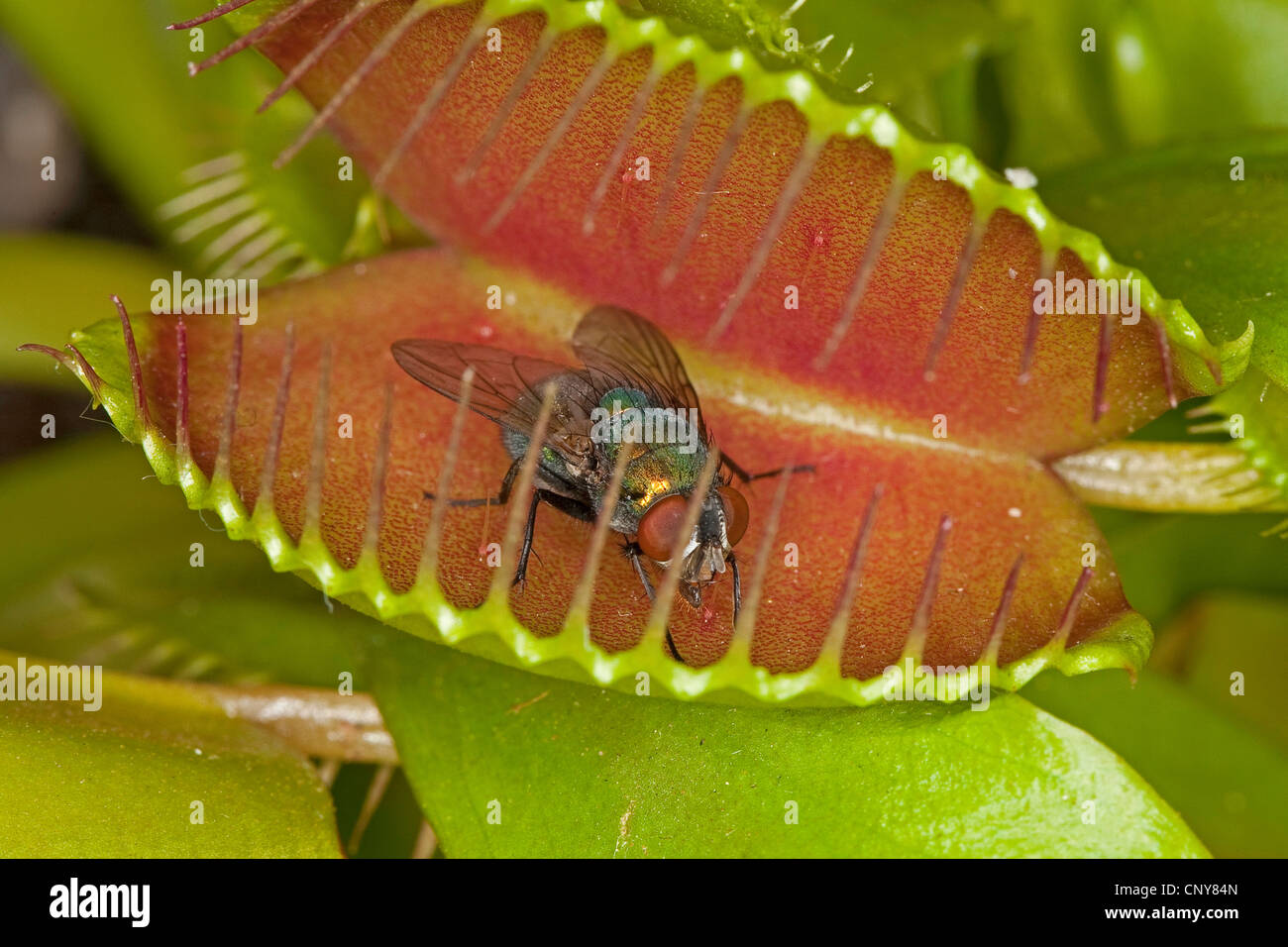 Venus Flytrap, Venus's Flytrap, Venus' Flytrap, Venus Fly Trap, Venus's Fly Trap, Venus' Fly Trap, Fly-Trap (Dionaea muscipula), leaf trap with prey Stock Photohttps://www.alamy.com/image-license-details/?v=1https://www.alamy.com/stock-photo-venus-flytrap-venuss-flytrap-venus-flytrap-venus-fly-trap-venuss-fly-47927621.html
Venus Flytrap, Venus's Flytrap, Venus' Flytrap, Venus Fly Trap, Venus's Fly Trap, Venus' Fly Trap, Fly-Trap (Dionaea muscipula), leaf trap with prey Stock Photohttps://www.alamy.com/image-license-details/?v=1https://www.alamy.com/stock-photo-venus-flytrap-venuss-flytrap-venus-flytrap-venus-fly-trap-venuss-fly-47927621.htmlRMCNY84N–Venus Flytrap, Venus's Flytrap, Venus' Flytrap, Venus Fly Trap, Venus's Fly Trap, Venus' Fly Trap, Fly-Trap (Dionaea muscipula), leaf trap with prey
 Elementary principles of agriculture Elementary principles of agriculture : a text book for the common schools . elementaryprinci02ferg Year: 1913 Some Special Injurious Insects 173 ent wings. They almost always occur in. colonies, frequently of immense numbers. They feed upon the leaves, buds, tender stems, and even the roots in some sorts of plants. They do much damage by sucking the plant j uices. Some species secrete a substance known as 'honey dew,' which is sought after by ants. The ants care for the aphis and protect them from the depredations of predaceous insects. The scale insec Stock Photohttps://www.alamy.com/image-license-details/?v=1https://www.alamy.com/elementary-principles-of-agriculture-elementary-principles-of-agriculture-a-text-book-for-the-common-schools-elementaryprinci02ferg-year-1913-some-special-injurious-insects-173-ent-wings-they-almost-always-occur-in-colonies-frequently-of-immense-numbers-they-feed-upon-the-leaves-buds-tender-stems-and-even-the-roots-in-some-sorts-of-plants-they-do-much-damage-by-sucking-the-plant-j-uices-some-species-secrete-a-substance-known-as-honey-dew-which-is-sought-after-by-ants-the-ants-care-for-the-aphis-and-protect-them-from-the-depredations-of-predaceous-insects-the-scale-insec-image240873865.html
Elementary principles of agriculture Elementary principles of agriculture : a text book for the common schools . elementaryprinci02ferg Year: 1913 Some Special Injurious Insects 173 ent wings. They almost always occur in. colonies, frequently of immense numbers. They feed upon the leaves, buds, tender stems, and even the roots in some sorts of plants. They do much damage by sucking the plant j uices. Some species secrete a substance known as 'honey dew,' which is sought after by ants. The ants care for the aphis and protect them from the depredations of predaceous insects. The scale insec Stock Photohttps://www.alamy.com/image-license-details/?v=1https://www.alamy.com/elementary-principles-of-agriculture-elementary-principles-of-agriculture-a-text-book-for-the-common-schools-elementaryprinci02ferg-year-1913-some-special-injurious-insects-173-ent-wings-they-almost-always-occur-in-colonies-frequently-of-immense-numbers-they-feed-upon-the-leaves-buds-tender-stems-and-even-the-roots-in-some-sorts-of-plants-they-do-much-damage-by-sucking-the-plant-j-uices-some-species-secrete-a-substance-known-as-honey-dew-which-is-sought-after-by-ants-the-ants-care-for-the-aphis-and-protect-them-from-the-depredations-of-predaceous-insects-the-scale-insec-image240873865.htmlRMRYTN21–Elementary principles of agriculture Elementary principles of agriculture : a text book for the common schools . elementaryprinci02ferg Year: 1913 Some Special Injurious Insects 173 ent wings. They almost always occur in. colonies, frequently of immense numbers. They feed upon the leaves, buds, tender stems, and even the roots in some sorts of plants. They do much damage by sucking the plant j uices. Some species secrete a substance known as 'honey dew,' which is sought after by ants. The ants care for the aphis and protect them from the depredations of predaceous insects. The scale insec
 . Speisse Kuerbis, Ger. ^V/U r.^?li Courge, Fr. Calabaza, Sp. One ounce of seed for 25 hills, 3 to 4 pounds for an acre. CULTURE.—All Squashes do best in warm and very rich soil. Plant in well-manured hills, same as melons or cucumbers, the bush varieties 4 feet apart each way, the winter sorts 10 to 12 feet each way. Use seed freely, 8 to 12 seeds to the hill, to provide for losses by insects. When danger of such losses is past, thin to 2 or 4 plants to the hill. To repel the squash vine borer, throw a handful of tobacco dust close around the plants. The large, strong-smelling black squash Stock Photohttps://www.alamy.com/image-license-details/?v=1https://www.alamy.com/speisse-kuerbis-ger-vu-rli-courge-fr-calabaza-sp-one-ounce-of-seed-for-25-hills-3-to-4-pounds-for-an-acre-cultureall-squashes-do-best-in-warm-and-very-rich-soil-plant-in-well-manured-hills-same-as-melons-or-cucumbers-the-bush-varieties-4-feet-apart-each-way-the-winter-sorts-10-to-12-feet-each-way-use-seed-freely-8-to-12-seeds-to-the-hill-to-provide-for-losses-by-insects-when-danger-of-such-losses-is-past-thin-to-2-or-4-plants-to-the-hill-to-repel-the-squash-vine-borer-throw-a-handful-of-tobacco-dust-close-around-the-plants-the-large-strong-smelling-black-squash-image179873437.html
. Speisse Kuerbis, Ger. ^V/U r.^?li Courge, Fr. Calabaza, Sp. One ounce of seed for 25 hills, 3 to 4 pounds for an acre. CULTURE.—All Squashes do best in warm and very rich soil. Plant in well-manured hills, same as melons or cucumbers, the bush varieties 4 feet apart each way, the winter sorts 10 to 12 feet each way. Use seed freely, 8 to 12 seeds to the hill, to provide for losses by insects. When danger of such losses is past, thin to 2 or 4 plants to the hill. To repel the squash vine borer, throw a handful of tobacco dust close around the plants. The large, strong-smelling black squash Stock Photohttps://www.alamy.com/image-license-details/?v=1https://www.alamy.com/speisse-kuerbis-ger-vu-rli-courge-fr-calabaza-sp-one-ounce-of-seed-for-25-hills-3-to-4-pounds-for-an-acre-cultureall-squashes-do-best-in-warm-and-very-rich-soil-plant-in-well-manured-hills-same-as-melons-or-cucumbers-the-bush-varieties-4-feet-apart-each-way-the-winter-sorts-10-to-12-feet-each-way-use-seed-freely-8-to-12-seeds-to-the-hill-to-provide-for-losses-by-insects-when-danger-of-such-losses-is-past-thin-to-2-or-4-plants-to-the-hill-to-repel-the-squash-vine-borer-throw-a-handful-of-tobacco-dust-close-around-the-plants-the-large-strong-smelling-black-squash-image179873437.htmlRMMCHXB9–. Speisse Kuerbis, Ger. ^V/U r.^?li Courge, Fr. Calabaza, Sp. One ounce of seed for 25 hills, 3 to 4 pounds for an acre. CULTURE.—All Squashes do best in warm and very rich soil. Plant in well-manured hills, same as melons or cucumbers, the bush varieties 4 feet apart each way, the winter sorts 10 to 12 feet each way. Use seed freely, 8 to 12 seeds to the hill, to provide for losses by insects. When danger of such losses is past, thin to 2 or 4 plants to the hill. To repel the squash vine borer, throw a handful of tobacco dust close around the plants. The large, strong-smelling black squash
 . Fresh-water biology. Freshwater biology. 896 FRESH-WATER BIOLOGY green herbs. Those of Notonecta are deposited singly on the sides of plant stems under water, and those of Corixa are deposited in similar places or stuck on to the back of crawfishes. The surface-haunting forms are characteristically of scavenger habits, eating the insects of all sorts that fall upon the surface of. Fig. T366. The eggs of the giant water bug, Benacus, on the base of a Typha stem. the water; while the more strictly aquatic bugs are truly predatory with the possible exception of the minute Plea, which is believe Stock Photohttps://www.alamy.com/image-license-details/?v=1https://www.alamy.com/fresh-water-biology-freshwater-biology-896-fresh-water-biology-green-herbs-those-of-notonecta-are-deposited-singly-on-the-sides-of-plant-stems-under-water-and-those-of-corixa-are-deposited-in-similar-places-or-stuck-on-to-the-back-of-crawfishes-the-surface-haunting-forms-are-characteristically-of-scavenger-habits-eating-the-insects-of-all-sorts-that-fall-upon-the-surface-of-fig-t366-the-eggs-of-the-giant-water-bug-benacus-on-the-base-of-a-typha-stem-the-water-while-the-more-strictly-aquatic-bugs-are-truly-predatory-with-the-possible-exception-of-the-minute-plea-which-is-believe-image216344400.html
. Fresh-water biology. Freshwater biology. 896 FRESH-WATER BIOLOGY green herbs. Those of Notonecta are deposited singly on the sides of plant stems under water, and those of Corixa are deposited in similar places or stuck on to the back of crawfishes. The surface-haunting forms are characteristically of scavenger habits, eating the insects of all sorts that fall upon the surface of. Fig. T366. The eggs of the giant water bug, Benacus, on the base of a Typha stem. the water; while the more strictly aquatic bugs are truly predatory with the possible exception of the minute Plea, which is believe Stock Photohttps://www.alamy.com/image-license-details/?v=1https://www.alamy.com/fresh-water-biology-freshwater-biology-896-fresh-water-biology-green-herbs-those-of-notonecta-are-deposited-singly-on-the-sides-of-plant-stems-under-water-and-those-of-corixa-are-deposited-in-similar-places-or-stuck-on-to-the-back-of-crawfishes-the-surface-haunting-forms-are-characteristically-of-scavenger-habits-eating-the-insects-of-all-sorts-that-fall-upon-the-surface-of-fig-t366-the-eggs-of-the-giant-water-bug-benacus-on-the-base-of-a-typha-stem-the-water-while-the-more-strictly-aquatic-bugs-are-truly-predatory-with-the-possible-exception-of-the-minute-plea-which-is-believe-image216344400.htmlRMPFY9DM–. Fresh-water biology. Freshwater biology. 896 FRESH-WATER BIOLOGY green herbs. Those of Notonecta are deposited singly on the sides of plant stems under water, and those of Corixa are deposited in similar places or stuck on to the back of crawfishes. The surface-haunting forms are characteristically of scavenger habits, eating the insects of all sorts that fall upon the surface of. Fig. T366. The eggs of the giant water bug, Benacus, on the base of a Typha stem. the water; while the more strictly aquatic bugs are truly predatory with the possible exception of the minute Plea, which is believe
 Winged insects. A book containing severall sorts of insects... 18th century. Source: Add. 5273, plate 100. Author: ALBERT SEBA. Stock Photohttps://www.alamy.com/image-license-details/?v=1https://www.alamy.com/winged-insects-a-book-containing-severall-sorts-of-insects-18th-century-source-add-5273-plate-100-author-albert-seba-image226945437.html
Winged insects. A book containing severall sorts of insects... 18th century. Source: Add. 5273, plate 100. Author: ALBERT SEBA. Stock Photohttps://www.alamy.com/image-license-details/?v=1https://www.alamy.com/winged-insects-a-book-containing-severall-sorts-of-insects-18th-century-source-add-5273-plate-100-author-albert-seba-image226945437.htmlRMR56765–Winged insects. A book containing severall sorts of insects... 18th century. Source: Add. 5273, plate 100. Author: ALBERT SEBA.
 Dahlia, with bumblebee Stock Photohttps://www.alamy.com/image-license-details/?v=1https://www.alamy.com/stock-photo-dahlia-with-bumblebee-127594942.html
Dahlia, with bumblebee Stock Photohttps://www.alamy.com/image-license-details/?v=1https://www.alamy.com/stock-photo-dahlia-with-bumblebee-127594942.htmlRMHBGCJ6–Dahlia, with bumblebee
 . Bulletin - United States National Museum. Science. COLLECTING AND PRESERVING INSECTS BANKS. 35. Fig. (jy.—A Braconid fly, Meteorus hypiiantrle, and its cocoon. them have rather large heads, long legs, and nearly hare body, which is often brightly colored. Some dig holes in the ground in which to rear their young. Others will tunnel in wood, and others prey cuckoo-like upon the other groups. They capture all sorts 1* insects and spiders, and store them in their nests for the food of the young. Many show much intelli- gence in preparing their burrows and in captur- ing, stinging, and storing t Stock Photohttps://www.alamy.com/image-license-details/?v=1https://www.alamy.com/bulletin-united-states-national-museum-science-collecting-and-preserving-insects-banks-35-fig-jya-braconid-fly-meteorus-hypiiantrle-and-its-cocoon-them-have-rather-large-heads-long-legs-and-nearly-hare-body-which-is-often-brightly-colored-some-dig-holes-in-the-ground-in-which-to-rear-their-young-others-will-tunnel-in-wood-and-others-prey-cuckoo-like-upon-the-other-groups-they-capture-all-sorts-1-insects-and-spiders-and-store-them-in-their-nests-for-the-food-of-the-young-many-show-much-intelli-gence-in-preparing-their-burrows-and-in-captur-ing-stinging-and-storing-t-image233751818.html
. Bulletin - United States National Museum. Science. COLLECTING AND PRESERVING INSECTS BANKS. 35. Fig. (jy.—A Braconid fly, Meteorus hypiiantrle, and its cocoon. them have rather large heads, long legs, and nearly hare body, which is often brightly colored. Some dig holes in the ground in which to rear their young. Others will tunnel in wood, and others prey cuckoo-like upon the other groups. They capture all sorts 1* insects and spiders, and store them in their nests for the food of the young. Many show much intelli- gence in preparing their burrows and in captur- ing, stinging, and storing t Stock Photohttps://www.alamy.com/image-license-details/?v=1https://www.alamy.com/bulletin-united-states-national-museum-science-collecting-and-preserving-insects-banks-35-fig-jya-braconid-fly-meteorus-hypiiantrle-and-its-cocoon-them-have-rather-large-heads-long-legs-and-nearly-hare-body-which-is-often-brightly-colored-some-dig-holes-in-the-ground-in-which-to-rear-their-young-others-will-tunnel-in-wood-and-others-prey-cuckoo-like-upon-the-other-groups-they-capture-all-sorts-1-insects-and-spiders-and-store-them-in-their-nests-for-the-food-of-the-young-many-show-much-intelli-gence-in-preparing-their-burrows-and-in-captur-ing-stinging-and-storing-t-image233751818.htmlRMRG88R6–. Bulletin - United States National Museum. Science. COLLECTING AND PRESERVING INSECTS BANKS. 35. Fig. (jy.—A Braconid fly, Meteorus hypiiantrle, and its cocoon. them have rather large heads, long legs, and nearly hare body, which is often brightly colored. Some dig holes in the ground in which to rear their young. Others will tunnel in wood, and others prey cuckoo-like upon the other groups. They capture all sorts 1* insects and spiders, and store them in their nests for the food of the young. Many show much intelli- gence in preparing their burrows and in captur- ing, stinging, and storing t
 Venus Flytrap, Venus's Flytrap, Venus' Flytrap, Venus Fly Trap, Venus's Fly Trap, Venus' Fly Trap, Fly-Trap (Dionaea muscipula), completely closed leaf trap Stock Photohttps://www.alamy.com/image-license-details/?v=1https://www.alamy.com/stock-photo-venus-flytrap-venuss-flytrap-venus-flytrap-venus-fly-trap-venuss-fly-47927630.html
Venus Flytrap, Venus's Flytrap, Venus' Flytrap, Venus Fly Trap, Venus's Fly Trap, Venus' Fly Trap, Fly-Trap (Dionaea muscipula), completely closed leaf trap Stock Photohttps://www.alamy.com/image-license-details/?v=1https://www.alamy.com/stock-photo-venus-flytrap-venuss-flytrap-venus-flytrap-venus-fly-trap-venuss-fly-47927630.htmlRMCNY852–Venus Flytrap, Venus's Flytrap, Venus' Flytrap, Venus Fly Trap, Venus's Fly Trap, Venus' Fly Trap, Fly-Trap (Dionaea muscipula), completely closed leaf trap
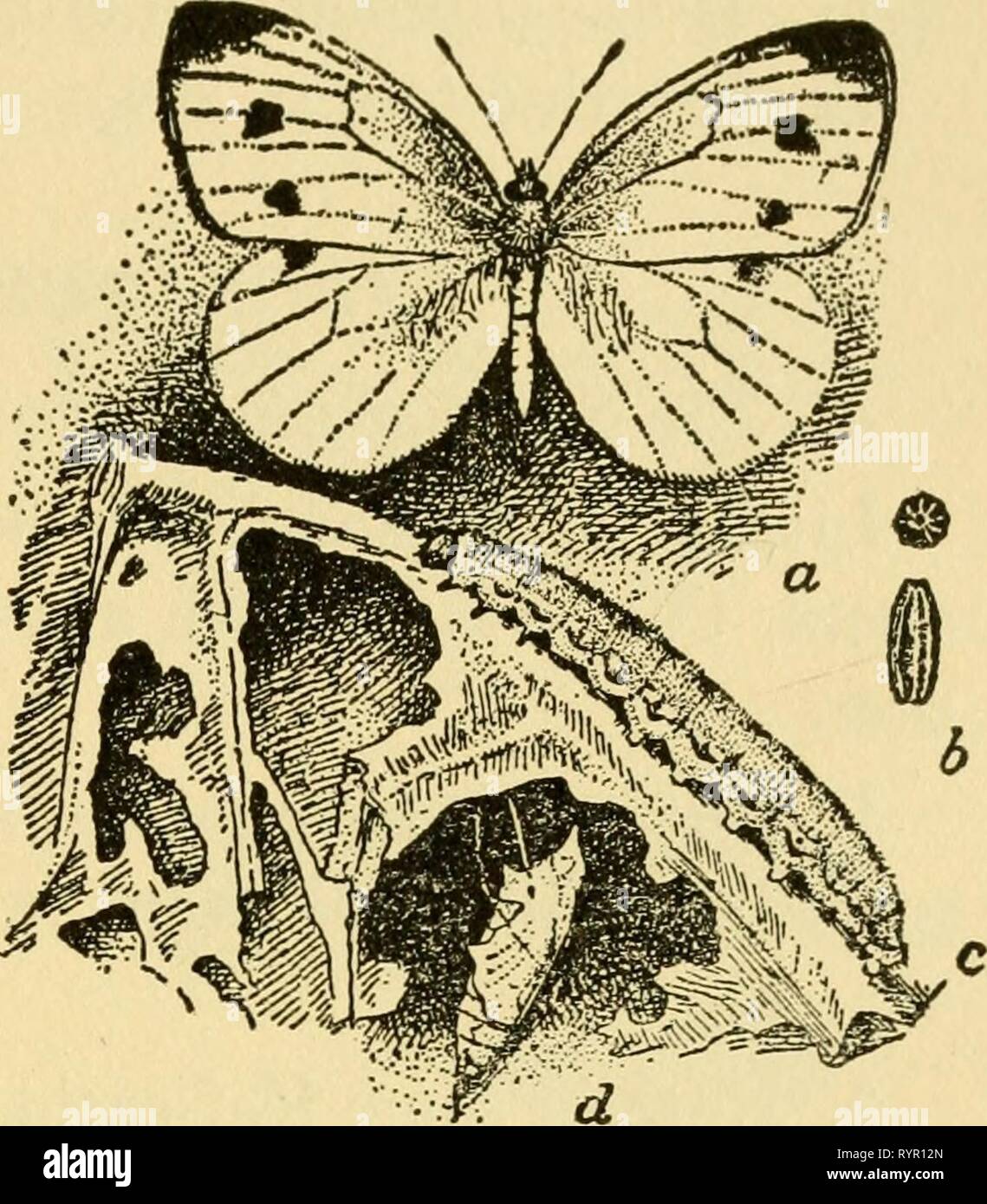 Elementary lessons on insects (1928) Elementary lessons on insects . elementarylesson00need Year: 1928 LEPIDOPTERA 111 Fig. 45.—The cabbage butterfly: a, the adult; b, end and side views of two eggs, enlarged; c, larva; d, pupa. From U. S. Dept. of Agriculture. 3. Collect miscellaneous adult butterflies from the flowers by day. 4. Collect miscellaneous moths at lights by night. 5. If dried specimens are to be used keep them over night in a relaxing jar. 6. Collect moths and caterpillars of some of the abundant sorts, such as spanworms or loopers, hornworms or sphinxes, and garden cutworms. Stock Photohttps://www.alamy.com/image-license-details/?v=1https://www.alamy.com/elementary-lessons-on-insects-1928-elementary-lessons-on-insects-elementarylesson00need-year-1928-lepidoptera-111-fig-45the-cabbage-butterfly-a-the-adult-b-end-and-side-views-of-two-eggs-enlarged-c-larva-d-pupa-from-u-s-dept-of-agriculture-3-collect-miscellaneous-adult-butterflies-from-the-flowers-by-day-4-collect-miscellaneous-moths-at-lights-by-night-5-if-dried-specimens-are-to-be-used-keep-them-over-night-in-a-relaxing-jar-6-collect-moths-and-caterpillars-of-some-of-the-abundant-sorts-such-as-spanworms-or-loopers-hornworms-or-sphinxes-and-garden-cutworms-image240836253.html
Elementary lessons on insects (1928) Elementary lessons on insects . elementarylesson00need Year: 1928 LEPIDOPTERA 111 Fig. 45.—The cabbage butterfly: a, the adult; b, end and side views of two eggs, enlarged; c, larva; d, pupa. From U. S. Dept. of Agriculture. 3. Collect miscellaneous adult butterflies from the flowers by day. 4. Collect miscellaneous moths at lights by night. 5. If dried specimens are to be used keep them over night in a relaxing jar. 6. Collect moths and caterpillars of some of the abundant sorts, such as spanworms or loopers, hornworms or sphinxes, and garden cutworms. Stock Photohttps://www.alamy.com/image-license-details/?v=1https://www.alamy.com/elementary-lessons-on-insects-1928-elementary-lessons-on-insects-elementarylesson00need-year-1928-lepidoptera-111-fig-45the-cabbage-butterfly-a-the-adult-b-end-and-side-views-of-two-eggs-enlarged-c-larva-d-pupa-from-u-s-dept-of-agriculture-3-collect-miscellaneous-adult-butterflies-from-the-flowers-by-day-4-collect-miscellaneous-moths-at-lights-by-night-5-if-dried-specimens-are-to-be-used-keep-them-over-night-in-a-relaxing-jar-6-collect-moths-and-caterpillars-of-some-of-the-abundant-sorts-such-as-spanworms-or-loopers-hornworms-or-sphinxes-and-garden-cutworms-image240836253.htmlRMRYR12N–Elementary lessons on insects (1928) Elementary lessons on insects . elementarylesson00need Year: 1928 LEPIDOPTERA 111 Fig. 45.—The cabbage butterfly: a, the adult; b, end and side views of two eggs, enlarged; c, larva; d, pupa. From U. S. Dept. of Agriculture. 3. Collect miscellaneous adult butterflies from the flowers by day. 4. Collect miscellaneous moths at lights by night. 5. If dried specimens are to be used keep them over night in a relaxing jar. 6. Collect moths and caterpillars of some of the abundant sorts, such as spanworms or loopers, hornworms or sphinxes, and garden cutworms.
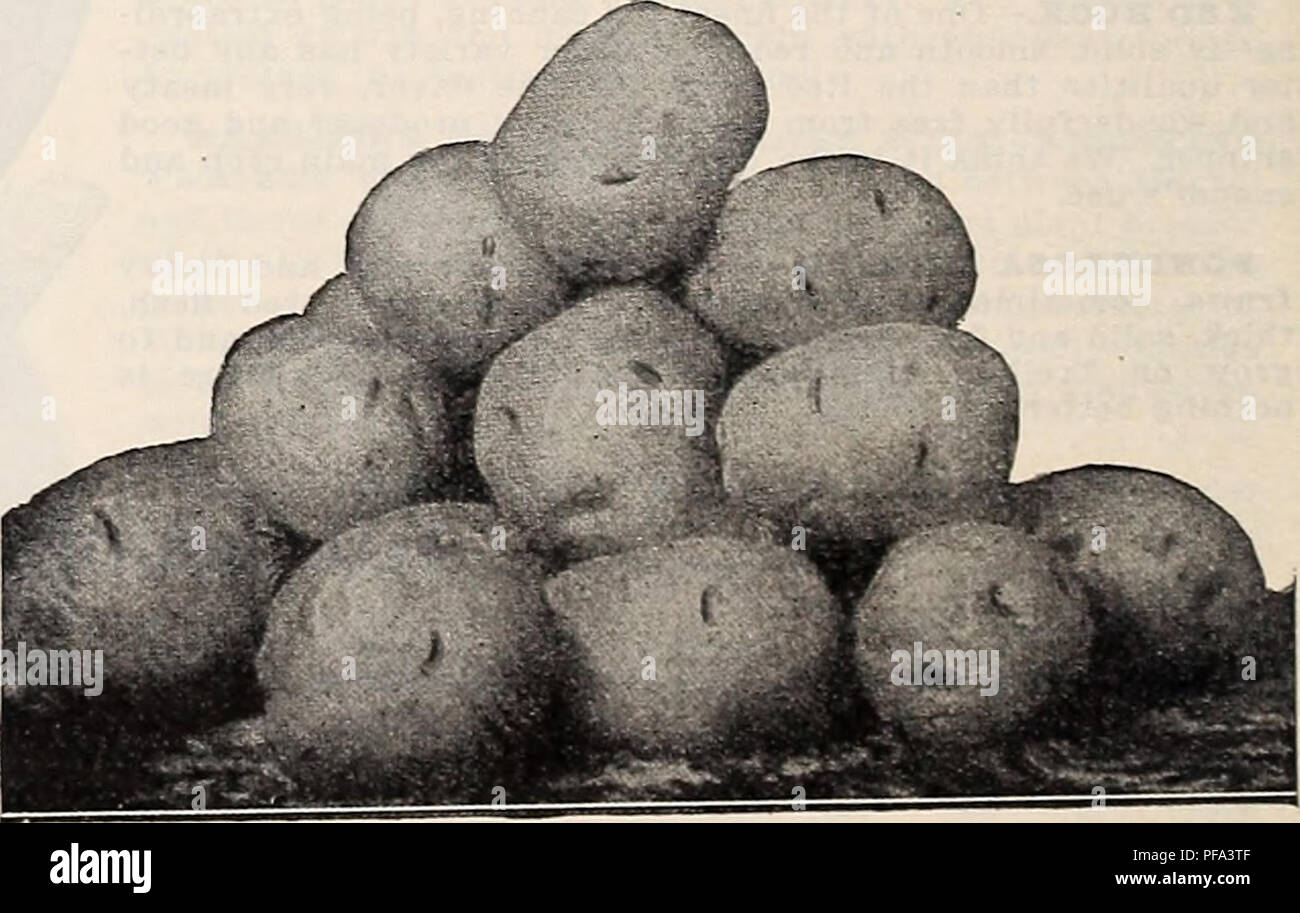 . Diamond jubilee 75th anniversary. Gardening Equipment and supplies Catalogs; Agricultural implements Catalogs; Seeds Catalogs; Bulbs (Plants) Catalogs; Vegetables Catalogs; Flowers Catalogs. TURNIP For early use, sow the small sorts as soon as the ground can be worked in the spring, in drills 14 inches apart, the Rutabagas 30 inches. As the seed is very fine, it should be covered but slightly, excepting in very dry weather. Select light, and if possible, new soil and manure with plaster and ashes or phosphates. Should the young plants be troubled with insects, a sprinkling of slug shot will Stock Photohttps://www.alamy.com/image-license-details/?v=1https://www.alamy.com/diamond-jubilee-75th-anniversary-gardening-equipment-and-supplies-catalogs-agricultural-implements-catalogs-seeds-catalogs-bulbs-plants-catalogs-vegetables-catalogs-flowers-catalogs-turnip-for-early-use-sow-the-small-sorts-as-soon-as-the-ground-can-be-worked-in-the-spring-in-drills-14-inches-apart-the-rutabagas-30-inches-as-the-seed-is-very-fine-it-should-be-covered-but-slightly-excepting-in-very-dry-weather-select-light-and-if-possible-new-soil-and-manure-with-plaster-and-ashes-or-phosphates-should-the-young-plants-be-troubled-with-insects-a-sprinkling-of-slug-shot-will-image215966815.html
. Diamond jubilee 75th anniversary. Gardening Equipment and supplies Catalogs; Agricultural implements Catalogs; Seeds Catalogs; Bulbs (Plants) Catalogs; Vegetables Catalogs; Flowers Catalogs. TURNIP For early use, sow the small sorts as soon as the ground can be worked in the spring, in drills 14 inches apart, the Rutabagas 30 inches. As the seed is very fine, it should be covered but slightly, excepting in very dry weather. Select light, and if possible, new soil and manure with plaster and ashes or phosphates. Should the young plants be troubled with insects, a sprinkling of slug shot will Stock Photohttps://www.alamy.com/image-license-details/?v=1https://www.alamy.com/diamond-jubilee-75th-anniversary-gardening-equipment-and-supplies-catalogs-agricultural-implements-catalogs-seeds-catalogs-bulbs-plants-catalogs-vegetables-catalogs-flowers-catalogs-turnip-for-early-use-sow-the-small-sorts-as-soon-as-the-ground-can-be-worked-in-the-spring-in-drills-14-inches-apart-the-rutabagas-30-inches-as-the-seed-is-very-fine-it-should-be-covered-but-slightly-excepting-in-very-dry-weather-select-light-and-if-possible-new-soil-and-manure-with-plaster-and-ashes-or-phosphates-should-the-young-plants-be-troubled-with-insects-a-sprinkling-of-slug-shot-will-image215966815.htmlRMPFA3TF–. Diamond jubilee 75th anniversary. Gardening Equipment and supplies Catalogs; Agricultural implements Catalogs; Seeds Catalogs; Bulbs (Plants) Catalogs; Vegetables Catalogs; Flowers Catalogs. TURNIP For early use, sow the small sorts as soon as the ground can be worked in the spring, in drills 14 inches apart, the Rutabagas 30 inches. As the seed is very fine, it should be covered but slightly, excepting in very dry weather. Select light, and if possible, new soil and manure with plaster and ashes or phosphates. Should the young plants be troubled with insects, a sprinkling of slug shot will
 Butterfly and moth. A book containing severall sorts of insects... 18th century. Source: Add. 5273, plate 59. Author: ALBERT SEBA. Stock Photohttps://www.alamy.com/image-license-details/?v=1https://www.alamy.com/butterfly-and-moth-a-book-containing-severall-sorts-of-insects-18th-century-source-add-5273-plate-59-author-albert-seba-image226859355.html
Butterfly and moth. A book containing severall sorts of insects... 18th century. Source: Add. 5273, plate 59. Author: ALBERT SEBA. Stock Photohttps://www.alamy.com/image-license-details/?v=1https://www.alamy.com/butterfly-and-moth-a-book-containing-severall-sorts-of-insects-18th-century-source-add-5273-plate-59-author-albert-seba-image226859355.htmlRMR529BR–Butterfly and moth. A book containing severall sorts of insects... 18th century. Source: Add. 5273, plate 59. Author: ALBERT SEBA.
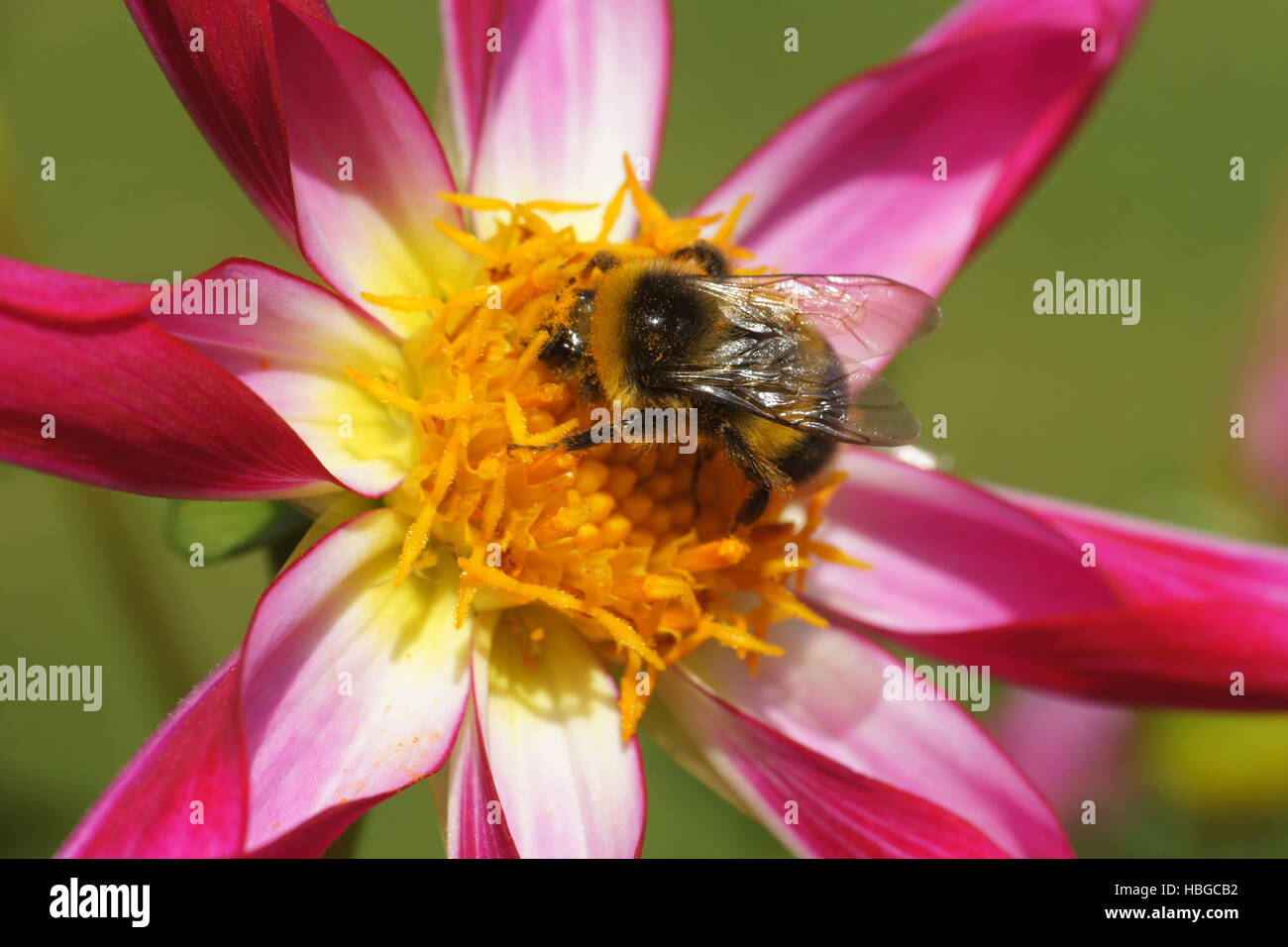 Dahlia, with bumblebee Stock Photohttps://www.alamy.com/image-license-details/?v=1https://www.alamy.com/stock-photo-dahlia-with-bumblebee-127594742.html
Dahlia, with bumblebee Stock Photohttps://www.alamy.com/image-license-details/?v=1https://www.alamy.com/stock-photo-dahlia-with-bumblebee-127594742.htmlRMHBGCB2–Dahlia, with bumblebee
 Hybrid rose Stock Photohttps://www.alamy.com/image-license-details/?v=1https://www.alamy.com/stock-photo-hybrid-rose-75075151.html
Hybrid rose Stock Photohttps://www.alamy.com/image-license-details/?v=1https://www.alamy.com/stock-photo-hybrid-rose-75075151.htmlRMEA3Y3B–Hybrid rose
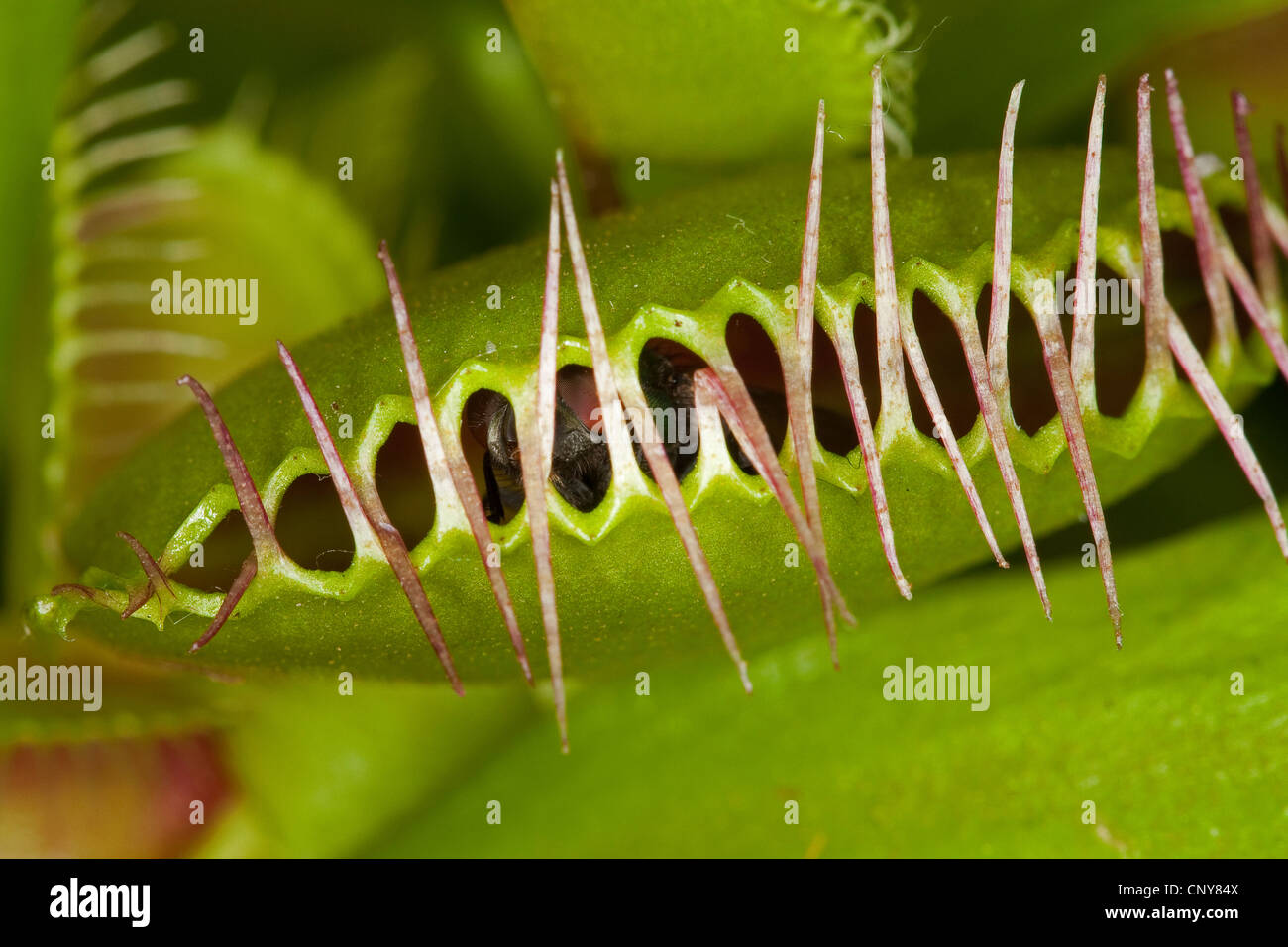 Venus Flytrap, Venus's Flytrap, Venus' Flytrap, Venus Fly Trap, Venus's Fly Trap, Venus' Fly Trap, Fly-Trap (Dionaea muscipula), closed leaf trap with fly Stock Photohttps://www.alamy.com/image-license-details/?v=1https://www.alamy.com/stock-photo-venus-flytrap-venuss-flytrap-venus-flytrap-venus-fly-trap-venuss-fly-47927626.html
Venus Flytrap, Venus's Flytrap, Venus' Flytrap, Venus Fly Trap, Venus's Fly Trap, Venus' Fly Trap, Fly-Trap (Dionaea muscipula), closed leaf trap with fly Stock Photohttps://www.alamy.com/image-license-details/?v=1https://www.alamy.com/stock-photo-venus-flytrap-venuss-flytrap-venus-flytrap-venus-fly-trap-venuss-fly-47927626.htmlRMCNY84X–Venus Flytrap, Venus's Flytrap, Venus' Flytrap, Venus Fly Trap, Venus's Fly Trap, Venus' Fly Trap, Fly-Trap (Dionaea muscipula), closed leaf trap with fly
 . Handbook of nature-study for teachers and parents, based on the Cornell nature-study leaflets. Nature study. mght—^The galls are protective Mossy rose-gall. >T the little insects which dwell Comstock's Manual, Each kind of insect makes its gall on a certain species of plant, and no one understands is done or why it is so. ^sk the pupils to bring in as many of these galls as possible, ae have open doors and some are entirely closed. Cut open e what sorts of insects are found within it. Place each kind of gall in a tumbler or jar covered with cheese- cloth and place where they may be under Stock Photohttps://www.alamy.com/image-license-details/?v=1https://www.alamy.com/handbook-of-nature-study-for-teachers-and-parents-based-on-the-cornell-nature-study-leaflets-nature-study-mghtthe-galls-are-protective-mossy-rose-gall-gtt-the-little-insects-which-dwell-comstocks-manual-each-kind-of-insect-makes-its-gall-on-a-certain-species-of-plant-and-no-one-understands-is-done-or-why-it-is-so-sk-the-pupils-to-bring-in-as-many-of-these-galls-as-possible-ae-have-open-doors-and-some-are-entirely-closed-cut-open-e-what-sorts-of-insects-are-found-within-it-place-each-kind-of-gall-in-a-tumbler-or-jar-covered-with-cheese-cloth-and-place-where-they-may-be-under-image231972809.html
. Handbook of nature-study for teachers and parents, based on the Cornell nature-study leaflets. Nature study. mght—^The galls are protective Mossy rose-gall. >T the little insects which dwell Comstock's Manual, Each kind of insect makes its gall on a certain species of plant, and no one understands is done or why it is so. ^sk the pupils to bring in as many of these galls as possible, ae have open doors and some are entirely closed. Cut open e what sorts of insects are found within it. Place each kind of gall in a tumbler or jar covered with cheese- cloth and place where they may be under Stock Photohttps://www.alamy.com/image-license-details/?v=1https://www.alamy.com/handbook-of-nature-study-for-teachers-and-parents-based-on-the-cornell-nature-study-leaflets-nature-study-mghtthe-galls-are-protective-mossy-rose-gall-gtt-the-little-insects-which-dwell-comstocks-manual-each-kind-of-insect-makes-its-gall-on-a-certain-species-of-plant-and-no-one-understands-is-done-or-why-it-is-so-sk-the-pupils-to-bring-in-as-many-of-these-galls-as-possible-ae-have-open-doors-and-some-are-entirely-closed-cut-open-e-what-sorts-of-insects-are-found-within-it-place-each-kind-of-gall-in-a-tumbler-or-jar-covered-with-cheese-cloth-and-place-where-they-may-be-under-image231972809.htmlRMRDB7K5–. Handbook of nature-study for teachers and parents, based on the Cornell nature-study leaflets. Nature study. mght—^The galls are protective Mossy rose-gall. >T the little insects which dwell Comstock's Manual, Each kind of insect makes its gall on a certain species of plant, and no one understands is done or why it is so. ^sk the pupils to bring in as many of these galls as possible, ae have open doors and some are entirely closed. Cut open e what sorts of insects are found within it. Place each kind of gall in a tumbler or jar covered with cheese- cloth and place where they may be under
 Dreer's garden book seventy-third Dreer's garden book : seventy-third annual edition 1911 dreersgardenbook1911henr Year: 1911 42 mi j-HENRrADREER--PflllADELPHU--PA-.^mREUABkE VEGETABLE SEEDS fT4 SQUASH. Speise-Kurbis, Ger. One ounce of seed for 25 hills, CULTURE.—All Squashes do best in warm and very rich soil Gourge, Fr. Culabaza, Sp. 3 to 4 pounds for an acre. Plant in well manured hills, same as melons or cucumbers, -.he bush varieties 4 feet apart each way, the winter sorts 10 to 12 feet each way. Use seed freely, 8 to 12 seeds to the hill, to pro- vide for losses by insects. When dang Stock Photohttps://www.alamy.com/image-license-details/?v=1https://www.alamy.com/dreers-garden-book-seventy-third-dreers-garden-book-seventy-third-annual-edition-1911-dreersgardenbook1911henr-year-1911-42-mi-j-henrradreer-pfllladelphu-pa-mreuabke-vegetable-seeds-ft4-squash-speise-kurbis-ger-one-ounce-of-seed-for-25-hills-cultureall-squashes-do-best-in-warm-and-very-rich-soil-gourge-fr-culabaza-sp-3-to-4-pounds-for-an-acre-plant-in-well-manured-hills-same-as-melons-or-cucumbers-he-bush-varieties-4-feet-apart-each-way-the-winter-sorts-10-to-12-feet-each-way-use-seed-freely-8-to-12-seeds-to-the-hill-to-pro-vide-for-losses-by-insects-when-dang-image241414079.html
Dreer's garden book seventy-third Dreer's garden book : seventy-third annual edition 1911 dreersgardenbook1911henr Year: 1911 42 mi j-HENRrADREER--PflllADELPHU--PA-.^mREUABkE VEGETABLE SEEDS fT4 SQUASH. Speise-Kurbis, Ger. One ounce of seed for 25 hills, CULTURE.—All Squashes do best in warm and very rich soil Gourge, Fr. Culabaza, Sp. 3 to 4 pounds for an acre. Plant in well manured hills, same as melons or cucumbers, -.he bush varieties 4 feet apart each way, the winter sorts 10 to 12 feet each way. Use seed freely, 8 to 12 seeds to the hill, to pro- vide for losses by insects. When dang Stock Photohttps://www.alamy.com/image-license-details/?v=1https://www.alamy.com/dreers-garden-book-seventy-third-dreers-garden-book-seventy-third-annual-edition-1911-dreersgardenbook1911henr-year-1911-42-mi-j-henrradreer-pfllladelphu-pa-mreuabke-vegetable-seeds-ft4-squash-speise-kurbis-ger-one-ounce-of-seed-for-25-hills-cultureall-squashes-do-best-in-warm-and-very-rich-soil-gourge-fr-culabaza-sp-3-to-4-pounds-for-an-acre-plant-in-well-manured-hills-same-as-melons-or-cucumbers-he-bush-varieties-4-feet-apart-each-way-the-winter-sorts-10-to-12-feet-each-way-use-seed-freely-8-to-12-seeds-to-the-hill-to-pro-vide-for-losses-by-insects-when-dang-image241414079.htmlRMT0NA3B–Dreer's garden book seventy-third Dreer's garden book : seventy-third annual edition 1911 dreersgardenbook1911henr Year: 1911 42 mi j-HENRrADREER--PflllADELPHU--PA-.^mREUABkE VEGETABLE SEEDS fT4 SQUASH. Speise-Kurbis, Ger. One ounce of seed for 25 hills, CULTURE.—All Squashes do best in warm and very rich soil Gourge, Fr. Culabaza, Sp. 3 to 4 pounds for an acre. Plant in well manured hills, same as melons or cucumbers, -.he bush varieties 4 feet apart each way, the winter sorts 10 to 12 feet each way. Use seed freely, 8 to 12 seeds to the hill, to pro- vide for losses by insects. When dang
 . Fresh-water biology. Freshwater biology. AQUATIC INSECTS 911 in the scum and about the edges of all sorts of fresh water, while their adults swarm in thickets about the shores of pools. The Ptychopteridae inhabit swales, their larvae hving in the rotting trash at the edge of the water, and the adults fluttering about the tops of the adjacent herbage. The dixa midges (Dixidae) inhabit spring brooks and clear pools, and their larvae (Fig. 1379), with bodies bent double, slide out upon the surfaces of wet leaves and stones, or edge off into the water and whirl about in short curves; the adults Stock Photohttps://www.alamy.com/image-license-details/?v=1https://www.alamy.com/fresh-water-biology-freshwater-biology-aquatic-insects-911-in-the-scum-and-about-the-edges-of-all-sorts-of-fresh-water-while-their-adults-swarm-in-thickets-about-the-shores-of-pools-the-ptychopteridae-inhabit-swales-their-larvae-hving-in-the-rotting-trash-at-the-edge-of-the-water-and-the-adults-fluttering-about-the-tops-of-the-adjacent-herbage-the-dixa-midges-dixidae-inhabit-spring-brooks-and-clear-pools-and-their-larvae-fig-1379-with-bodies-bent-double-slide-out-upon-the-surfaces-of-wet-leaves-and-stones-or-edge-off-into-the-water-and-whirl-about-in-short-curves-the-adults-image216344371.html
. Fresh-water biology. Freshwater biology. AQUATIC INSECTS 911 in the scum and about the edges of all sorts of fresh water, while their adults swarm in thickets about the shores of pools. The Ptychopteridae inhabit swales, their larvae hving in the rotting trash at the edge of the water, and the adults fluttering about the tops of the adjacent herbage. The dixa midges (Dixidae) inhabit spring brooks and clear pools, and their larvae (Fig. 1379), with bodies bent double, slide out upon the surfaces of wet leaves and stones, or edge off into the water and whirl about in short curves; the adults Stock Photohttps://www.alamy.com/image-license-details/?v=1https://www.alamy.com/fresh-water-biology-freshwater-biology-aquatic-insects-911-in-the-scum-and-about-the-edges-of-all-sorts-of-fresh-water-while-their-adults-swarm-in-thickets-about-the-shores-of-pools-the-ptychopteridae-inhabit-swales-their-larvae-hving-in-the-rotting-trash-at-the-edge-of-the-water-and-the-adults-fluttering-about-the-tops-of-the-adjacent-herbage-the-dixa-midges-dixidae-inhabit-spring-brooks-and-clear-pools-and-their-larvae-fig-1379-with-bodies-bent-double-slide-out-upon-the-surfaces-of-wet-leaves-and-stones-or-edge-off-into-the-water-and-whirl-about-in-short-curves-the-adults-image216344371.htmlRMPFY9CK–. Fresh-water biology. Freshwater biology. AQUATIC INSECTS 911 in the scum and about the edges of all sorts of fresh water, while their adults swarm in thickets about the shores of pools. The Ptychopteridae inhabit swales, their larvae hving in the rotting trash at the edge of the water, and the adults fluttering about the tops of the adjacent herbage. The dixa midges (Dixidae) inhabit spring brooks and clear pools, and their larvae (Fig. 1379), with bodies bent double, slide out upon the surfaces of wet leaves and stones, or edge off into the water and whirl about in short curves; the adults
 Winged insects. A book containing severall sorts of insects... 18th century. Source: Add. 5273, plate 100. Author: ALBERT SEBA. Stock Photohttps://www.alamy.com/image-license-details/?v=1https://www.alamy.com/winged-insects-a-book-containing-severall-sorts-of-insects-18th-century-source-add-5273-plate-100-author-albert-seba-image226991856.html
Winged insects. A book containing severall sorts of insects... 18th century. Source: Add. 5273, plate 100. Author: ALBERT SEBA. Stock Photohttps://www.alamy.com/image-license-details/?v=1https://www.alamy.com/winged-insects-a-book-containing-severall-sorts-of-insects-18th-century-source-add-5273-plate-100-author-albert-seba-image226991856.htmlRMR58AC0–Winged insects. A book containing severall sorts of insects... 18th century. Source: Add. 5273, plate 100. Author: ALBERT SEBA.
